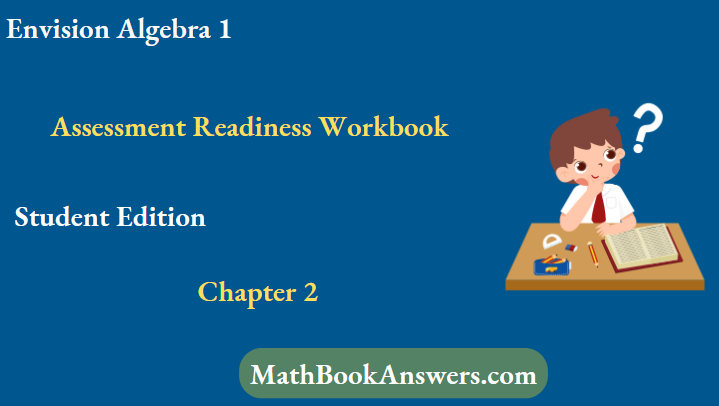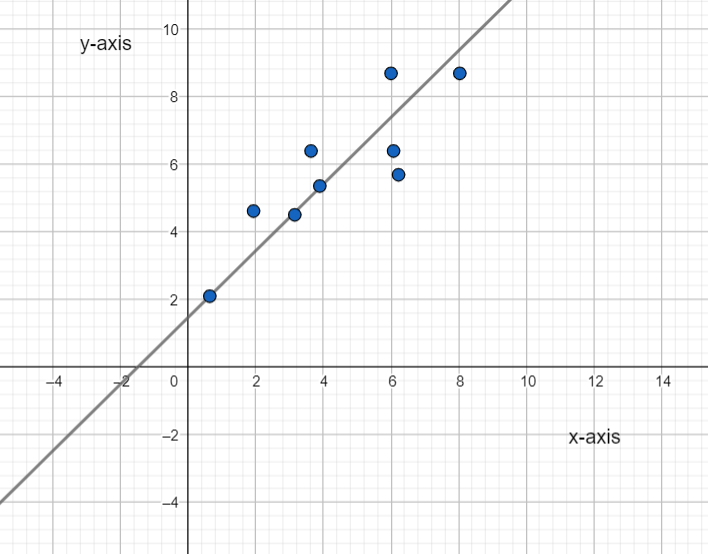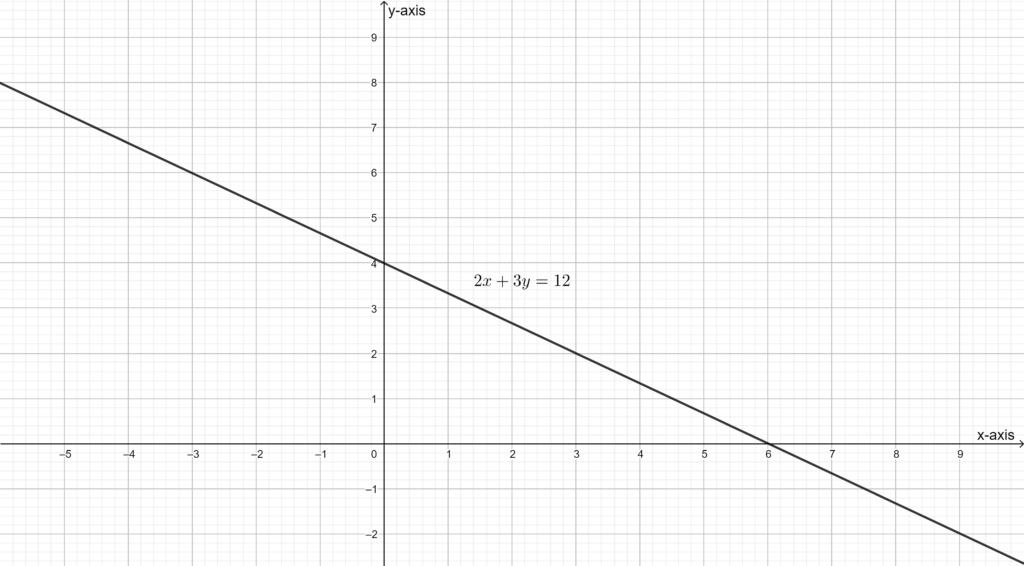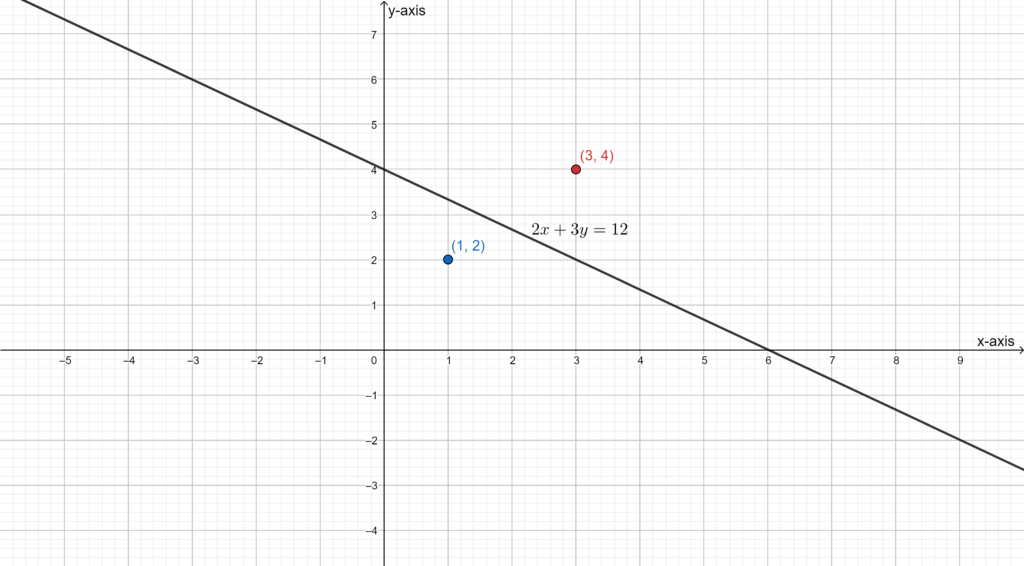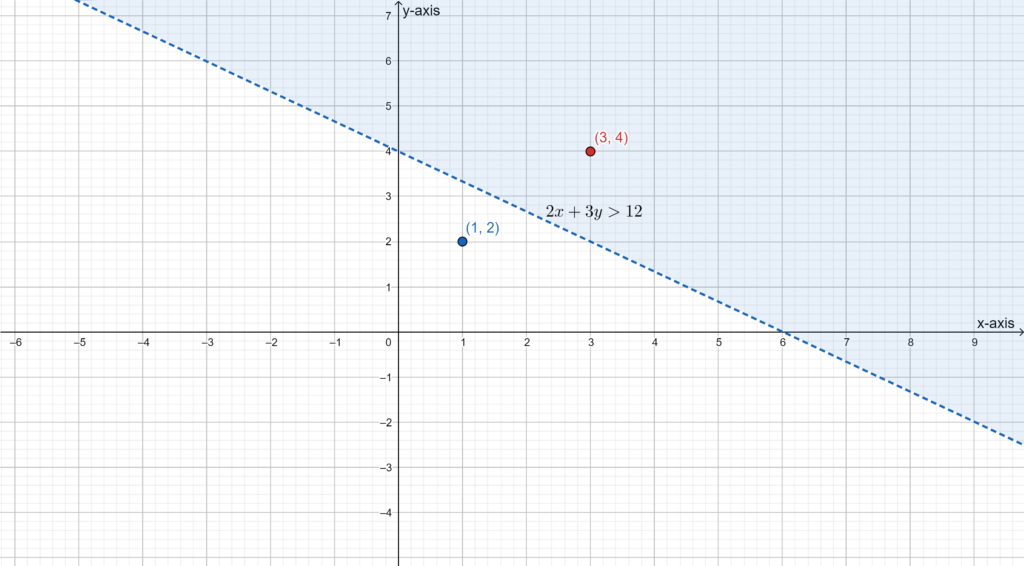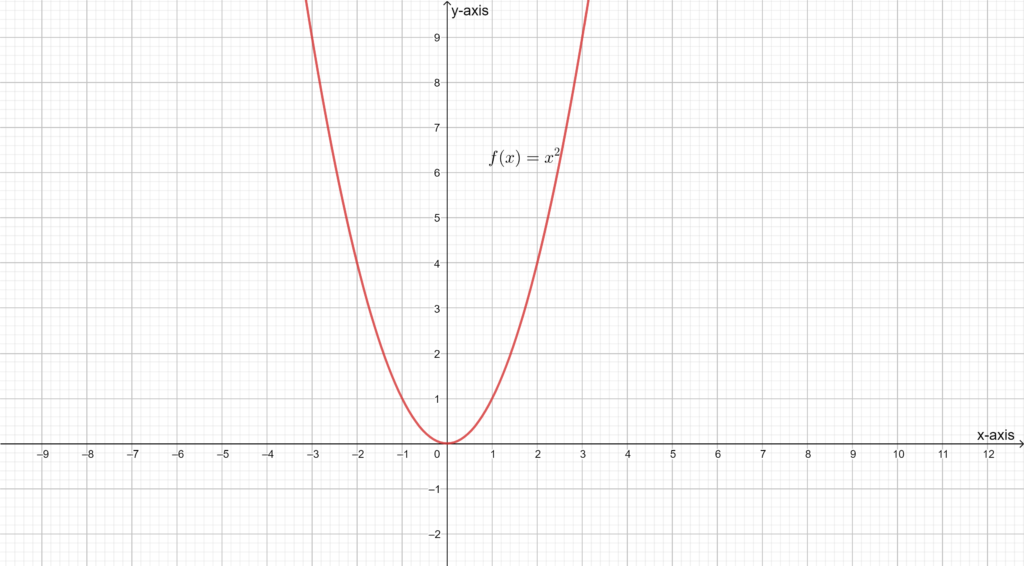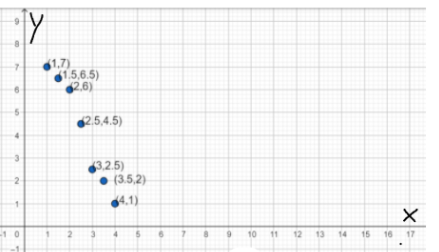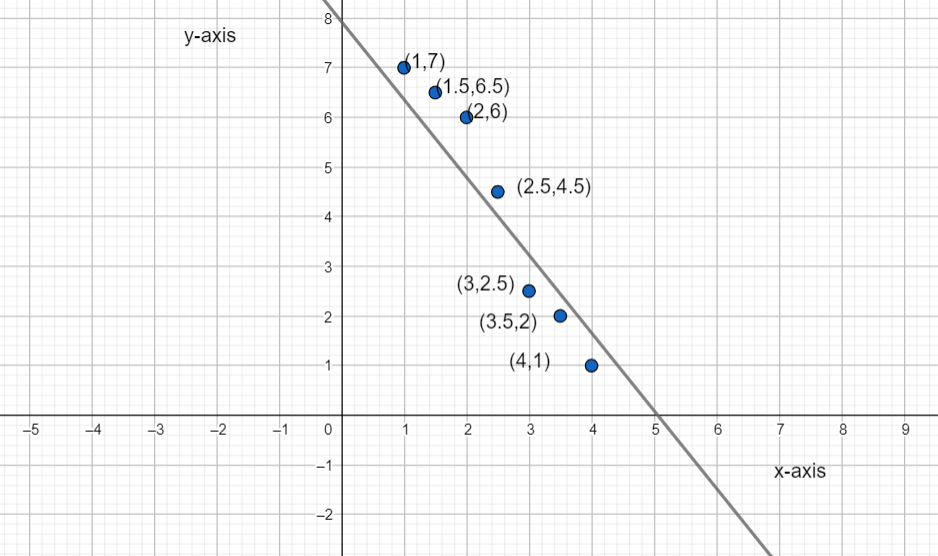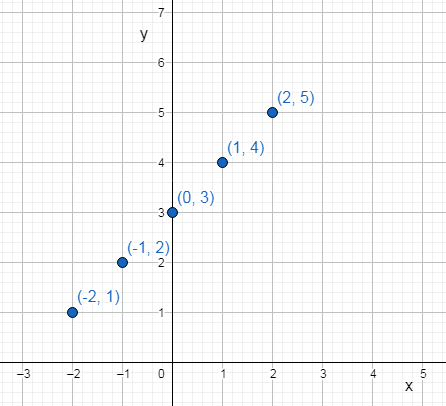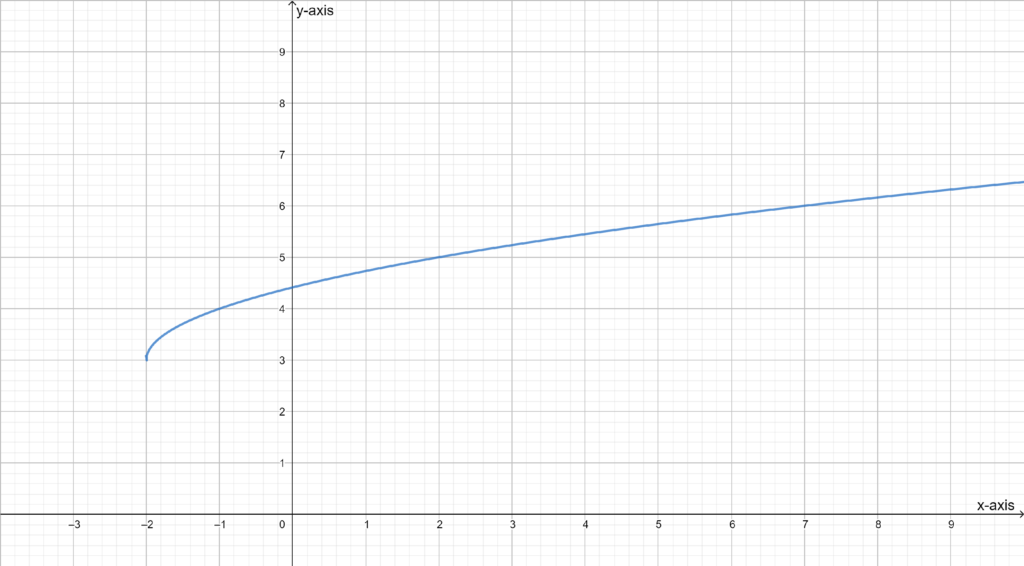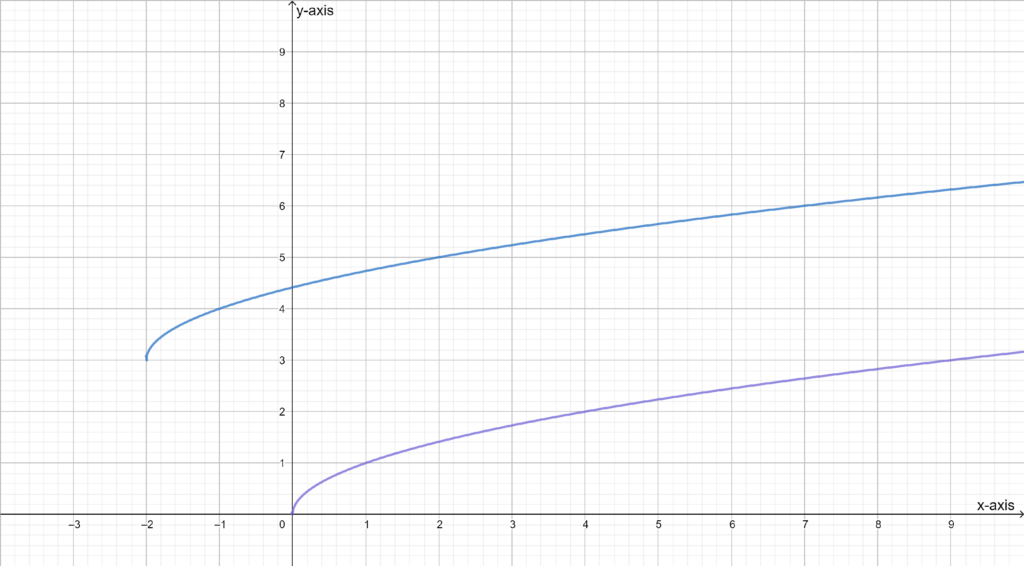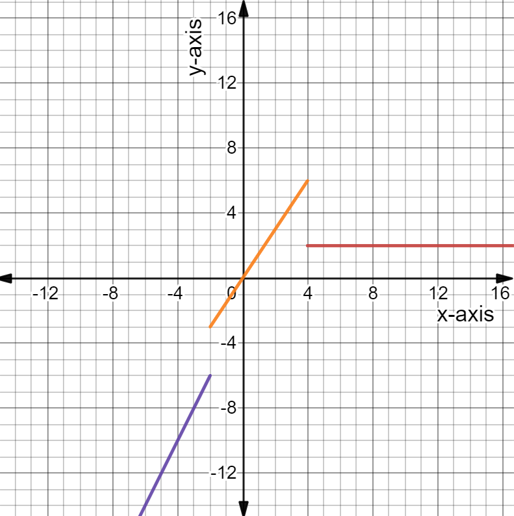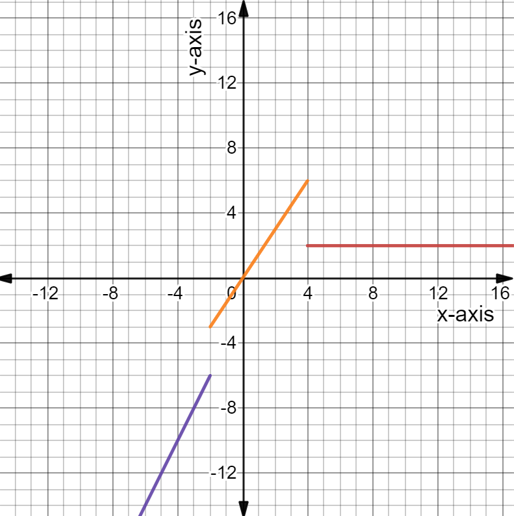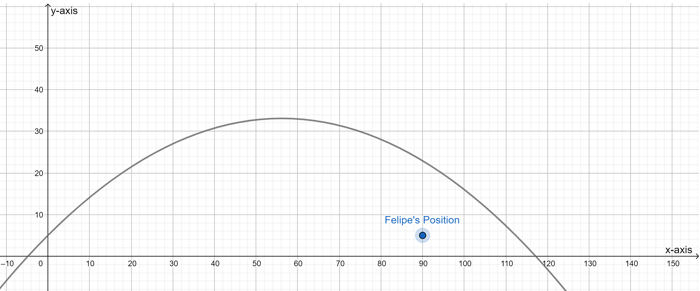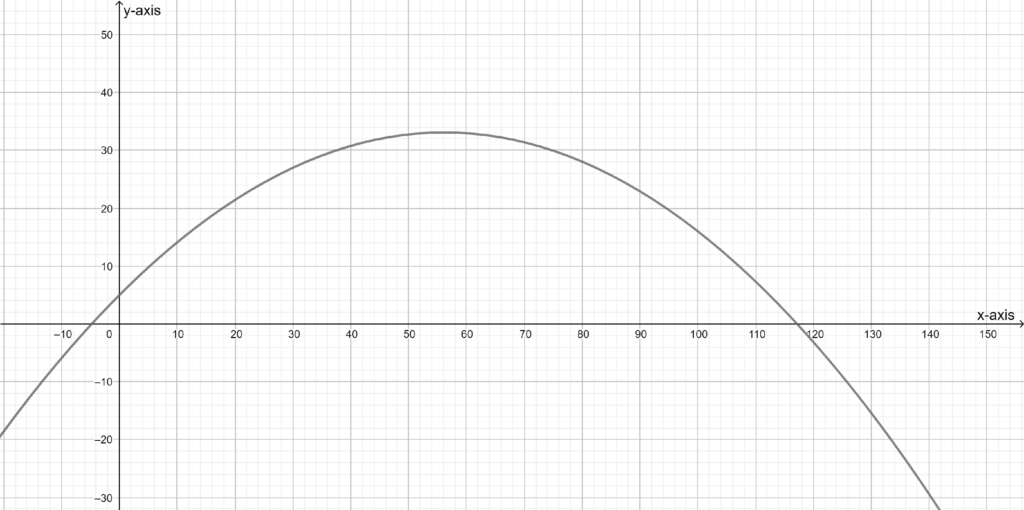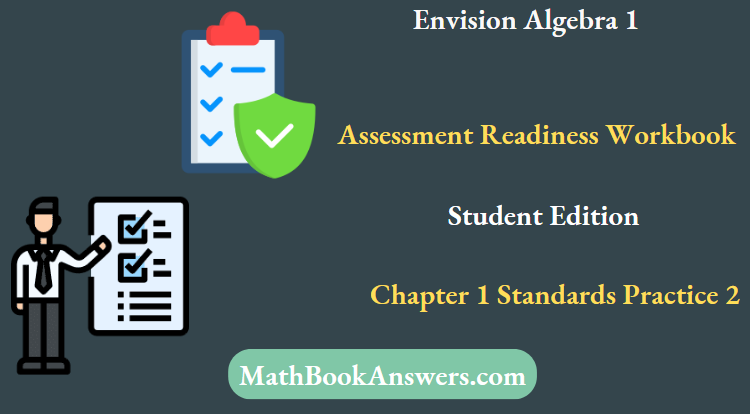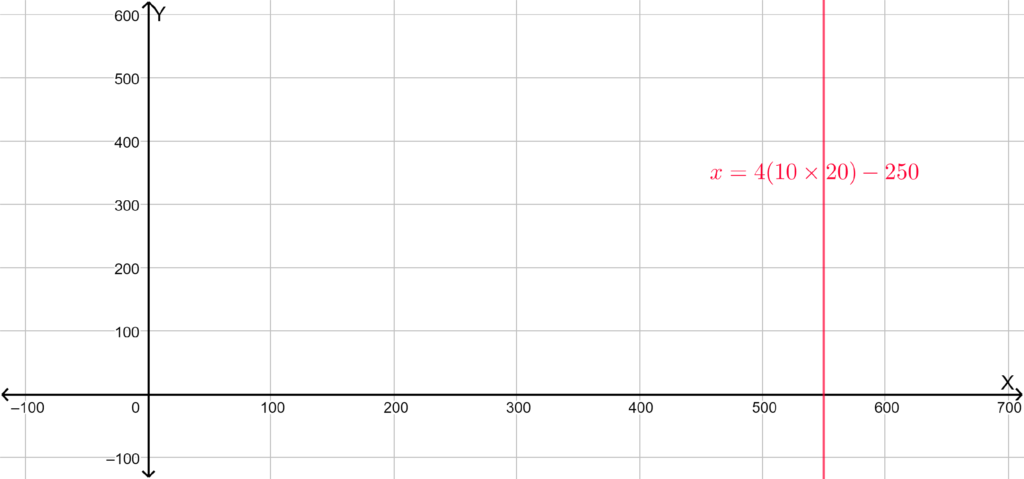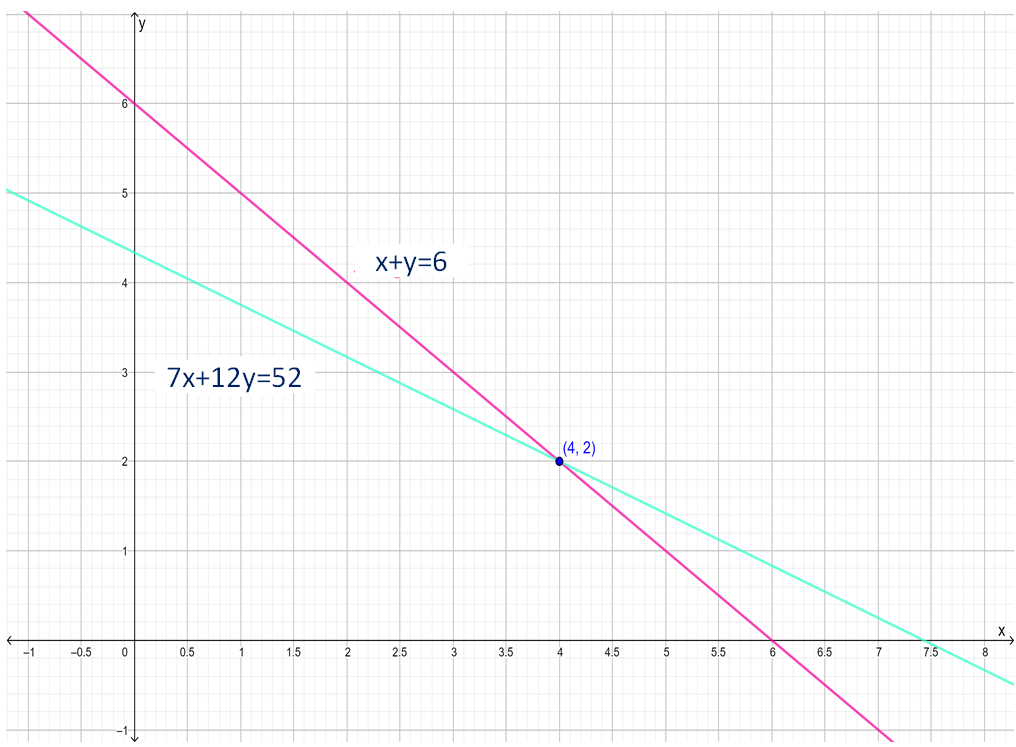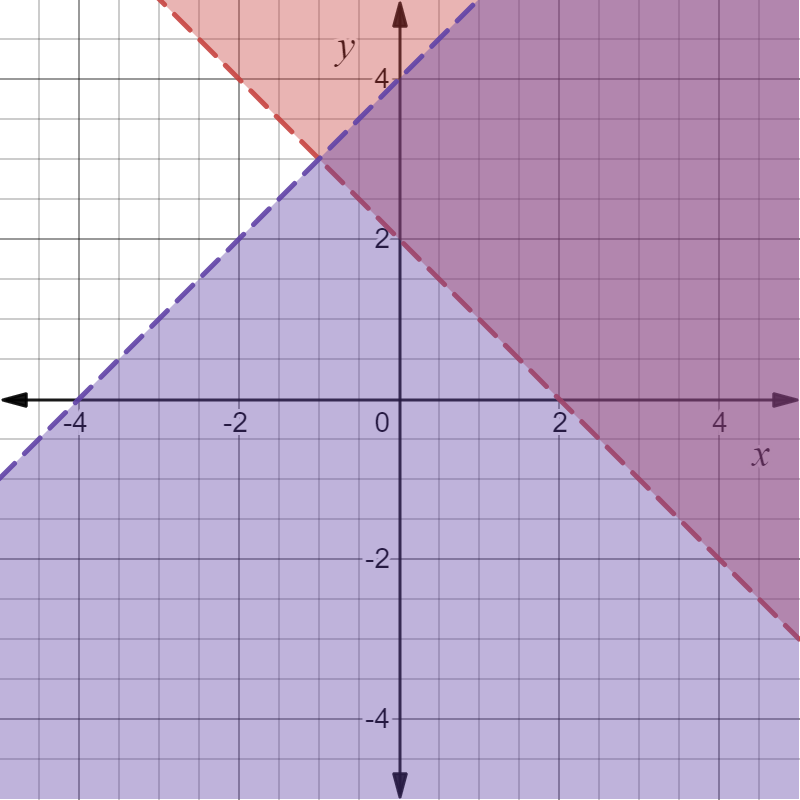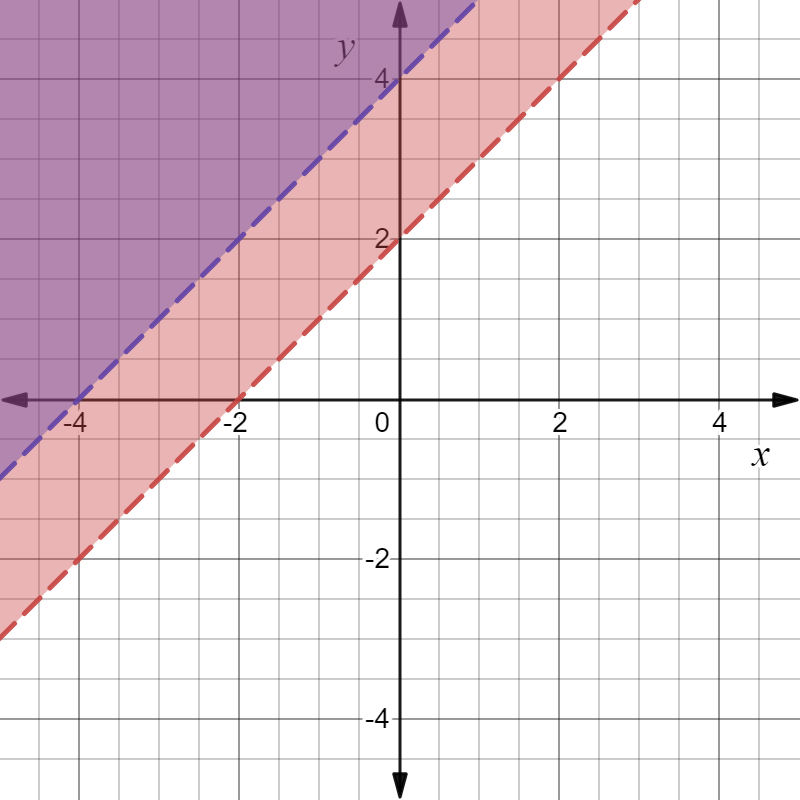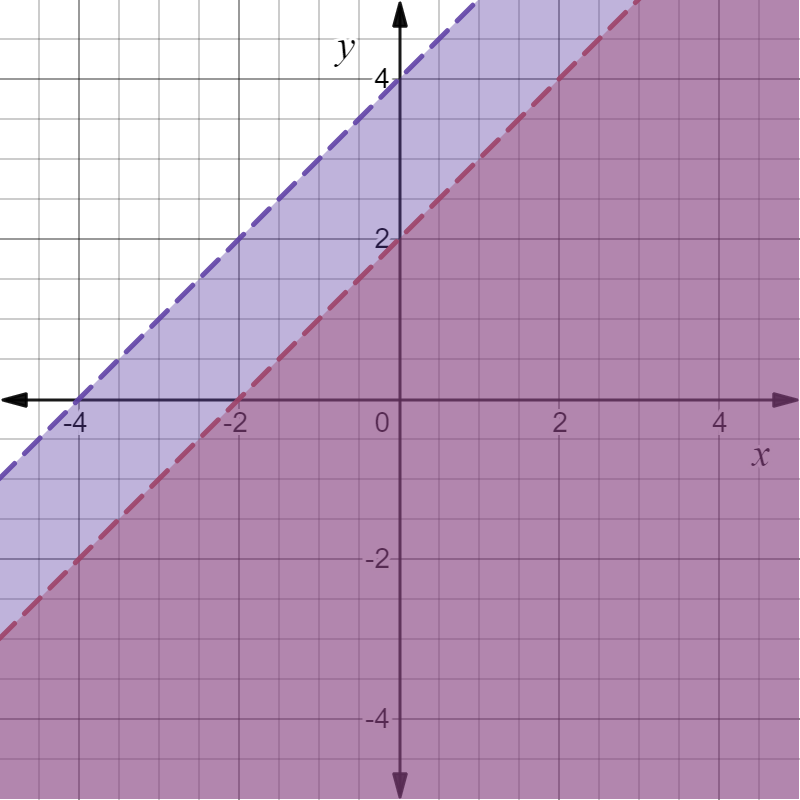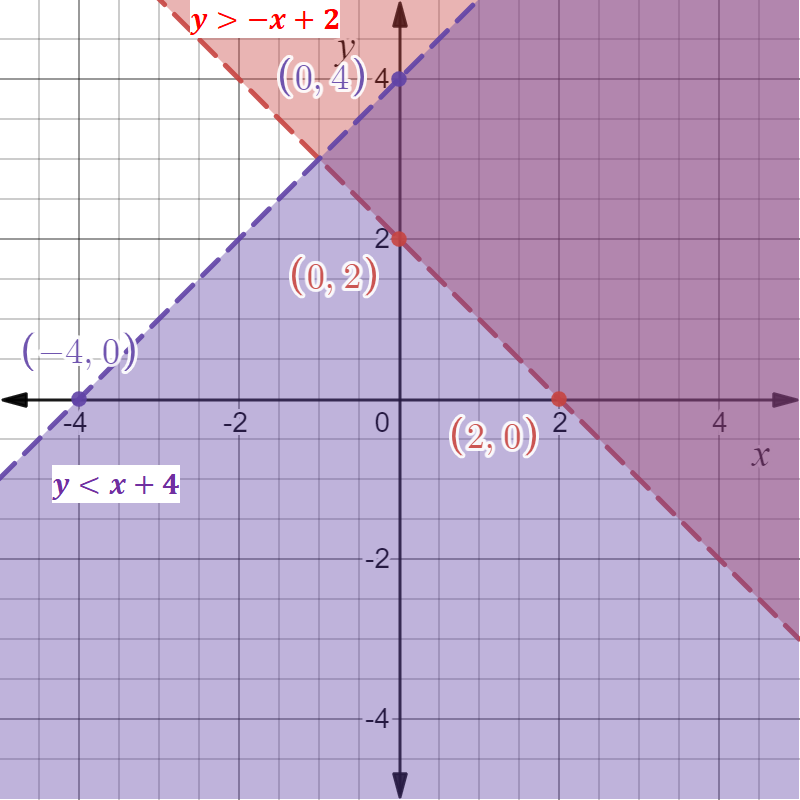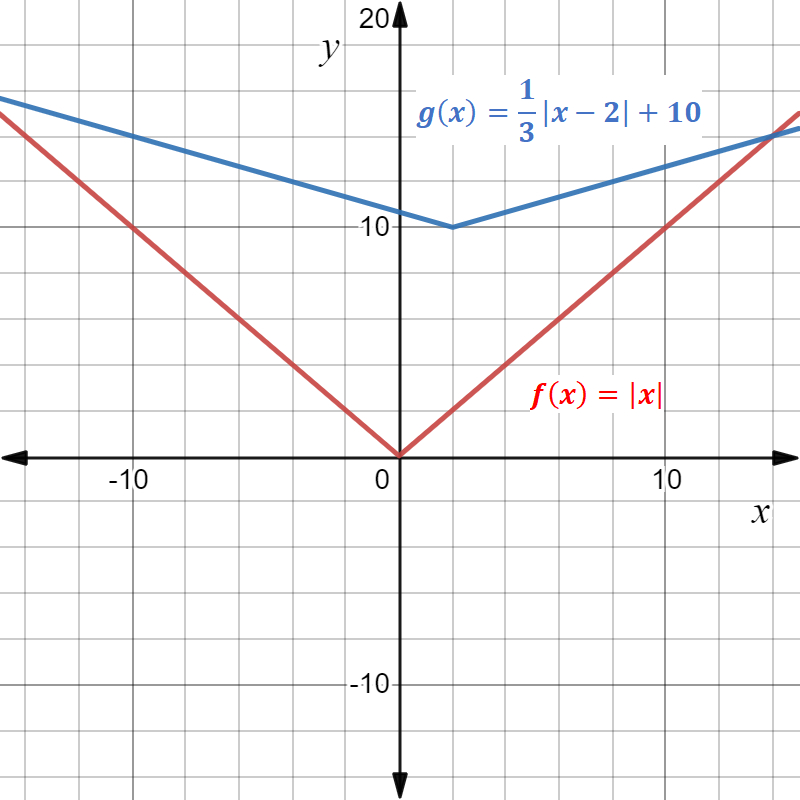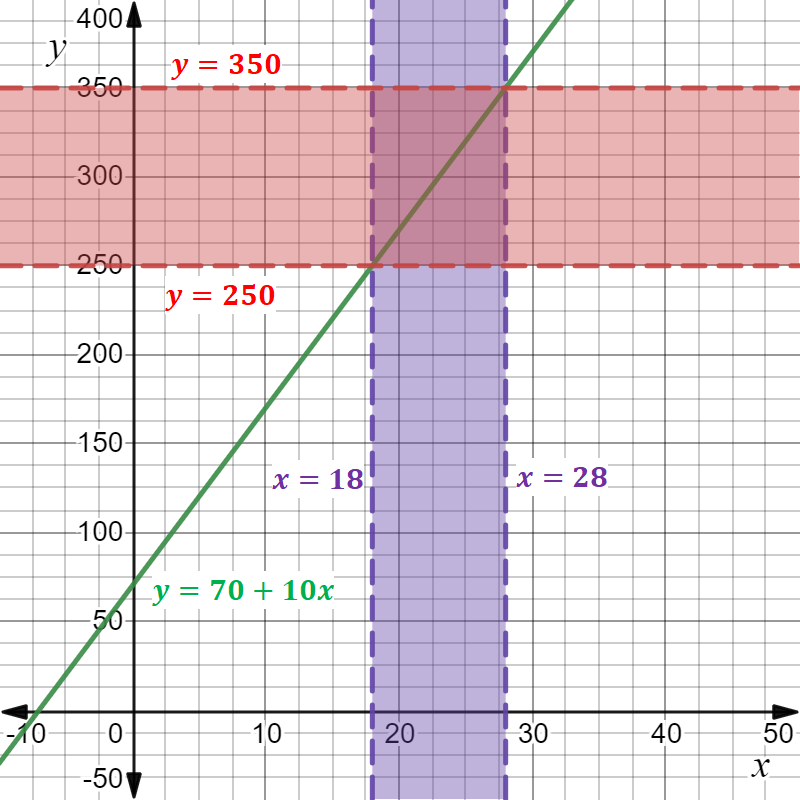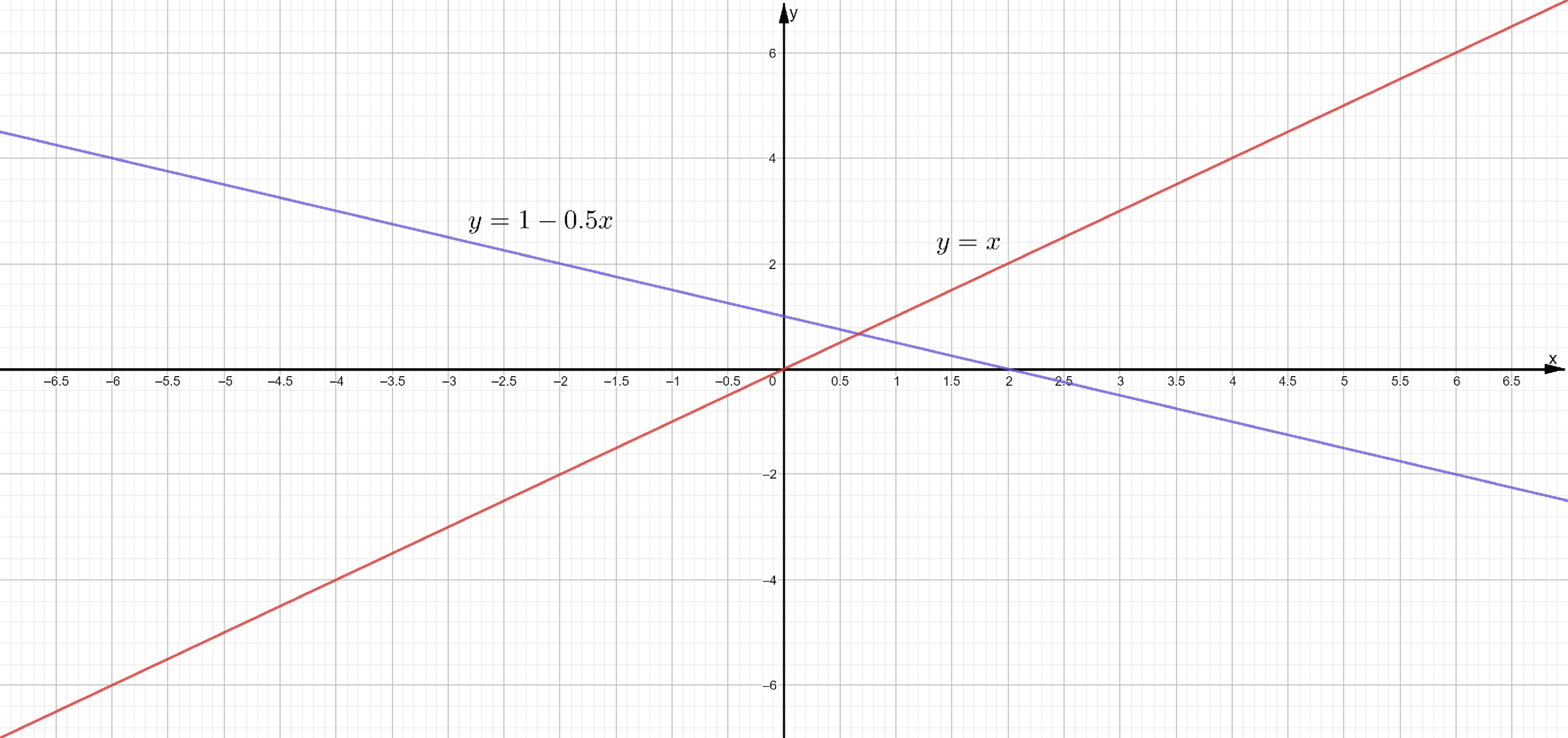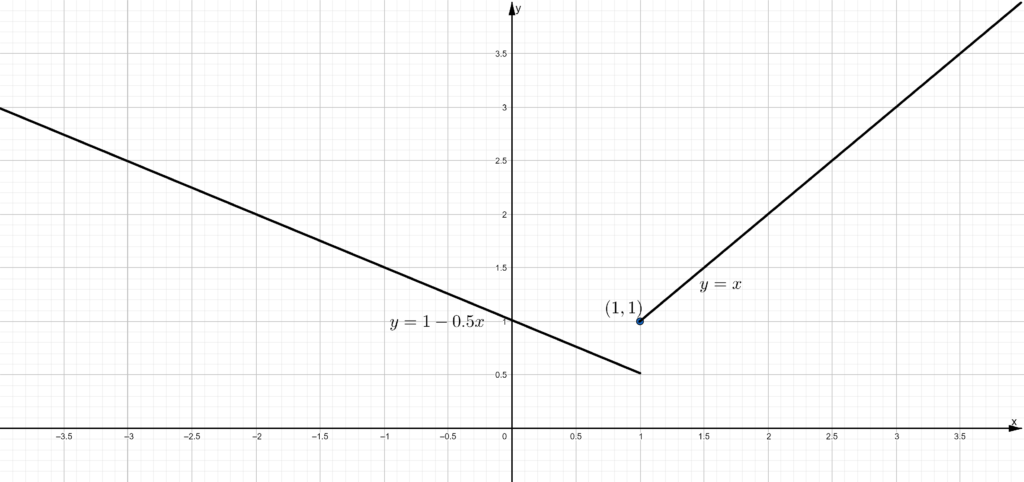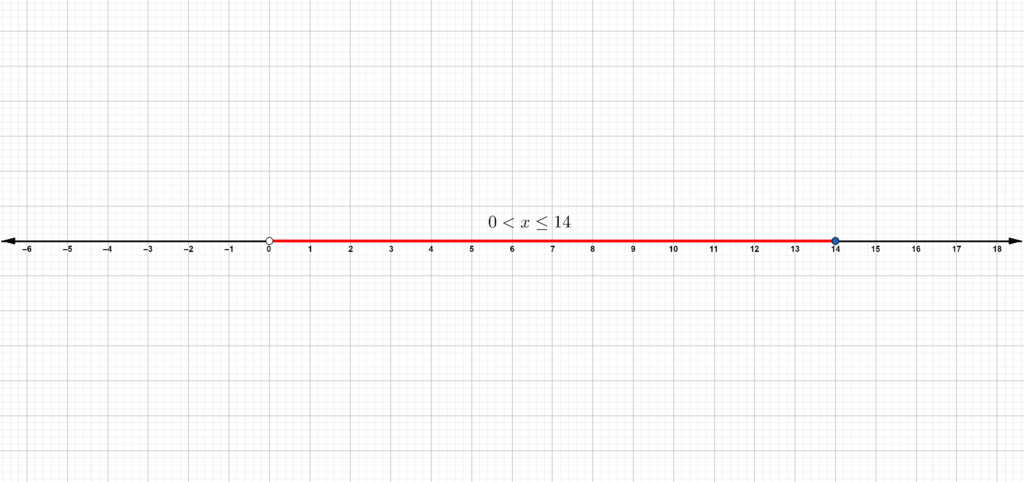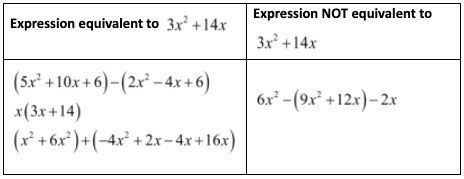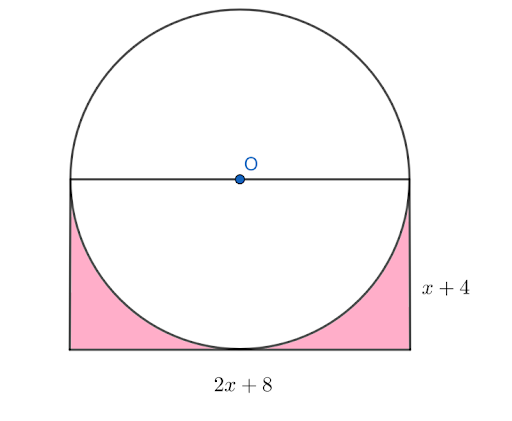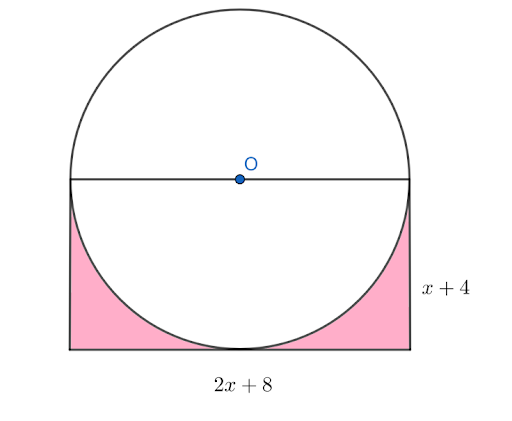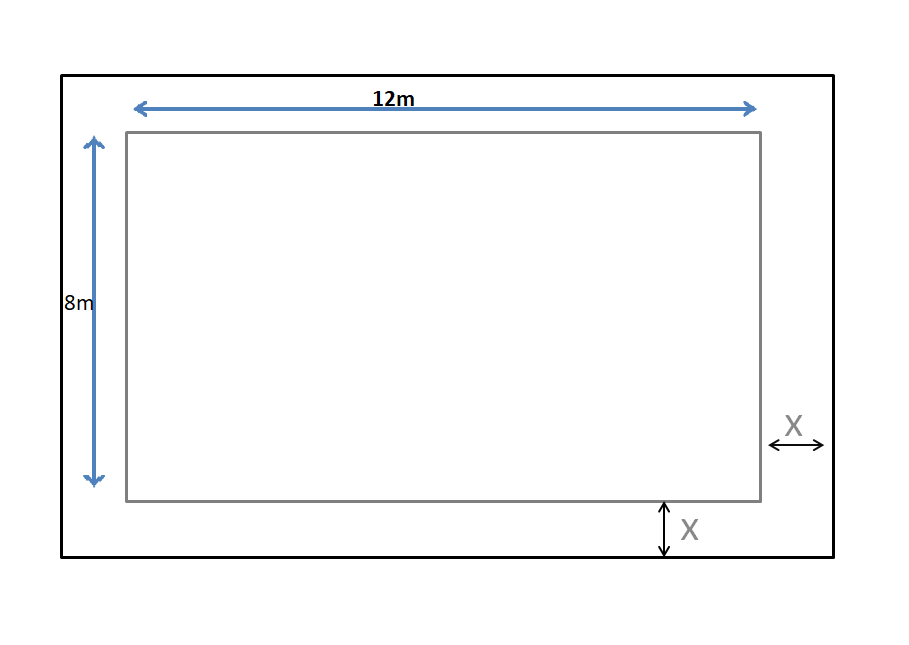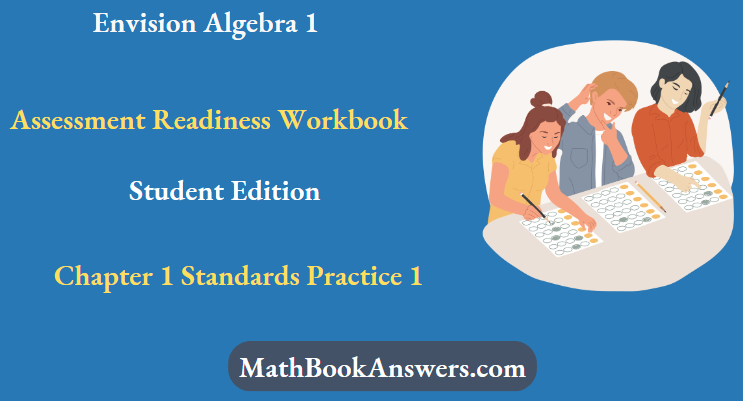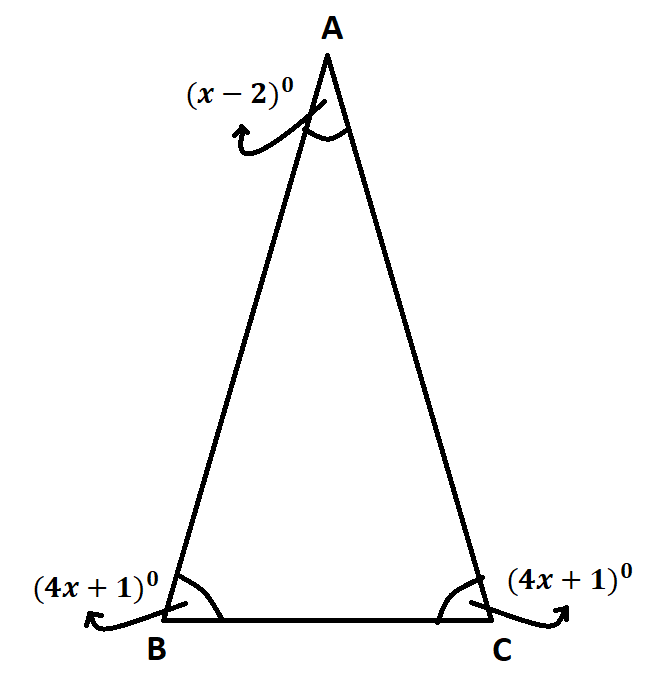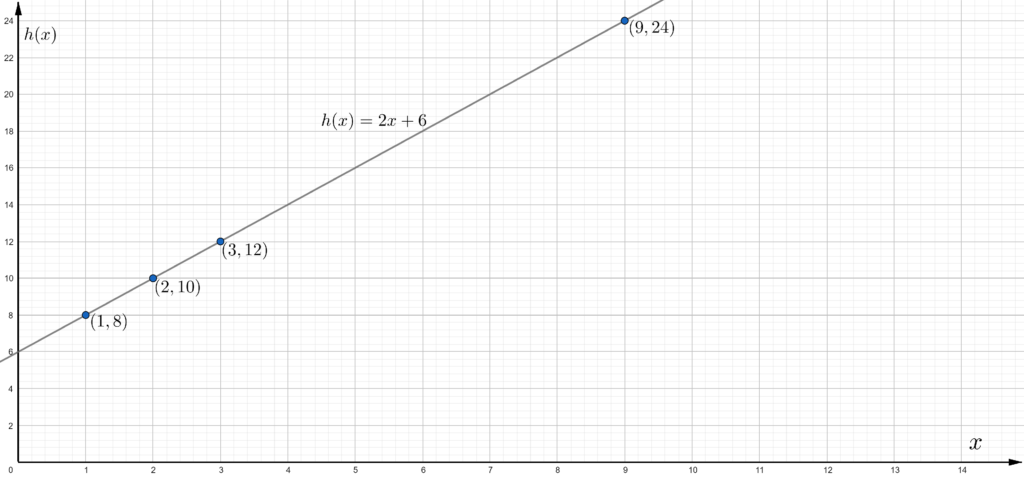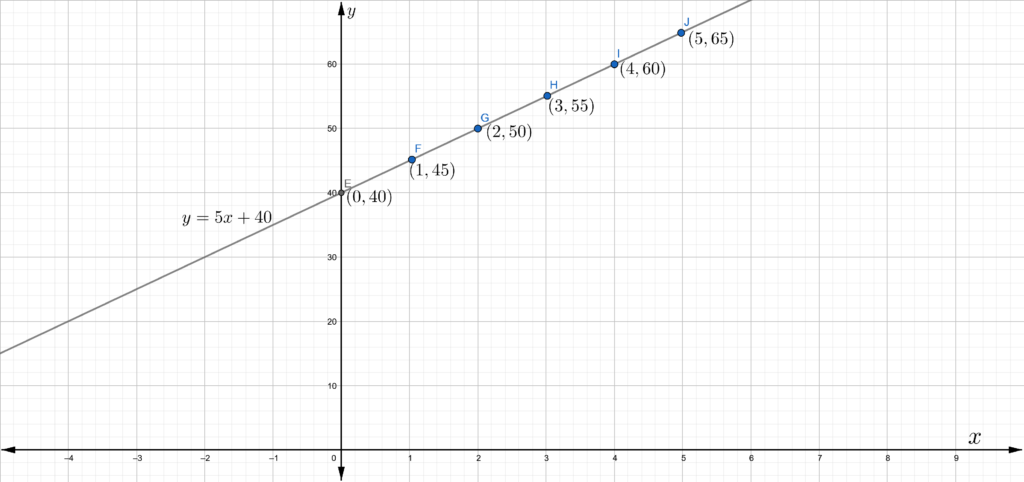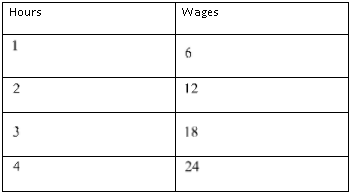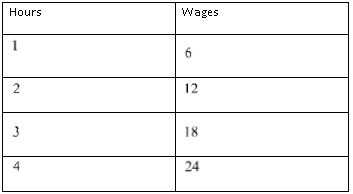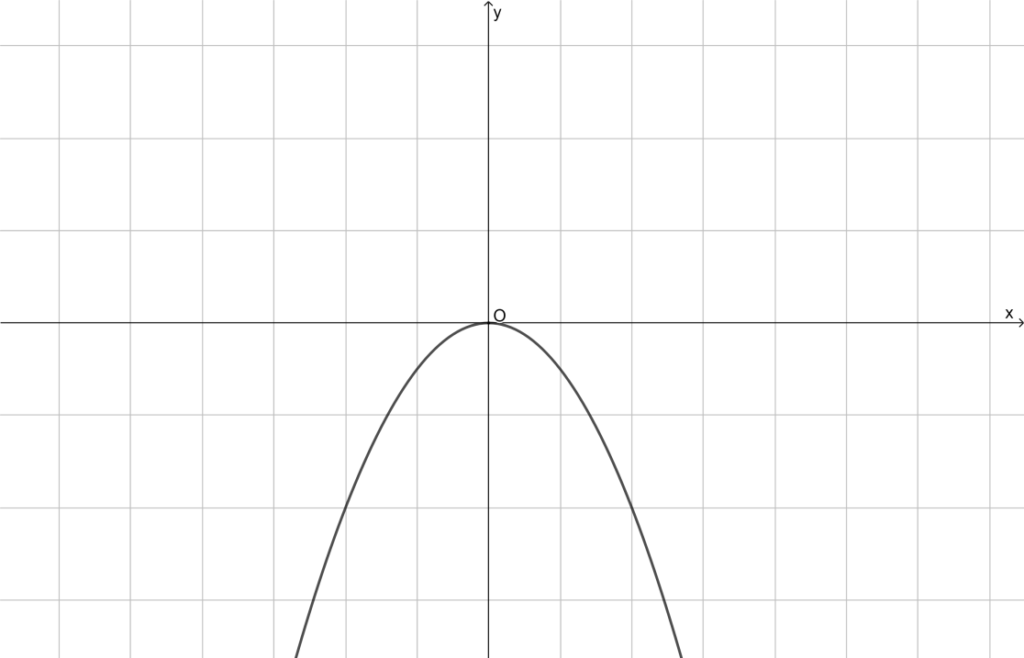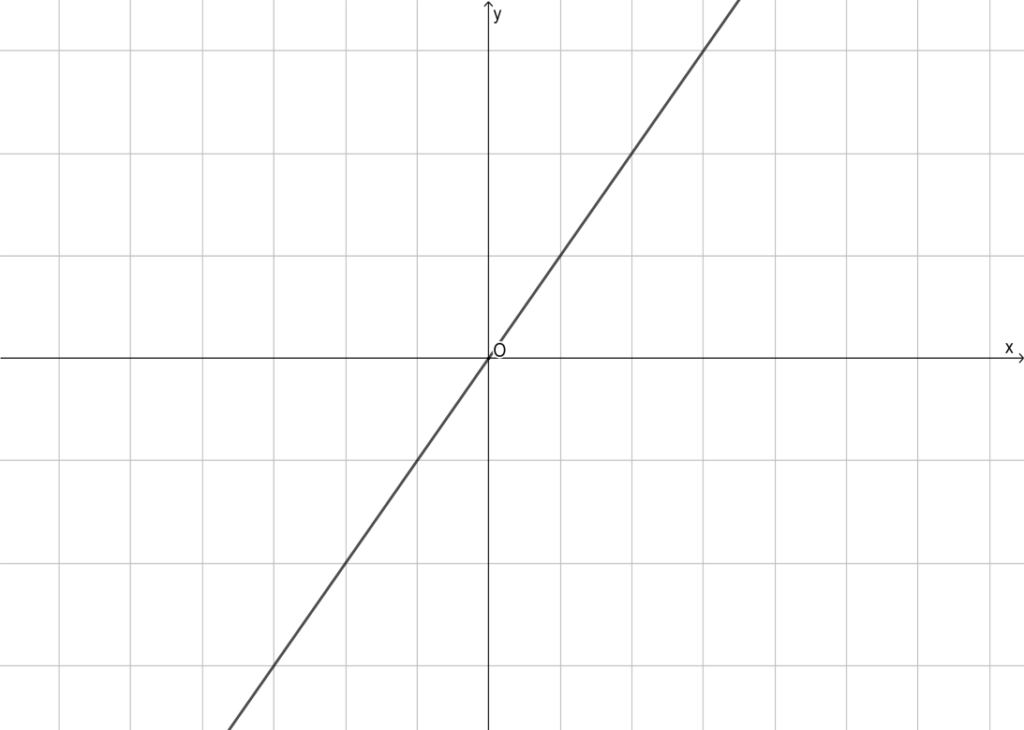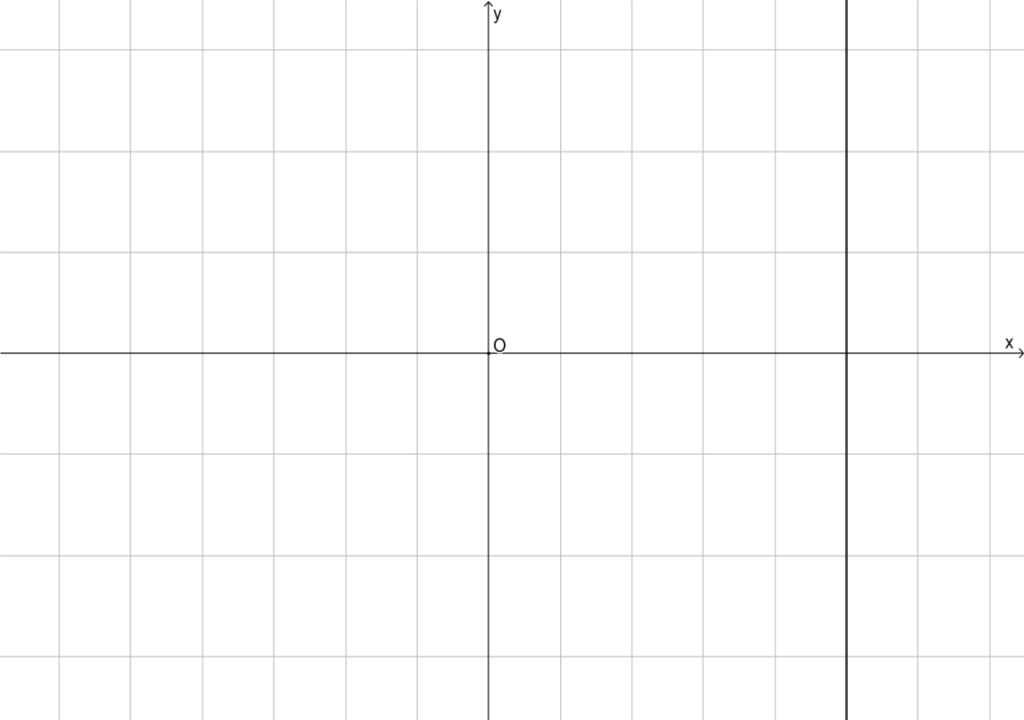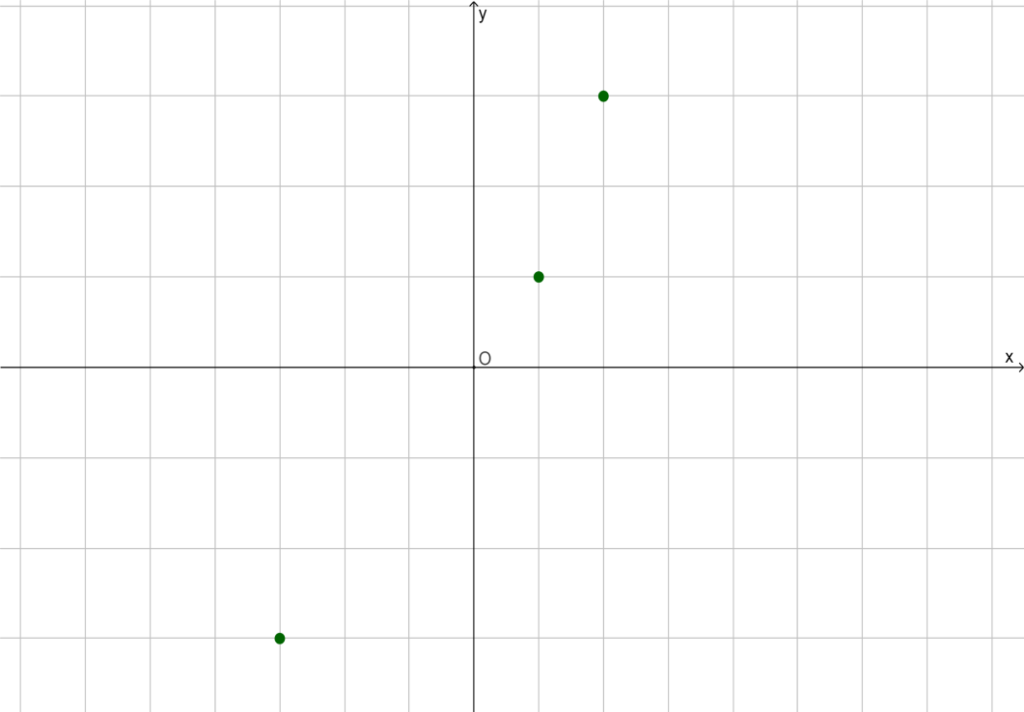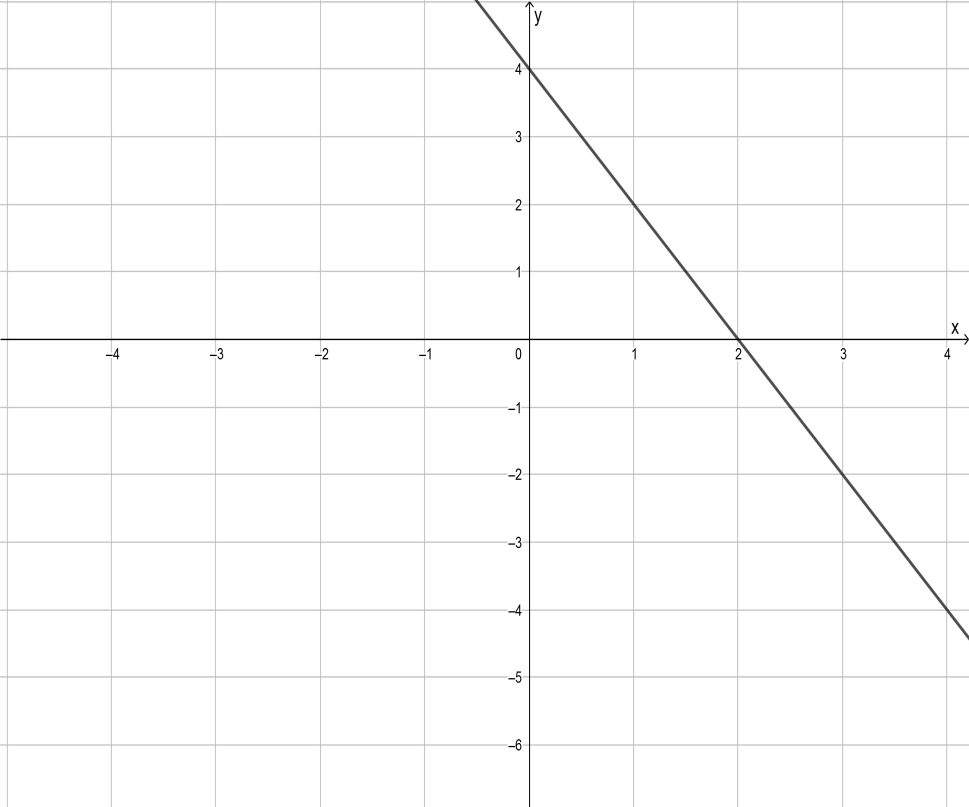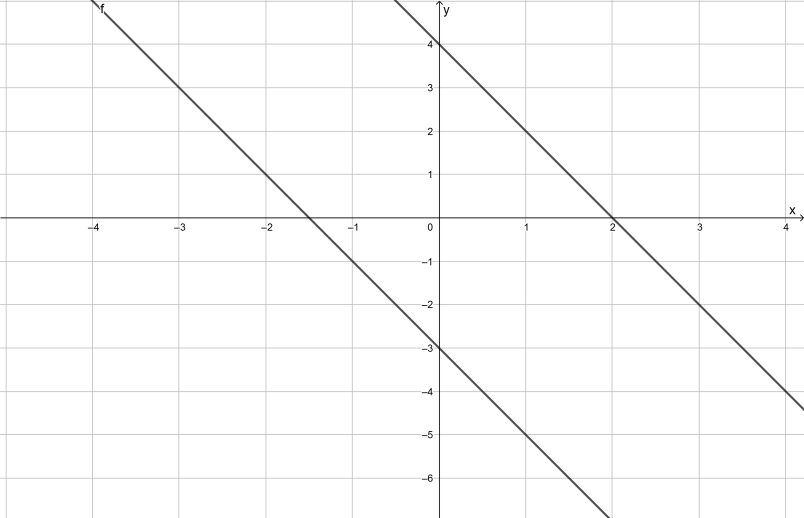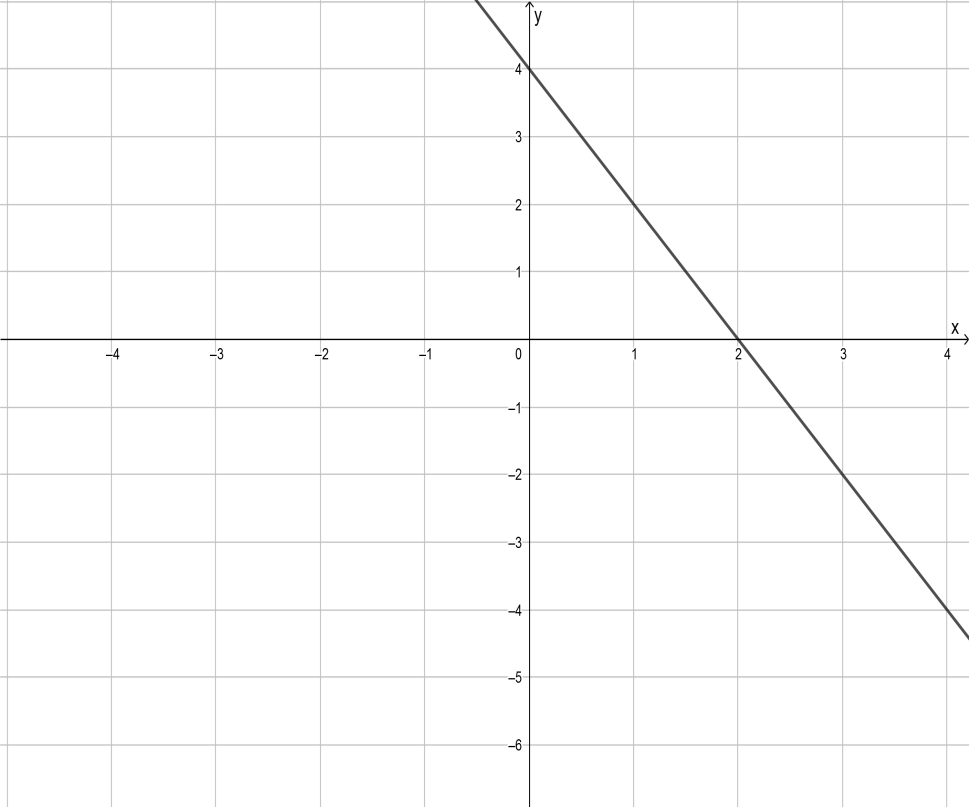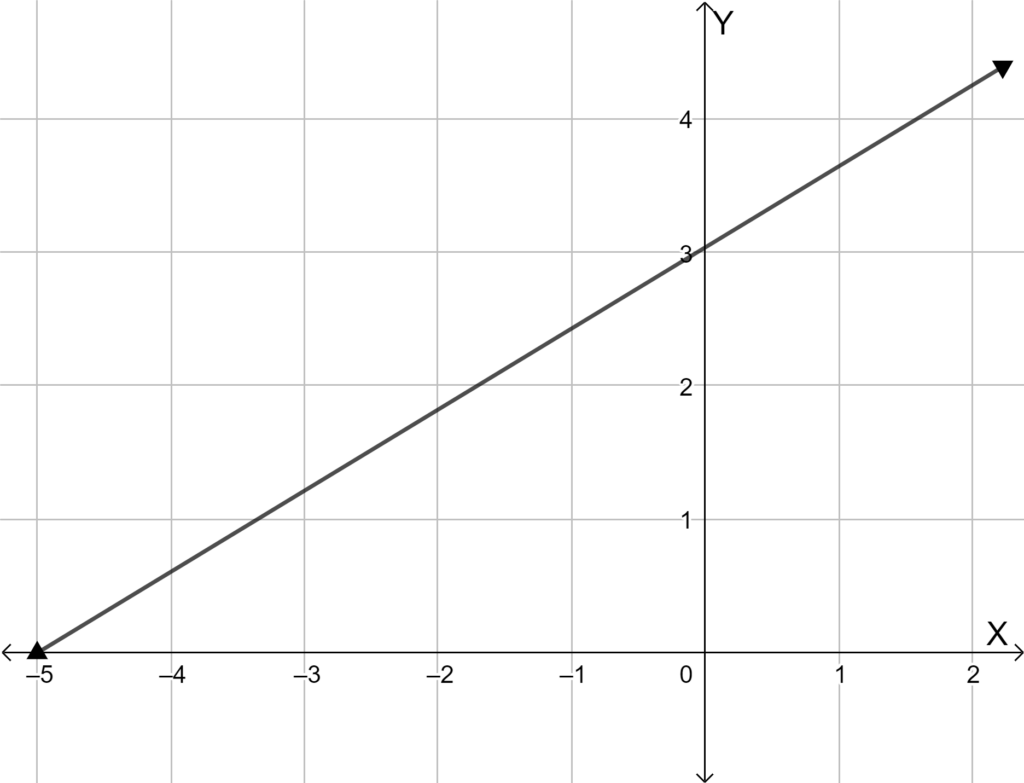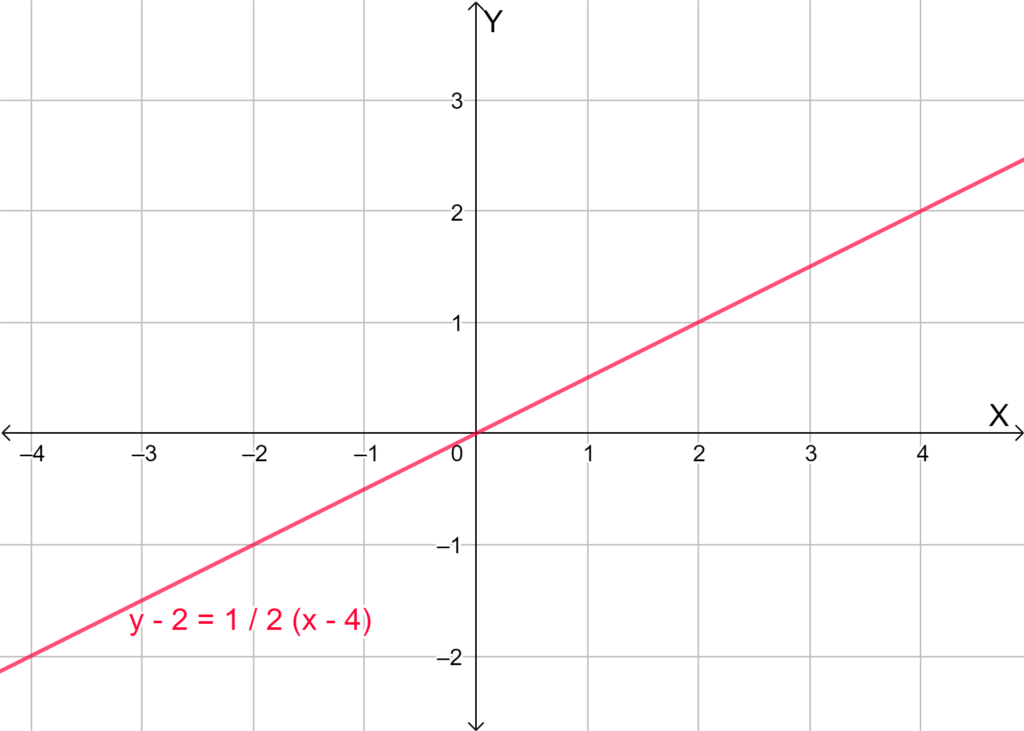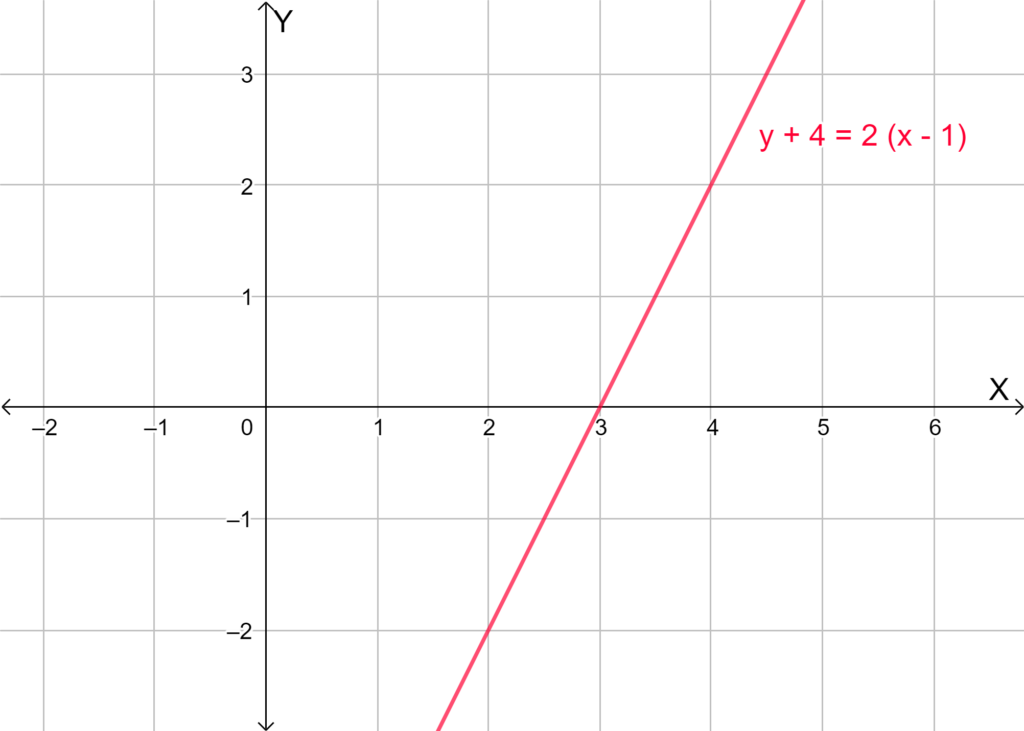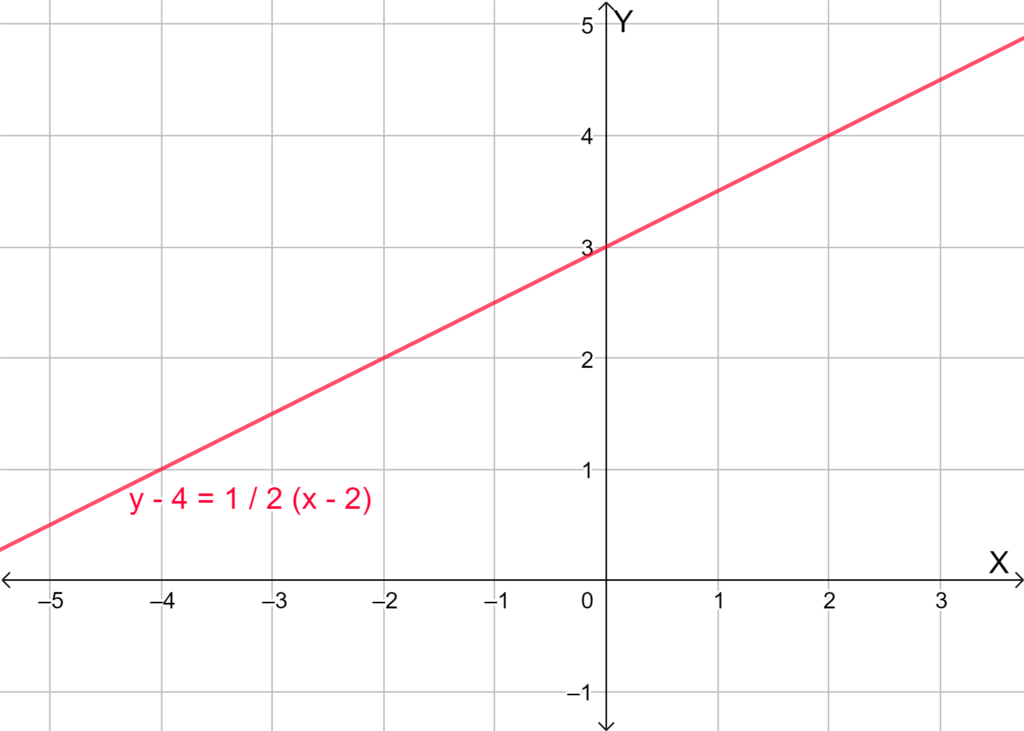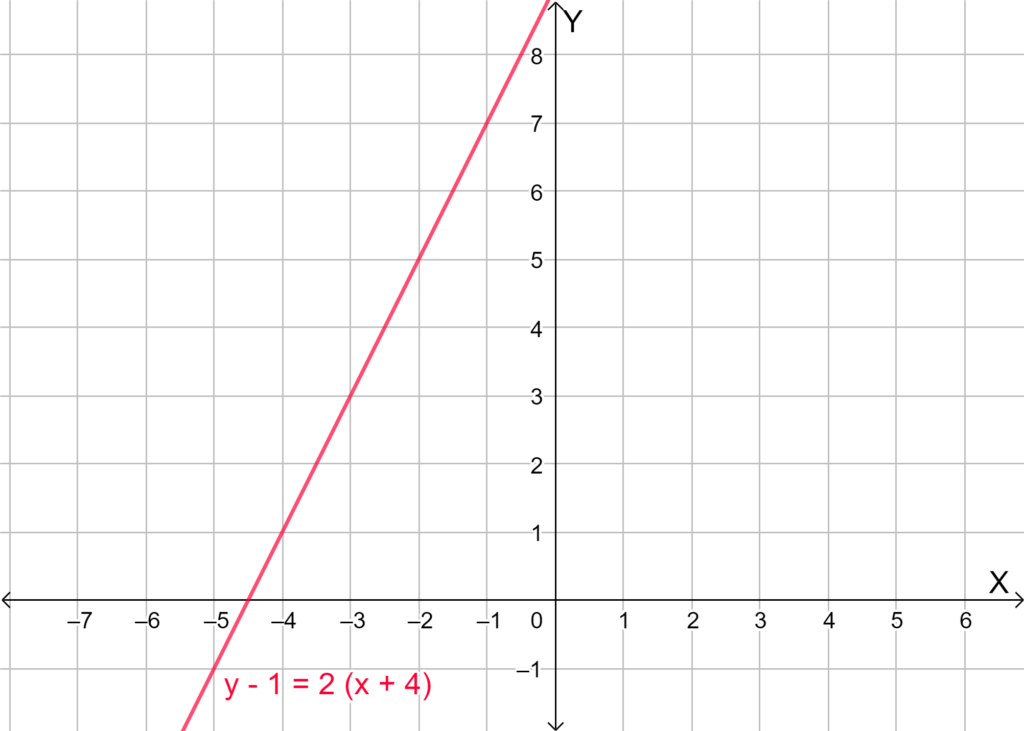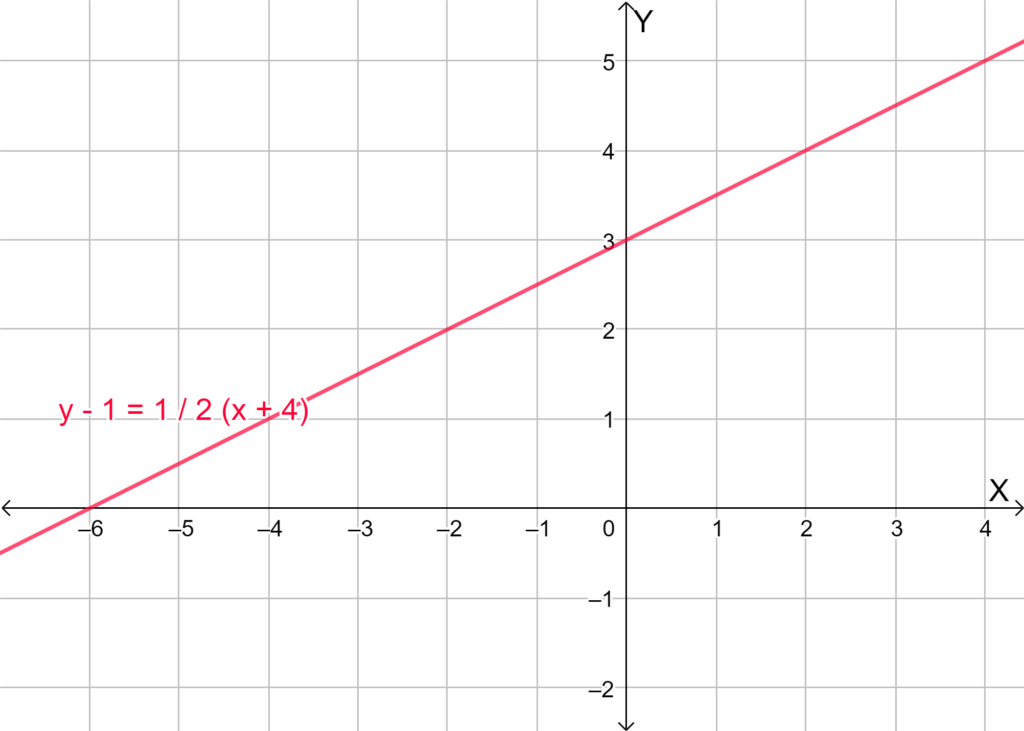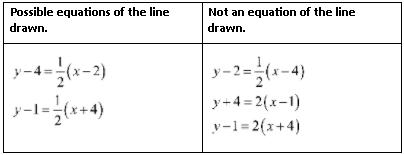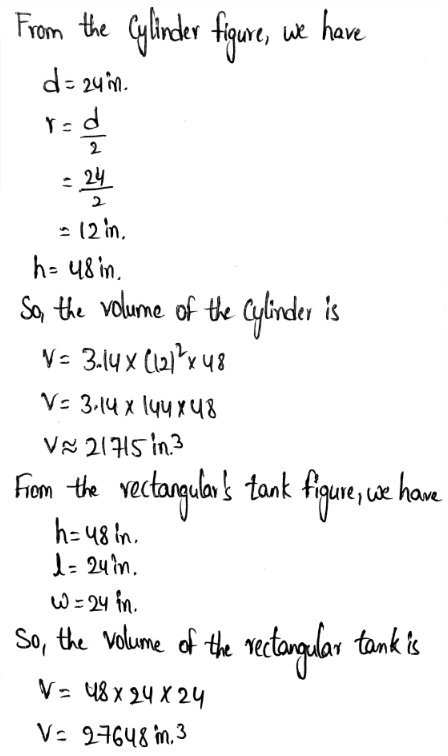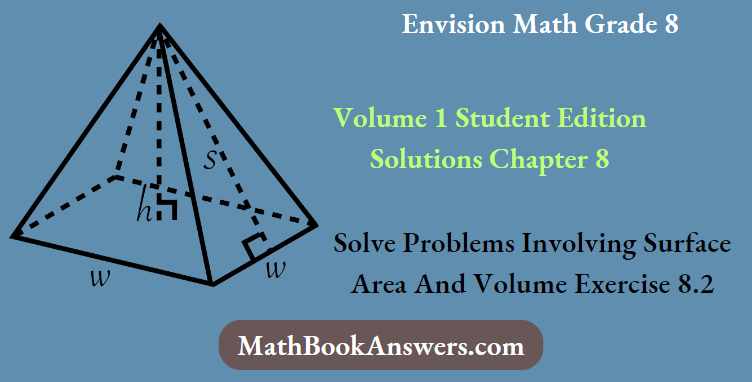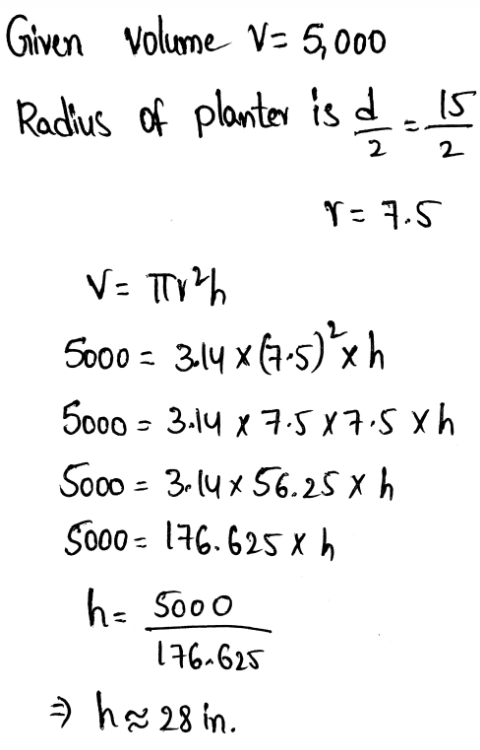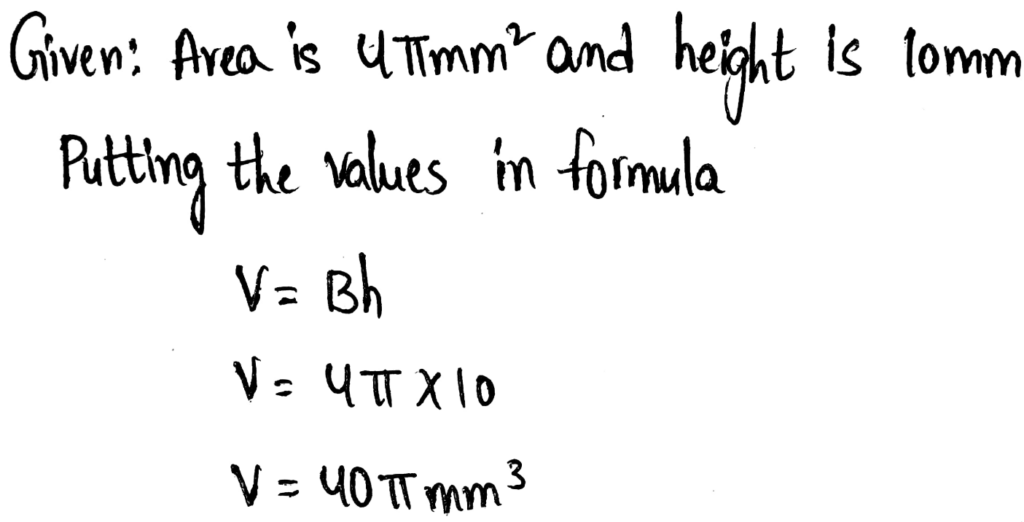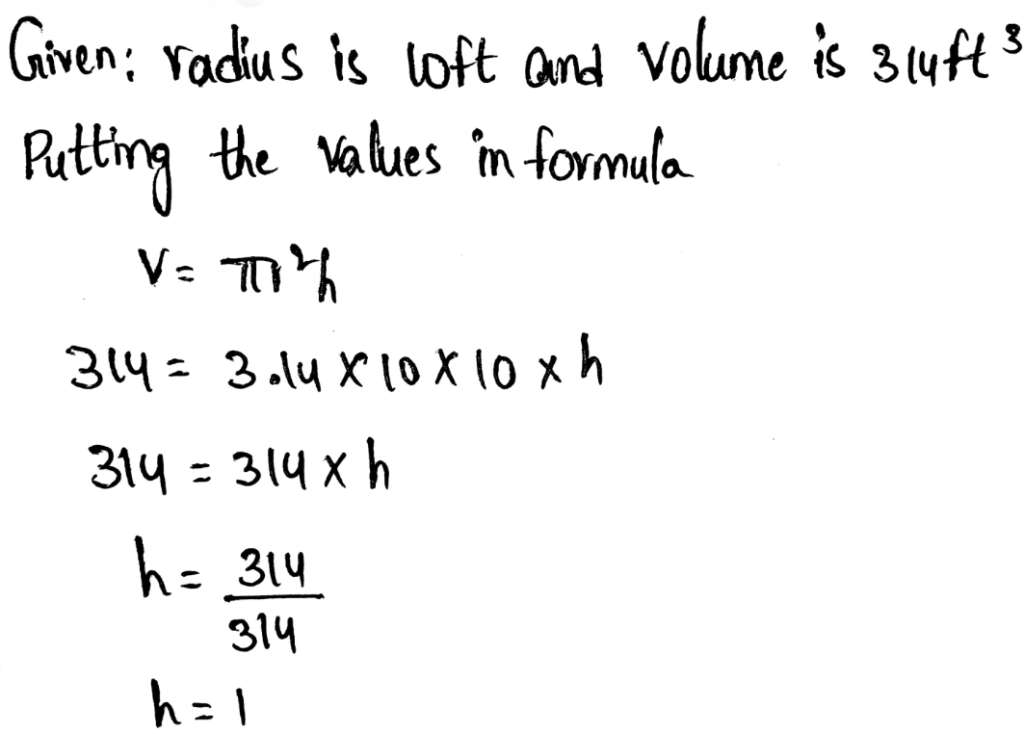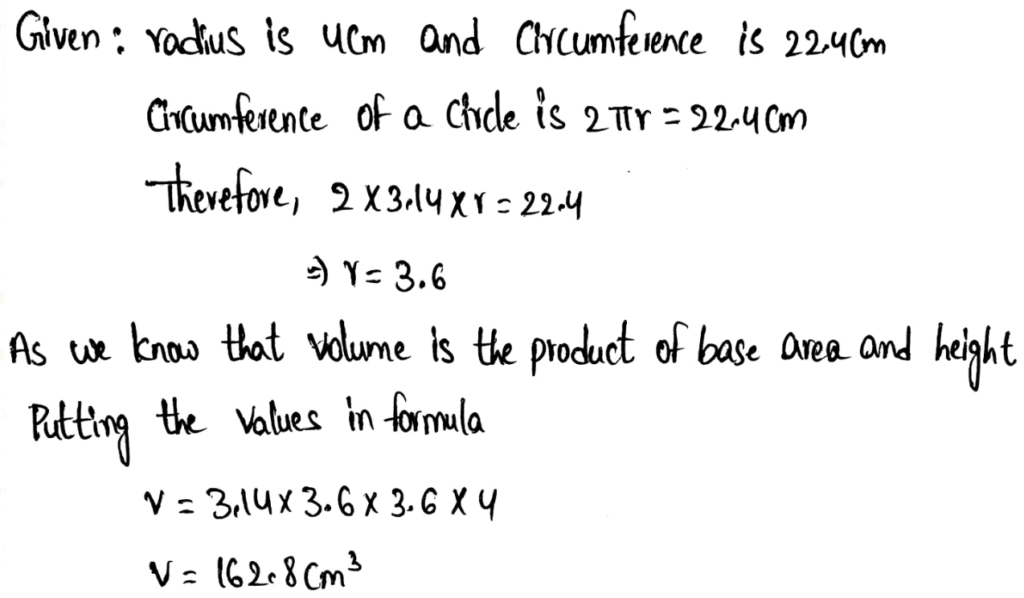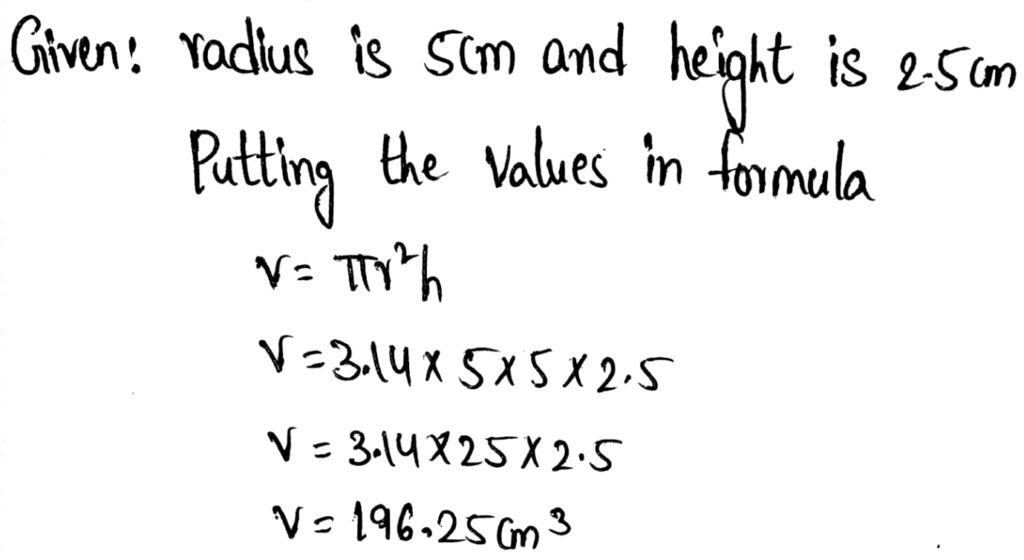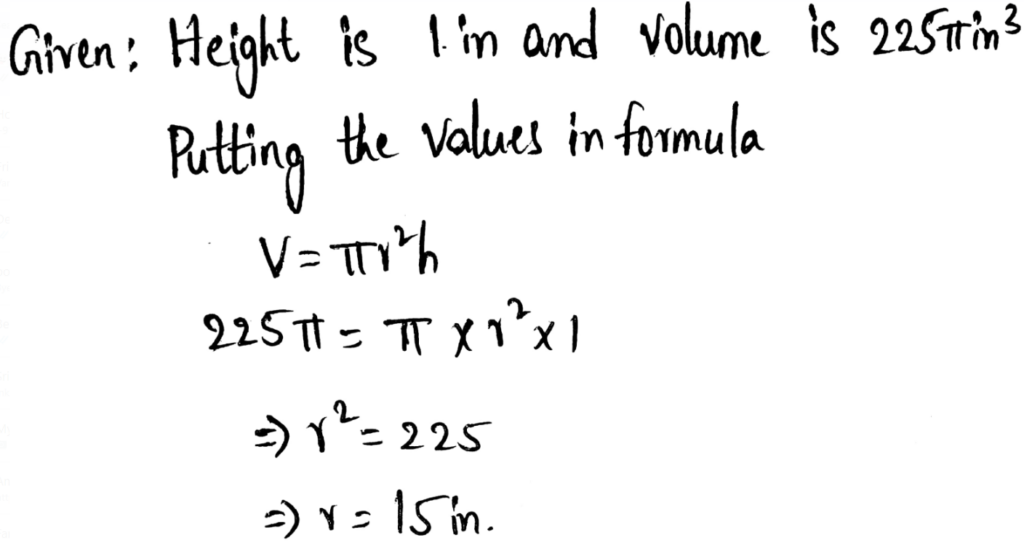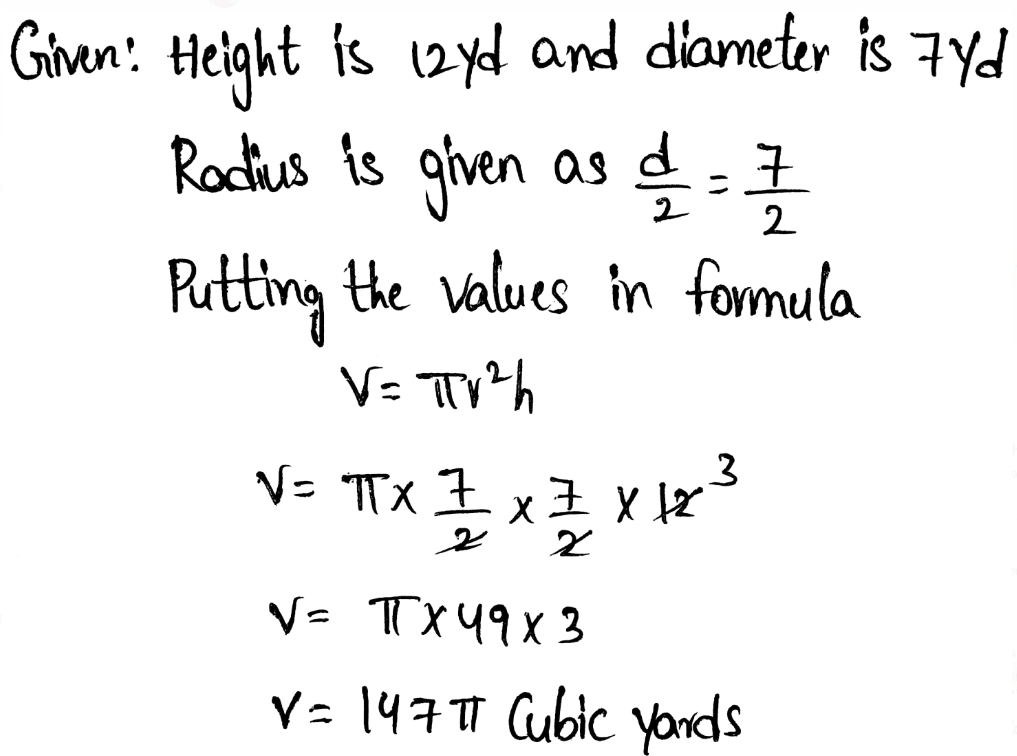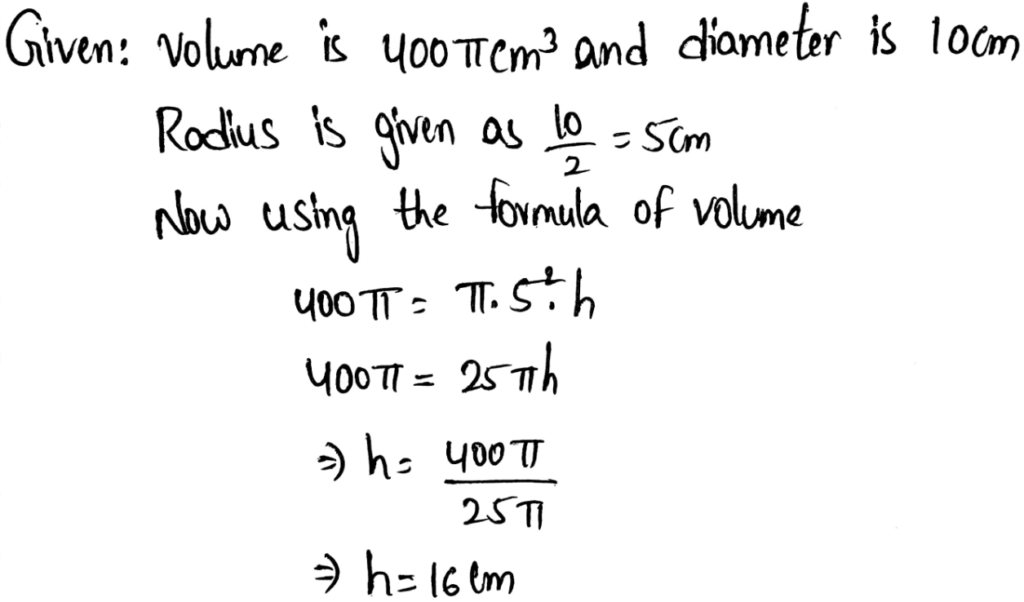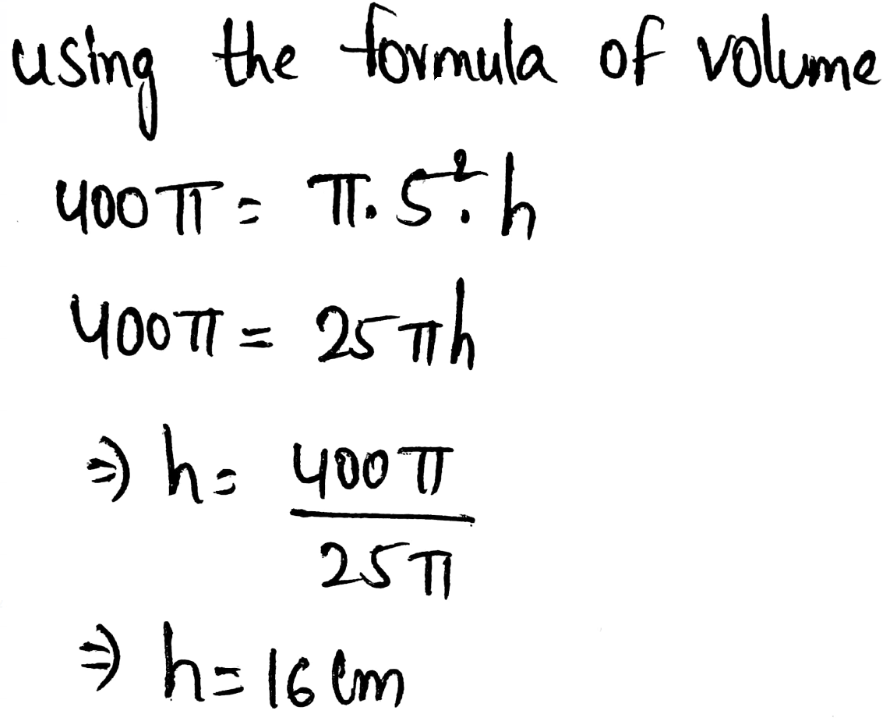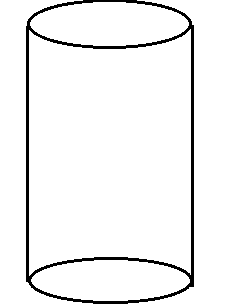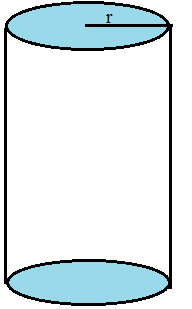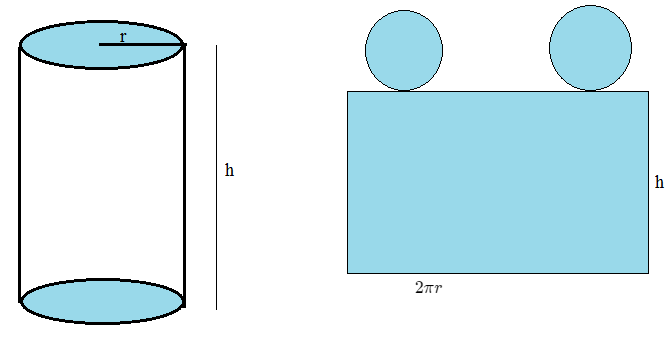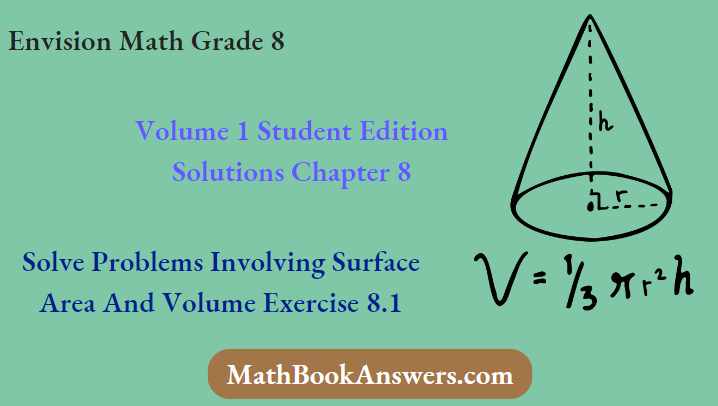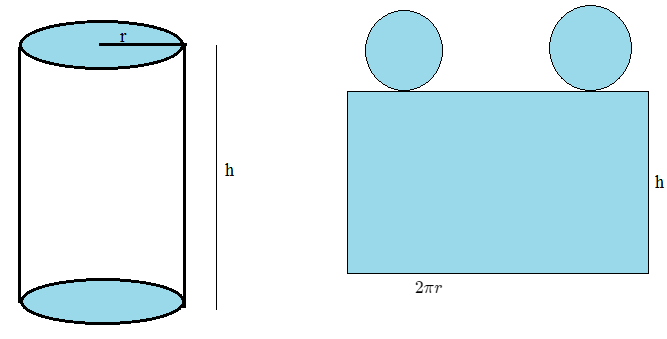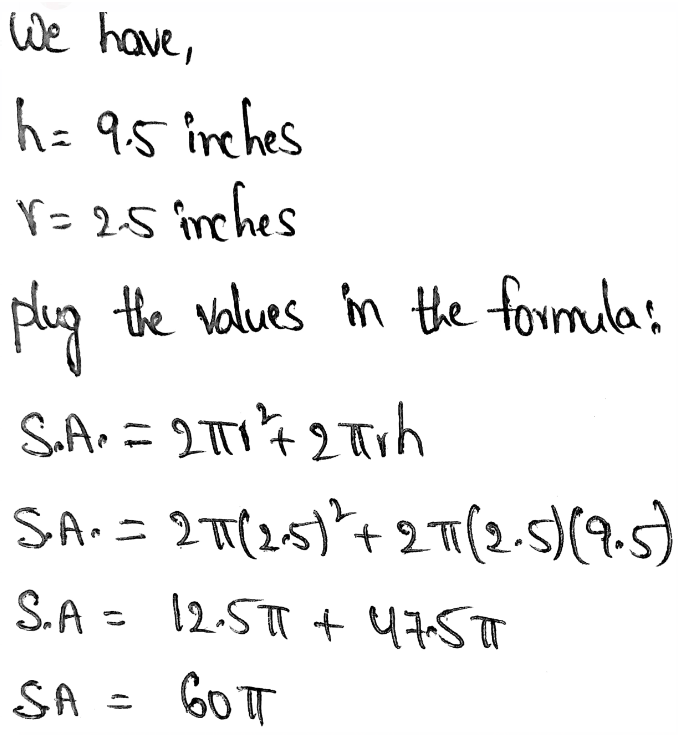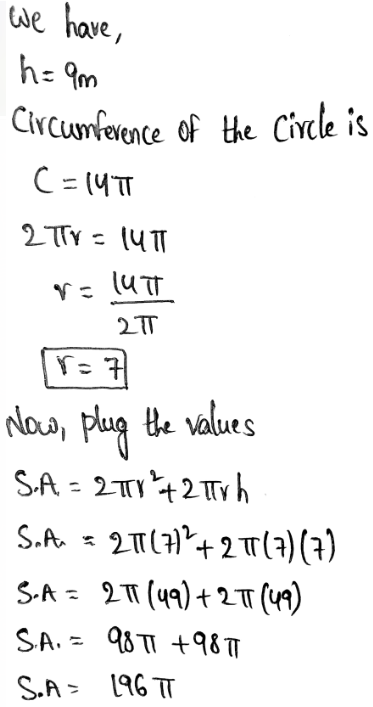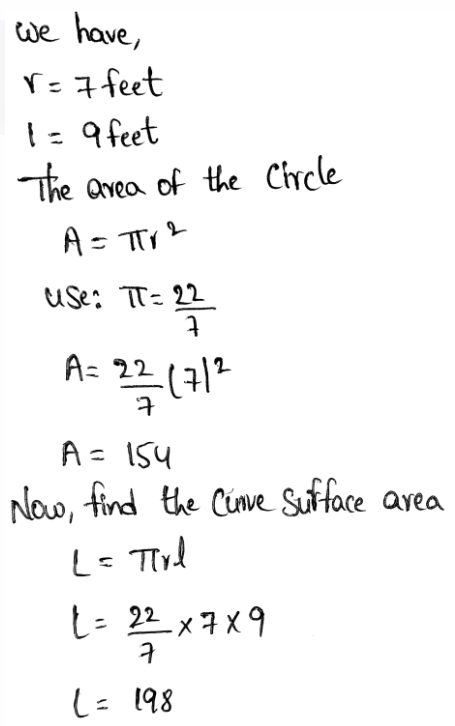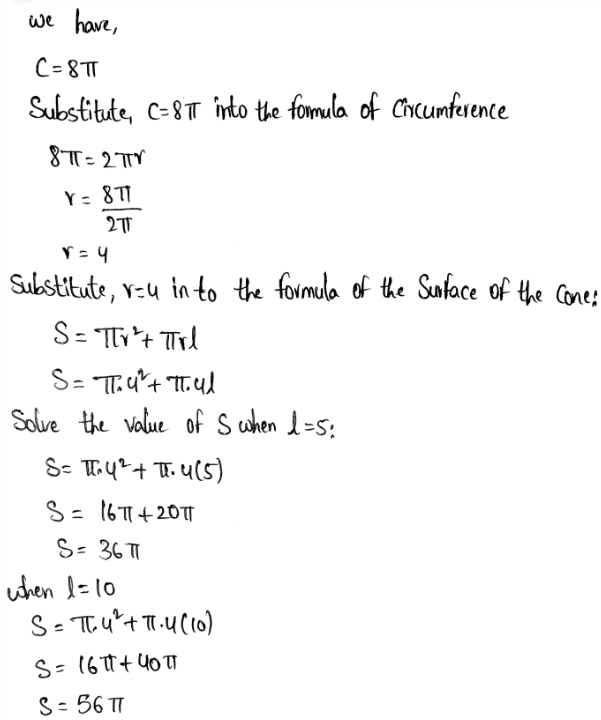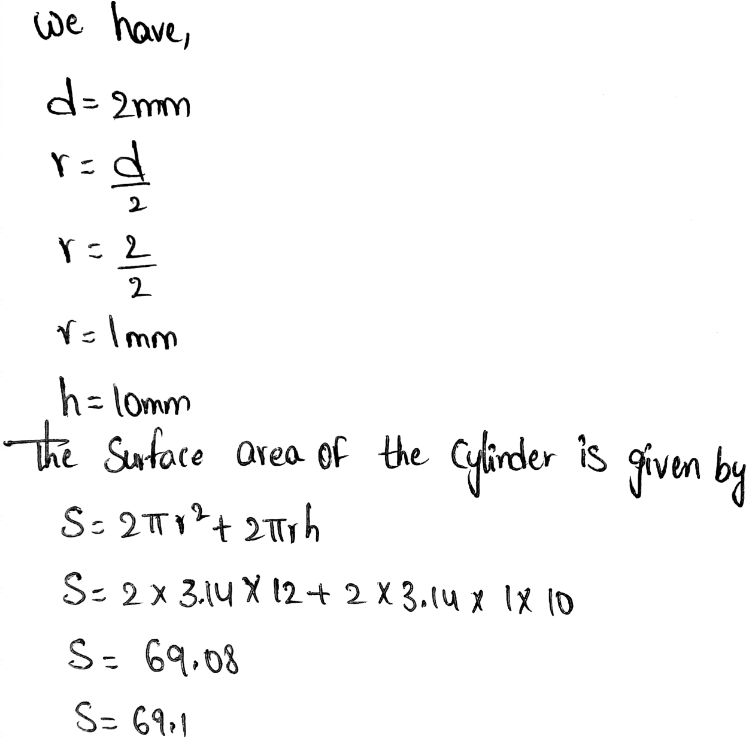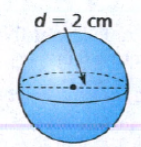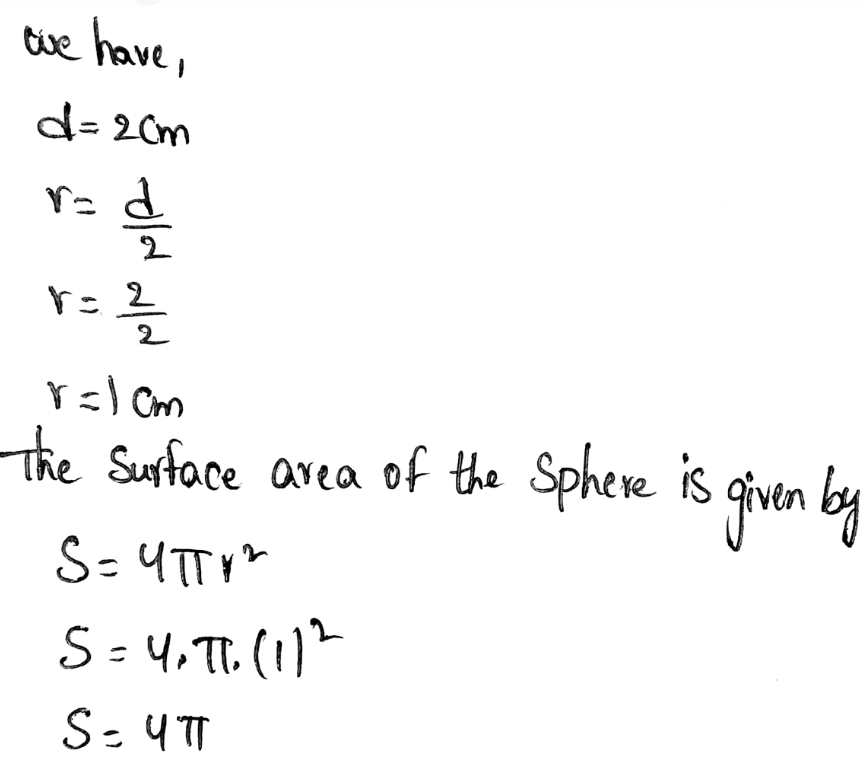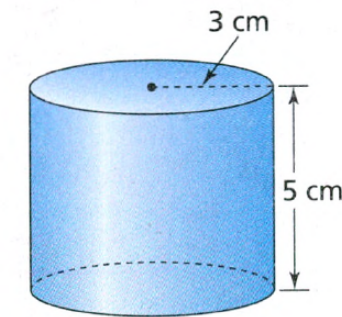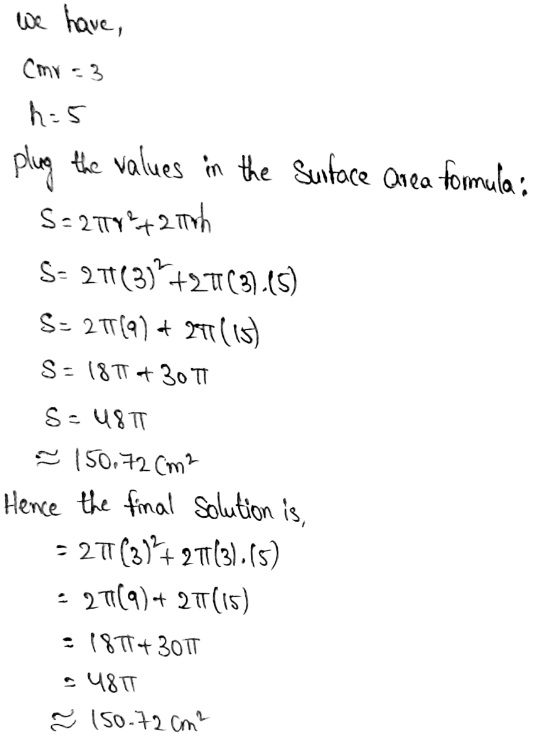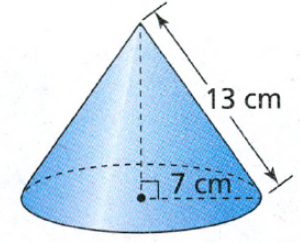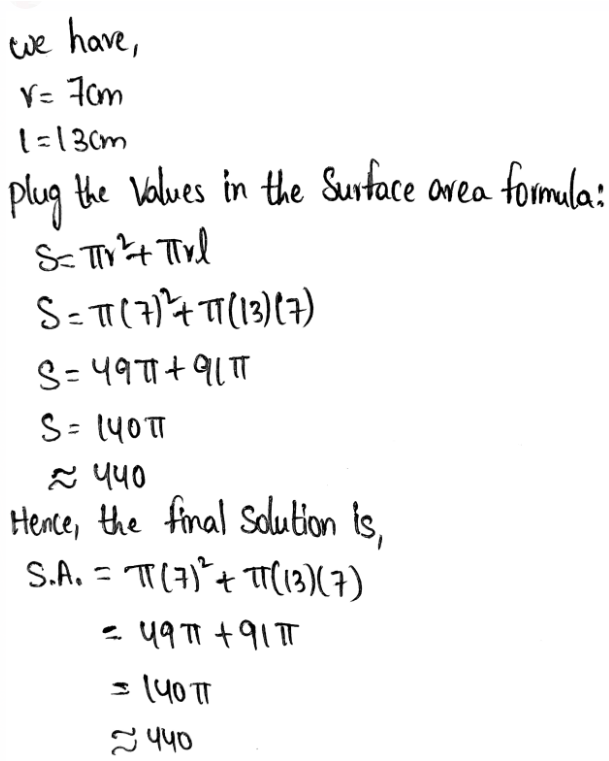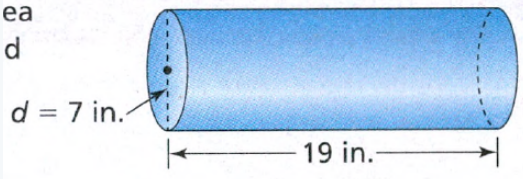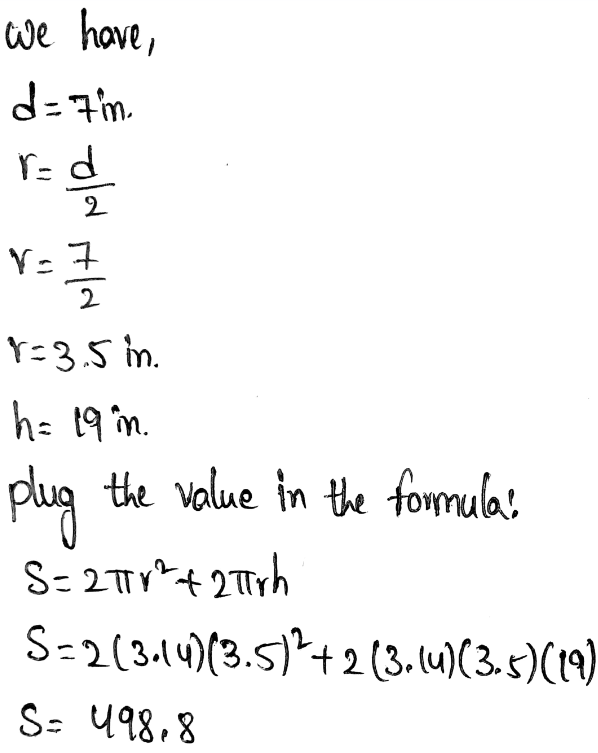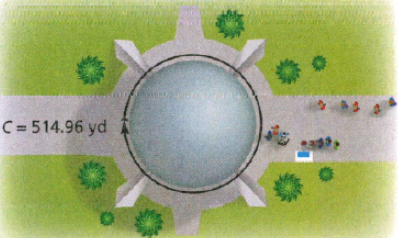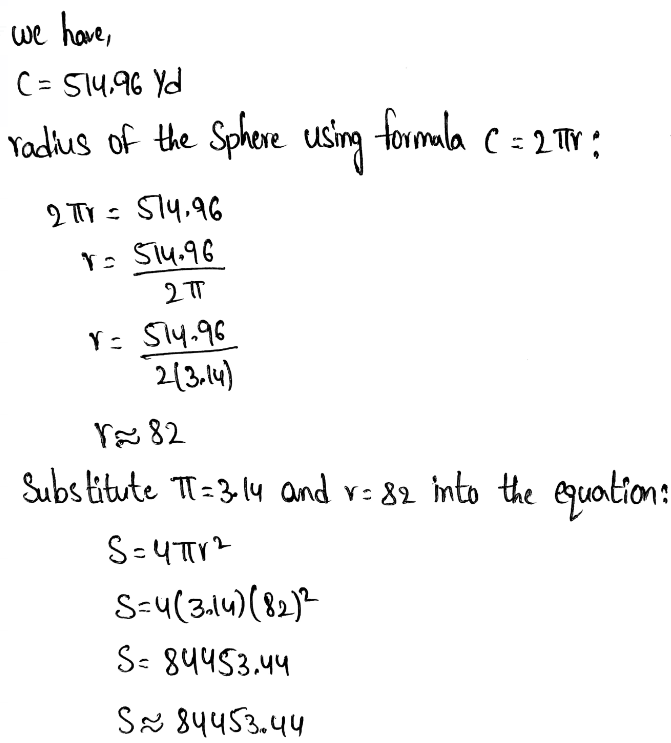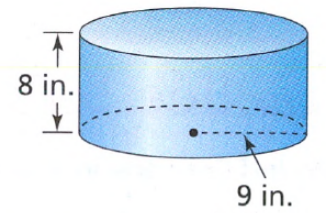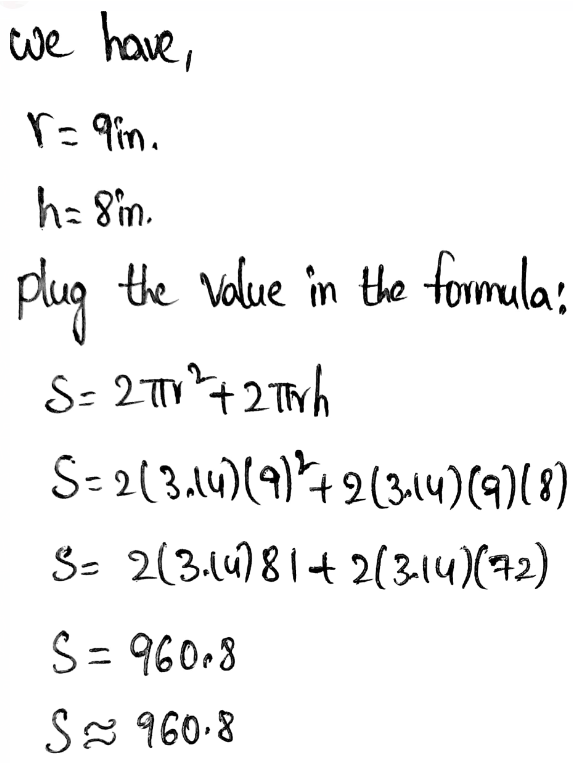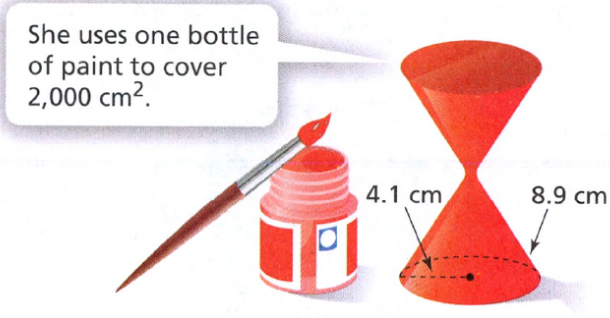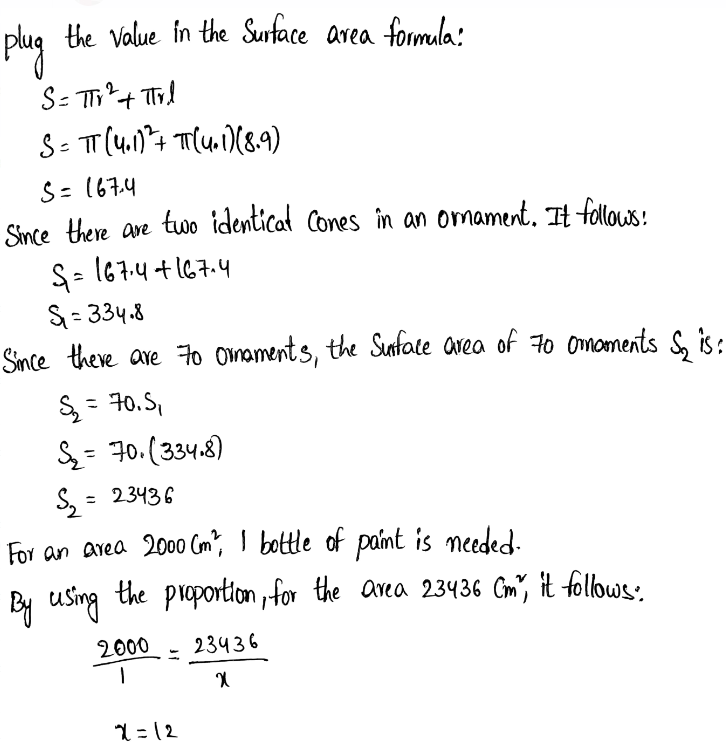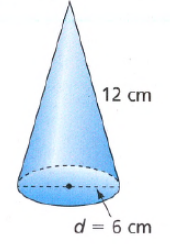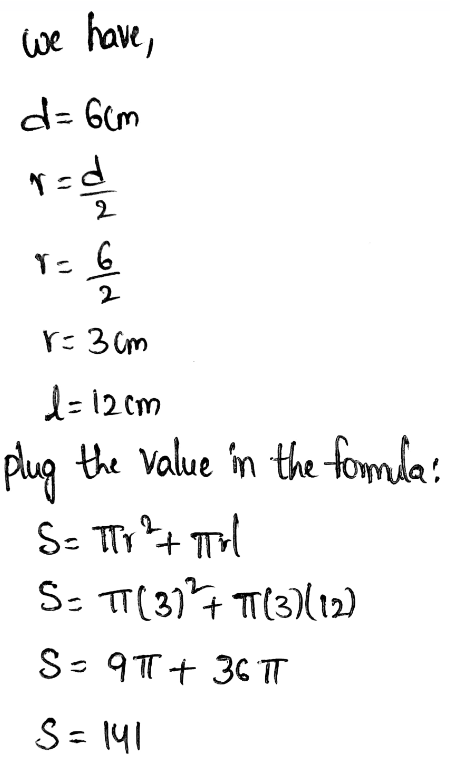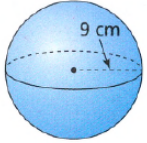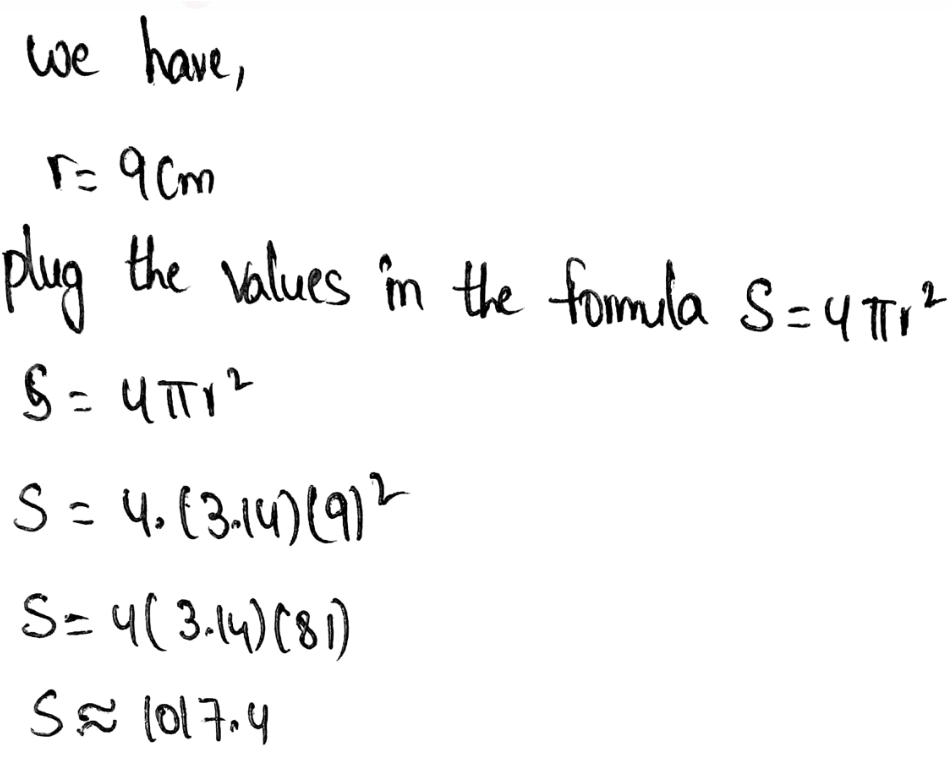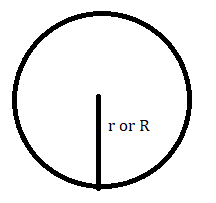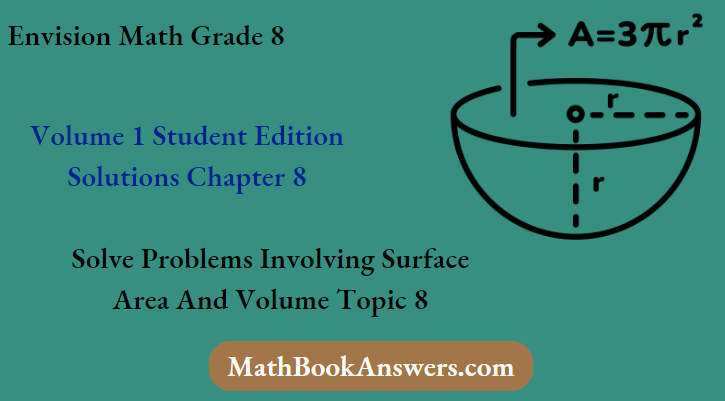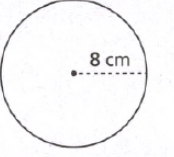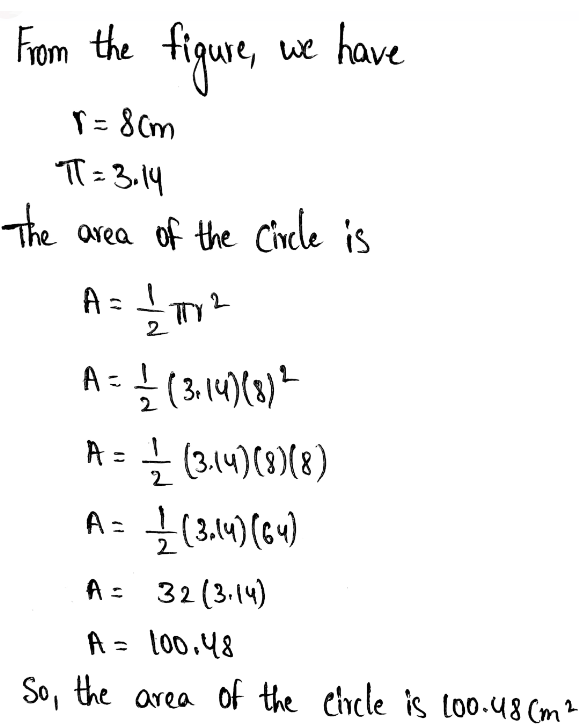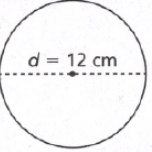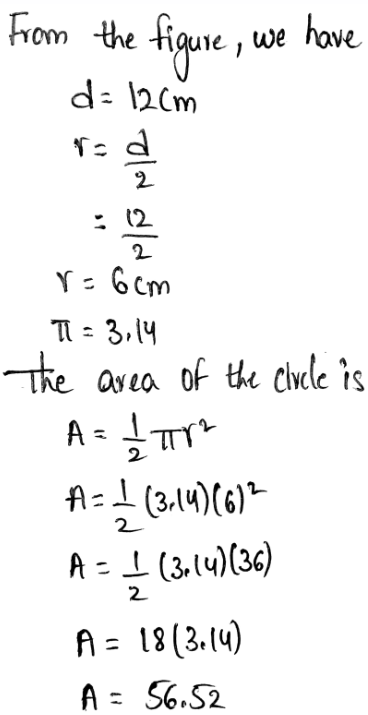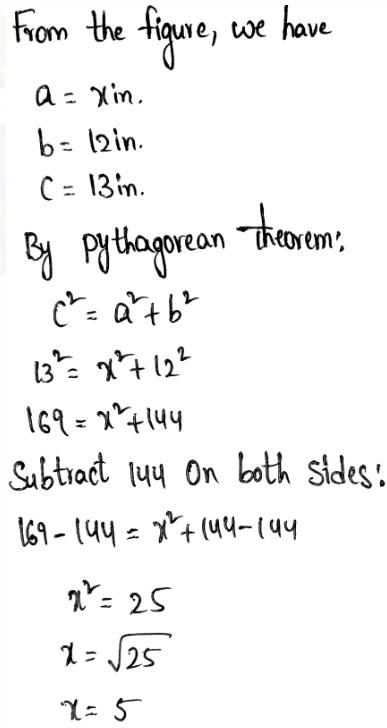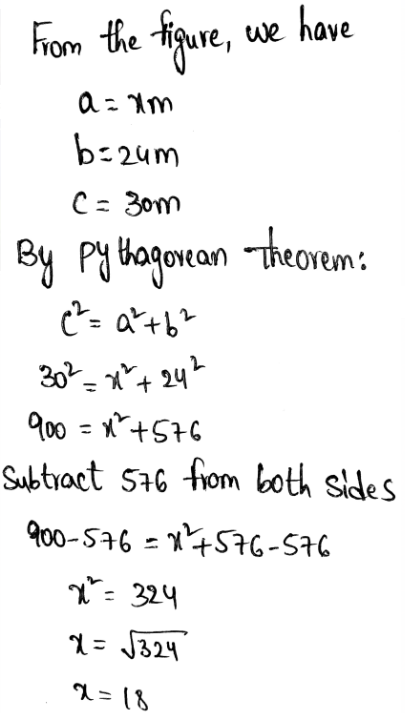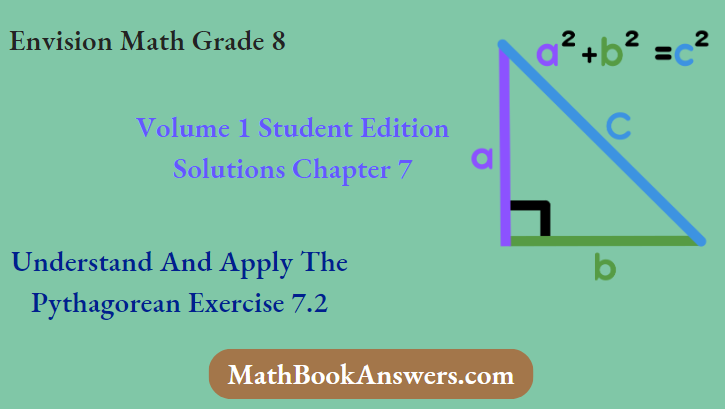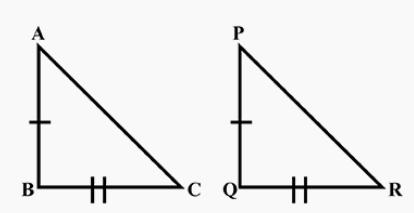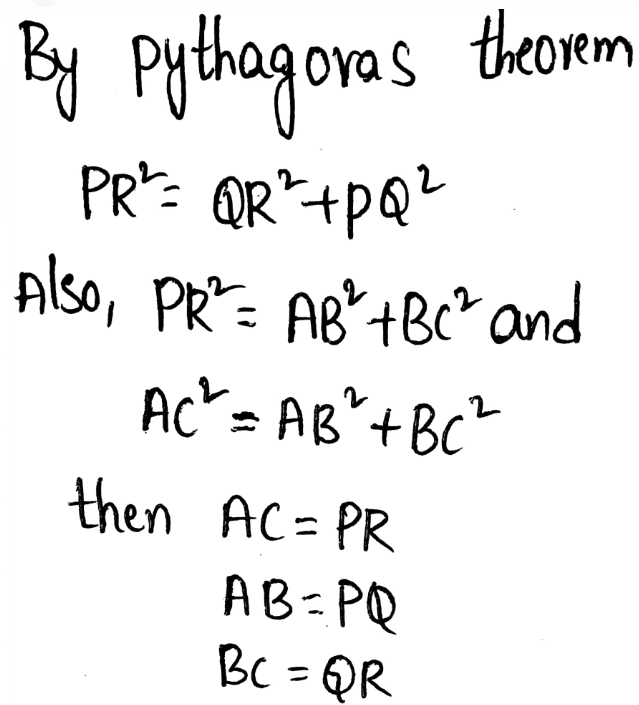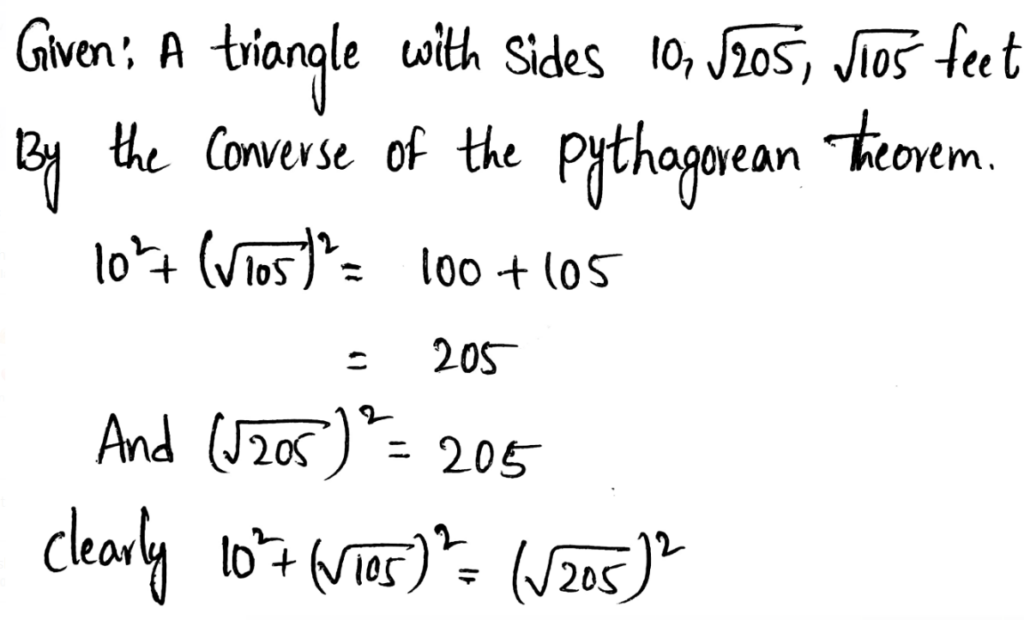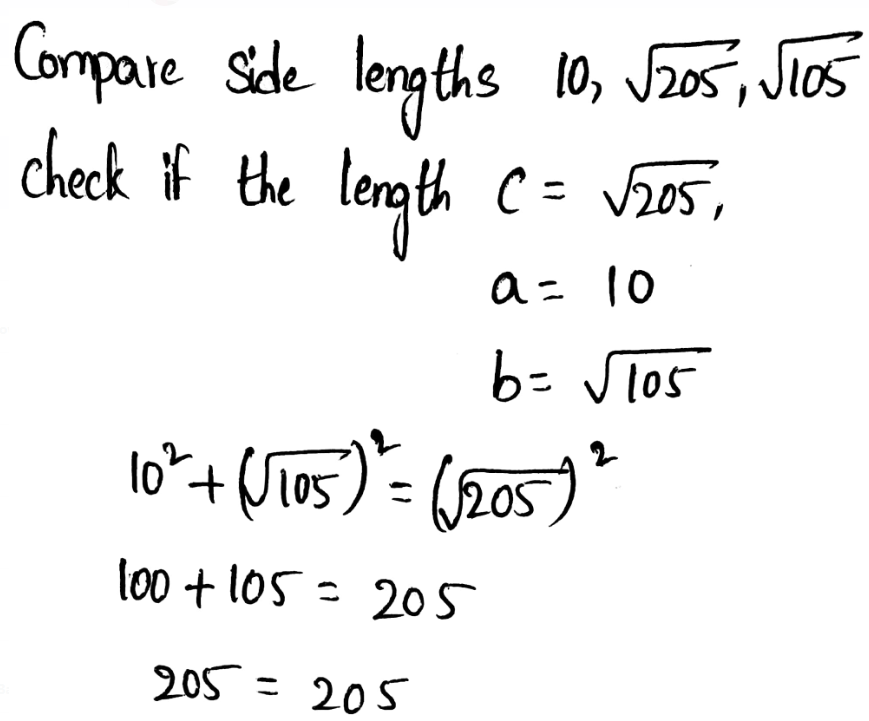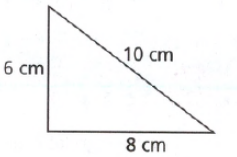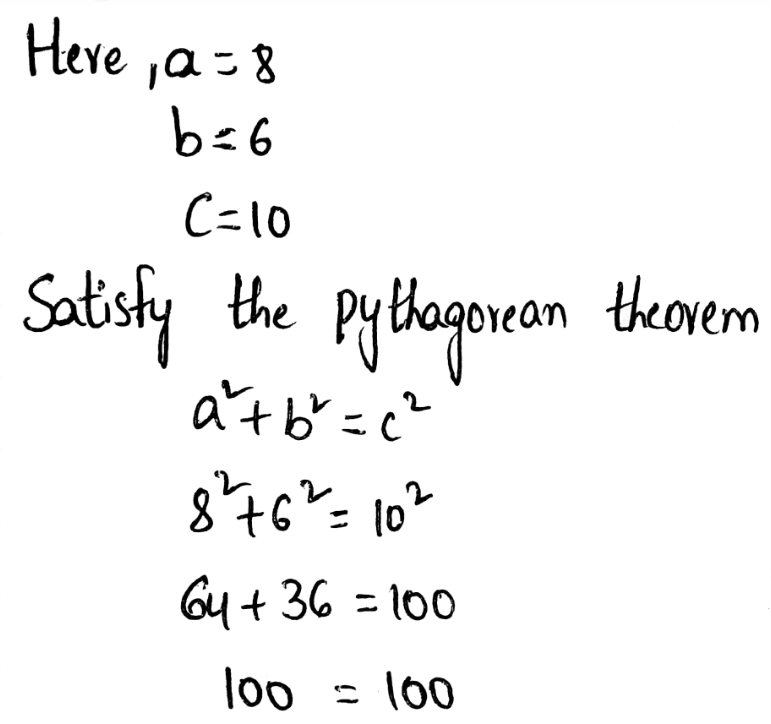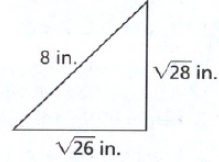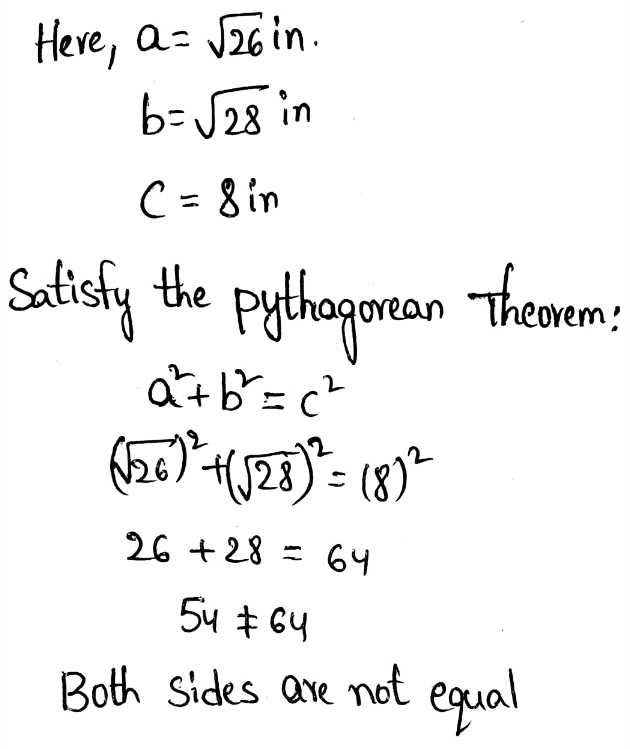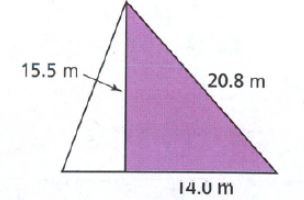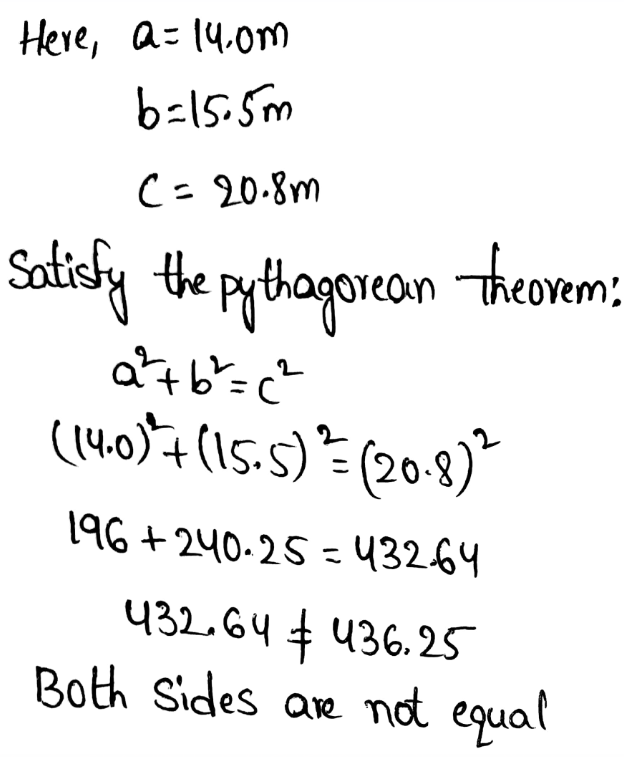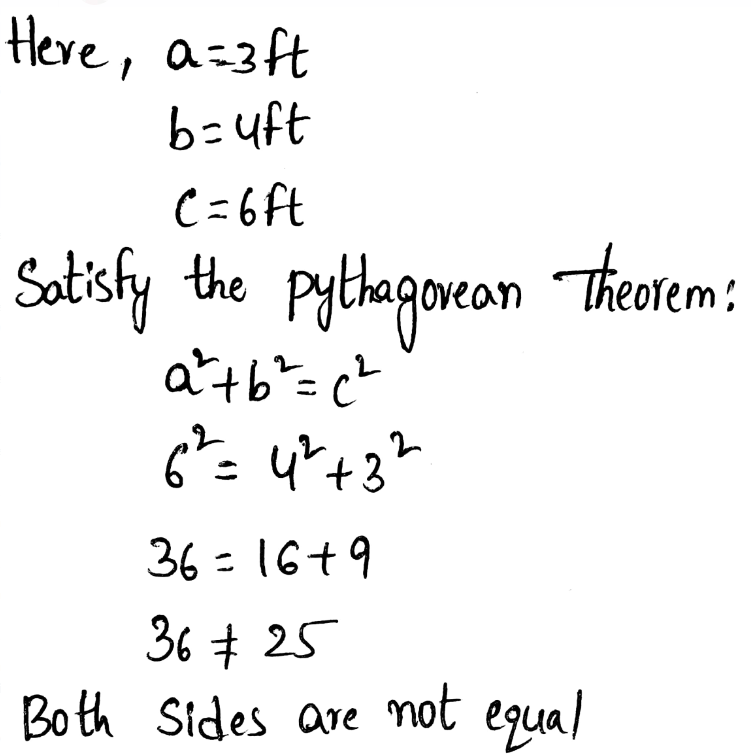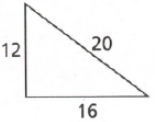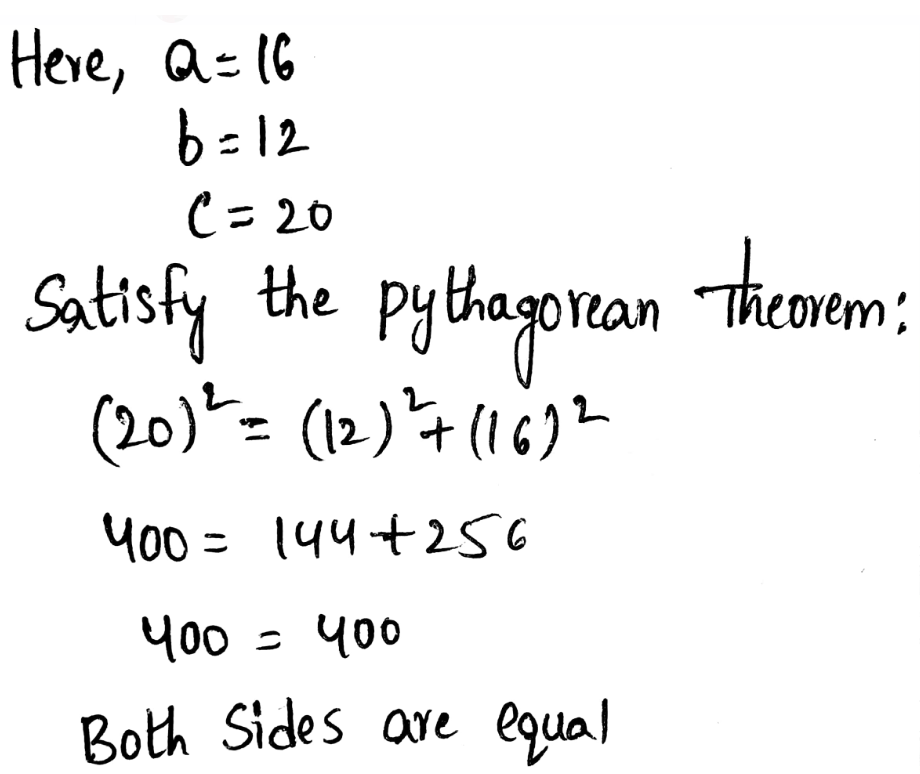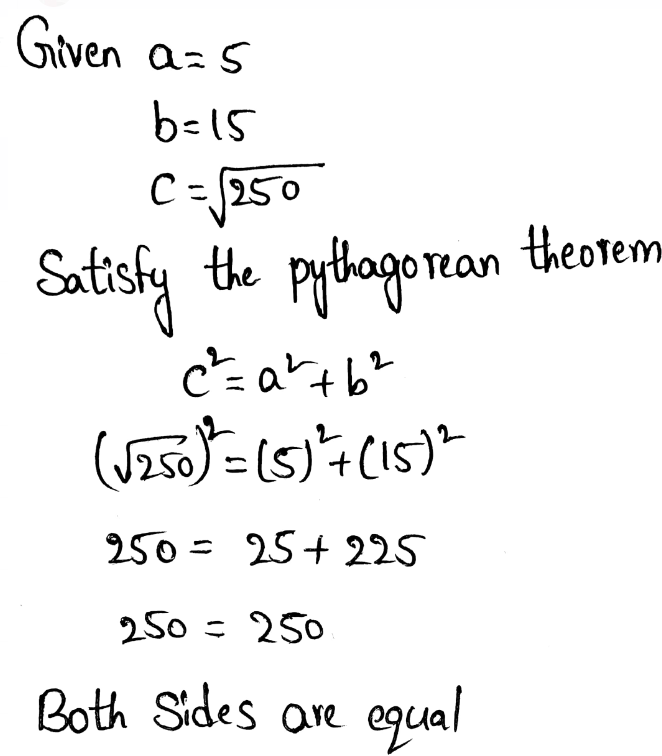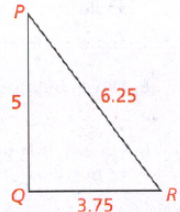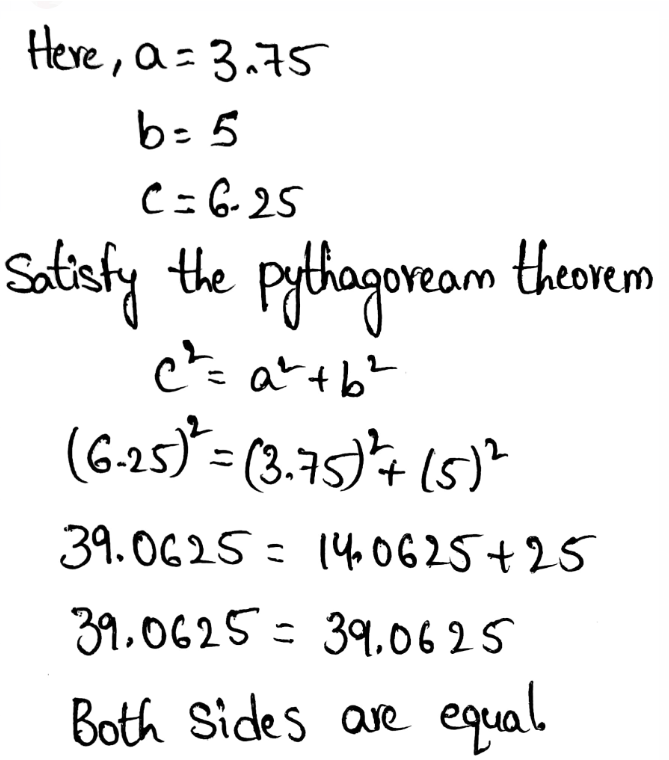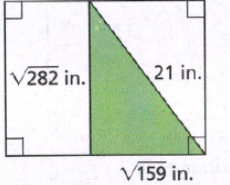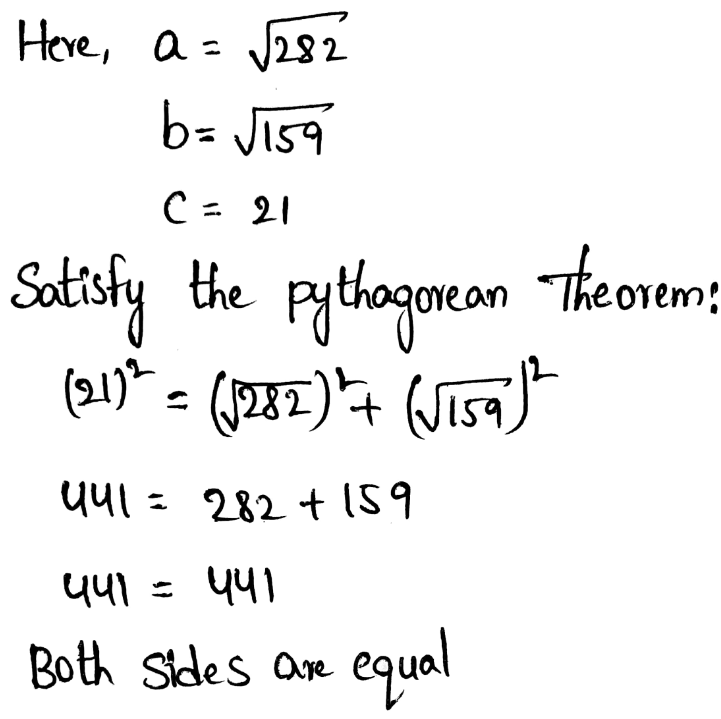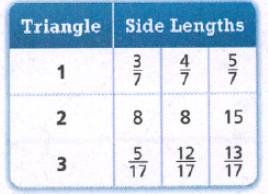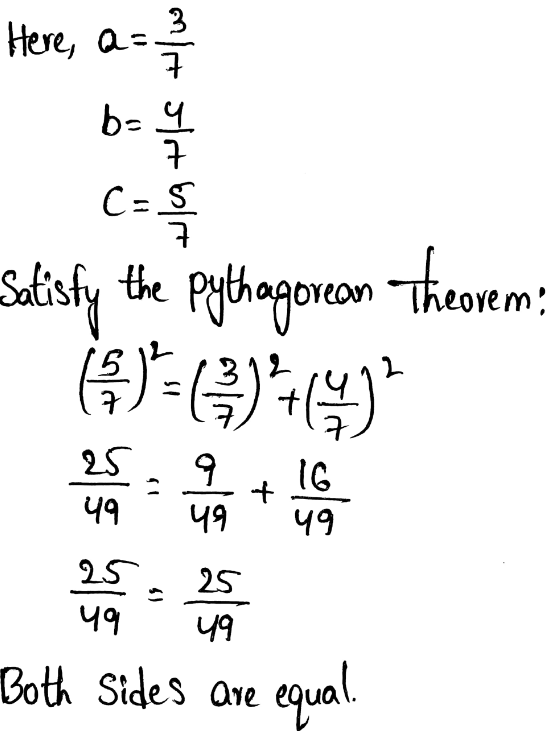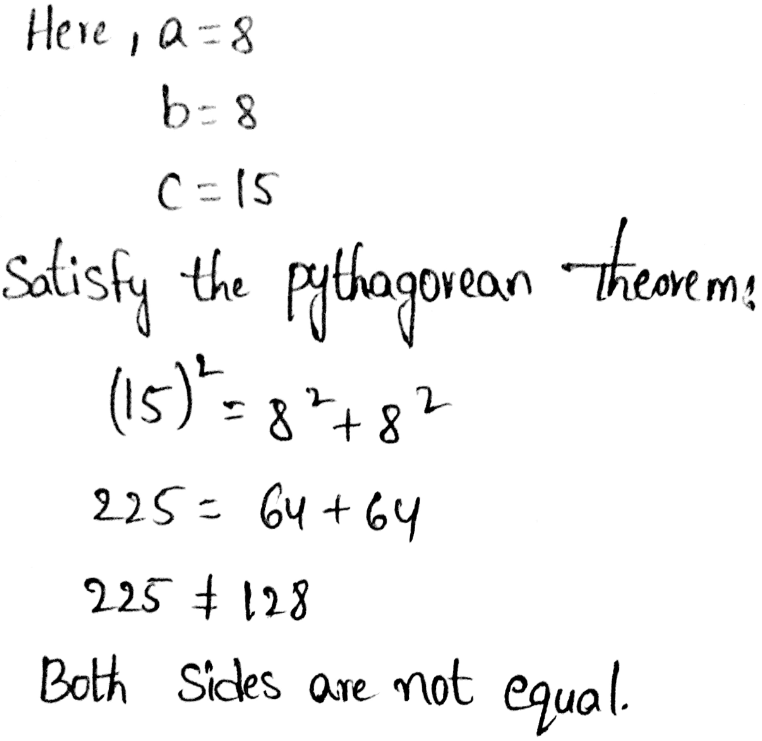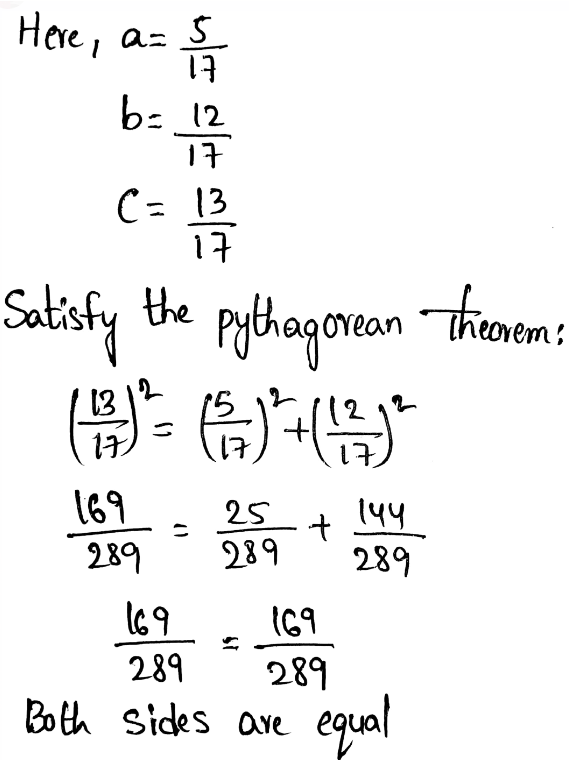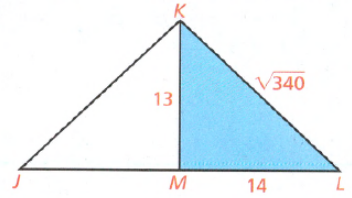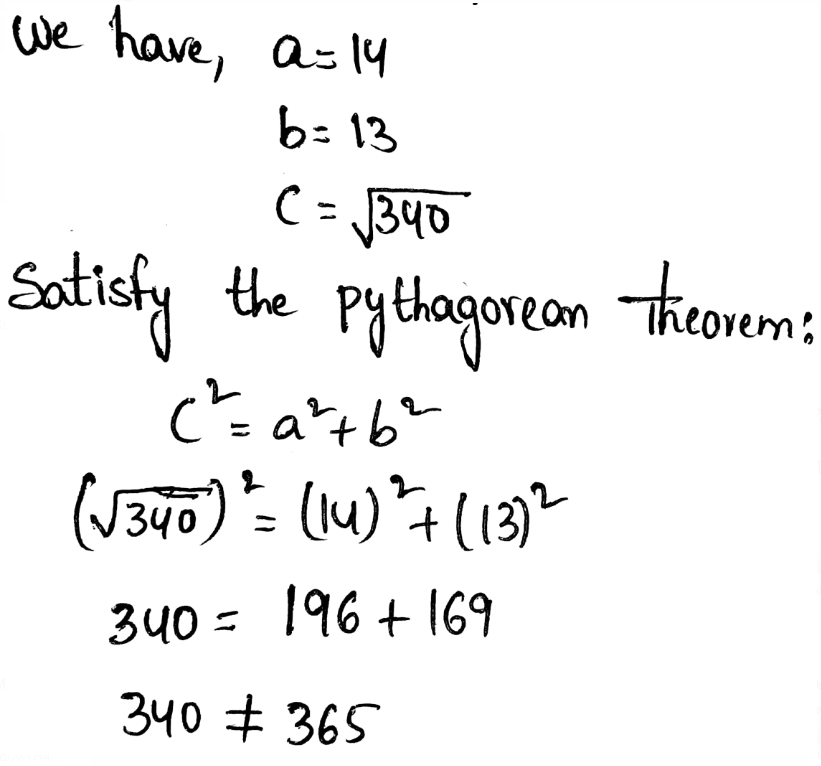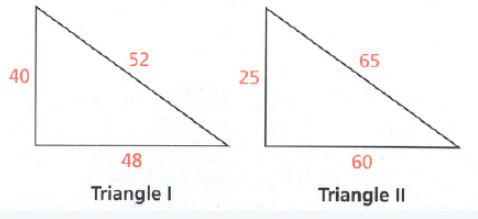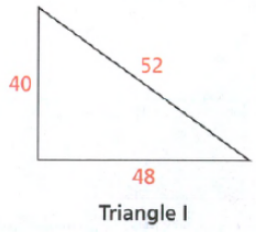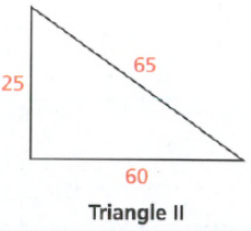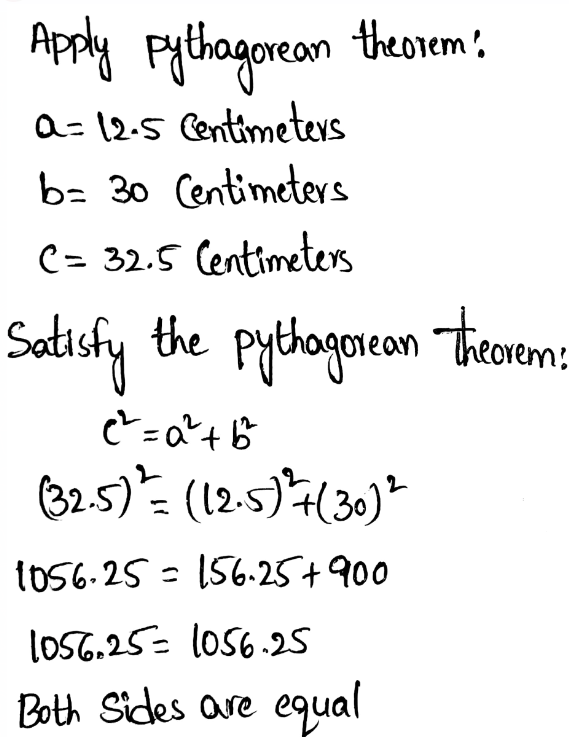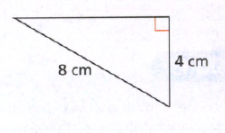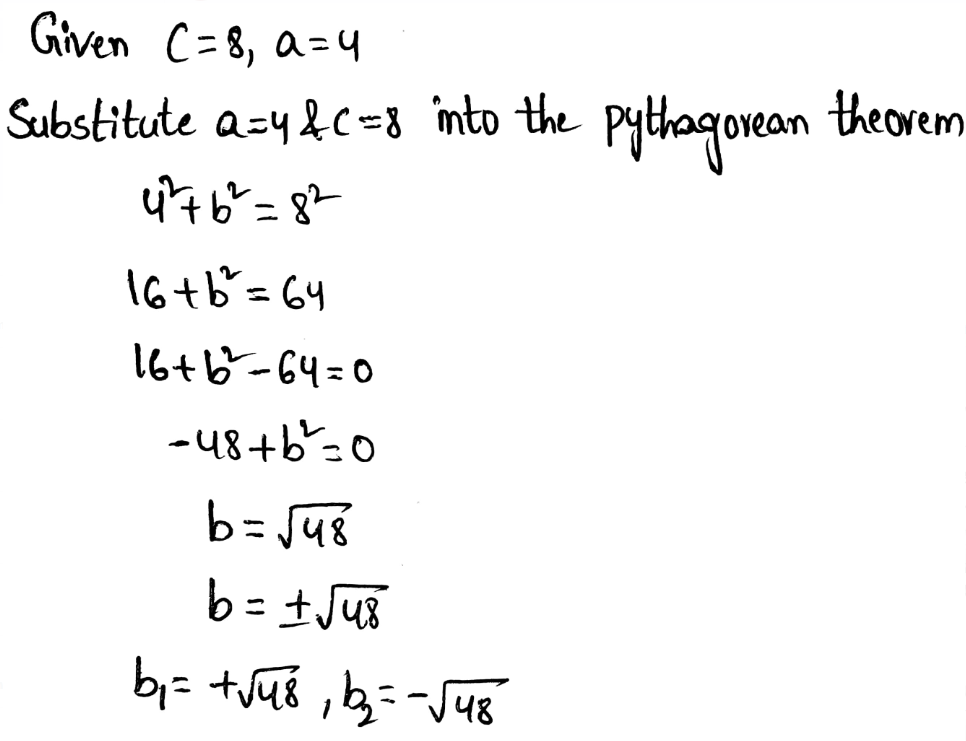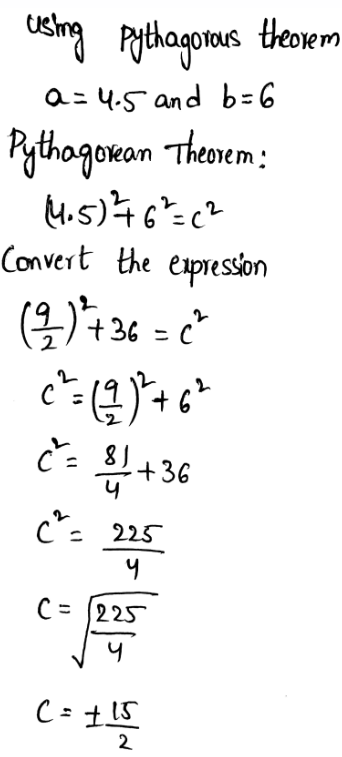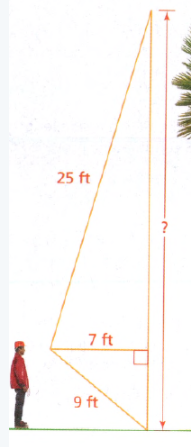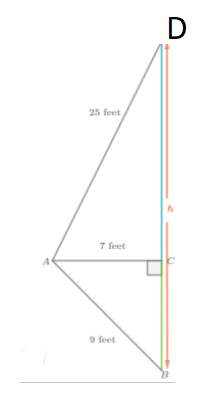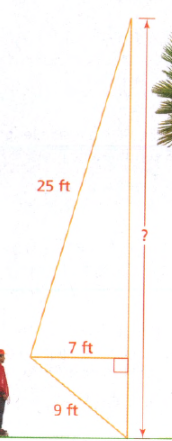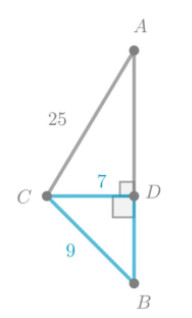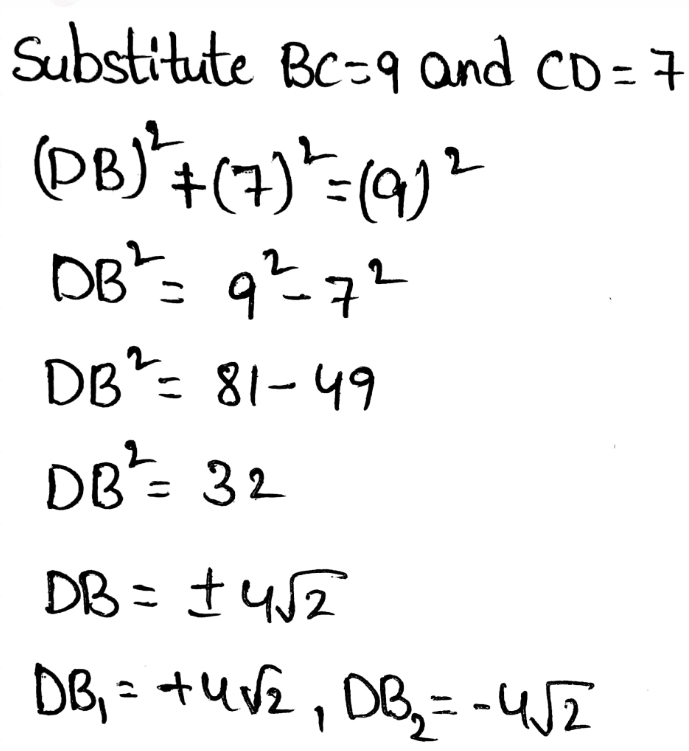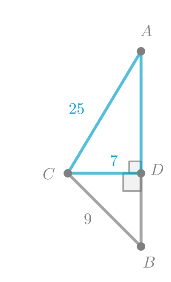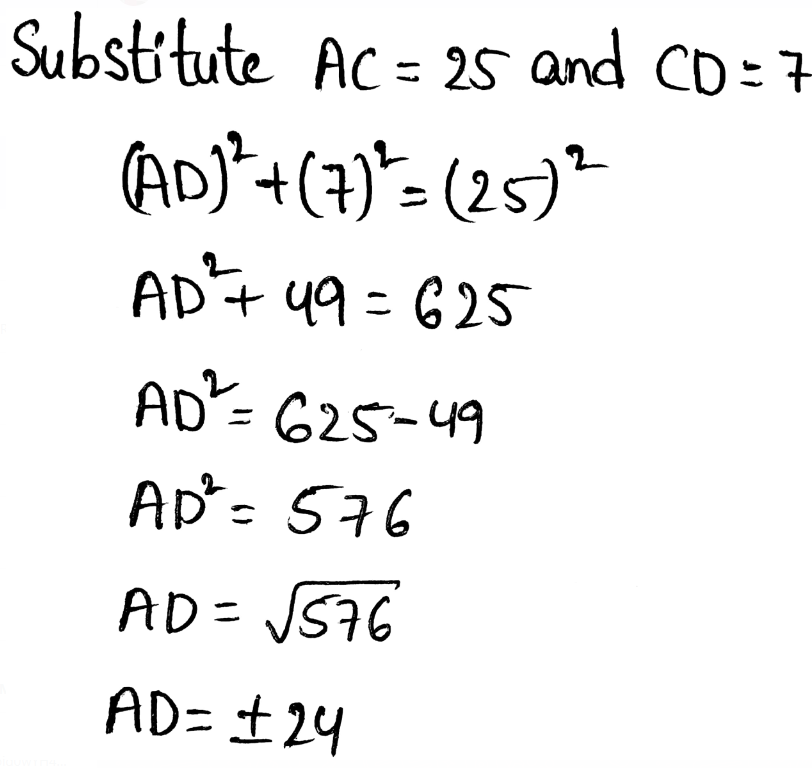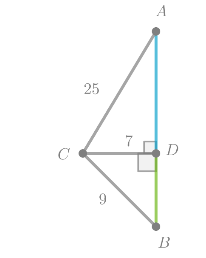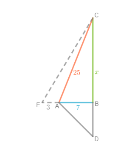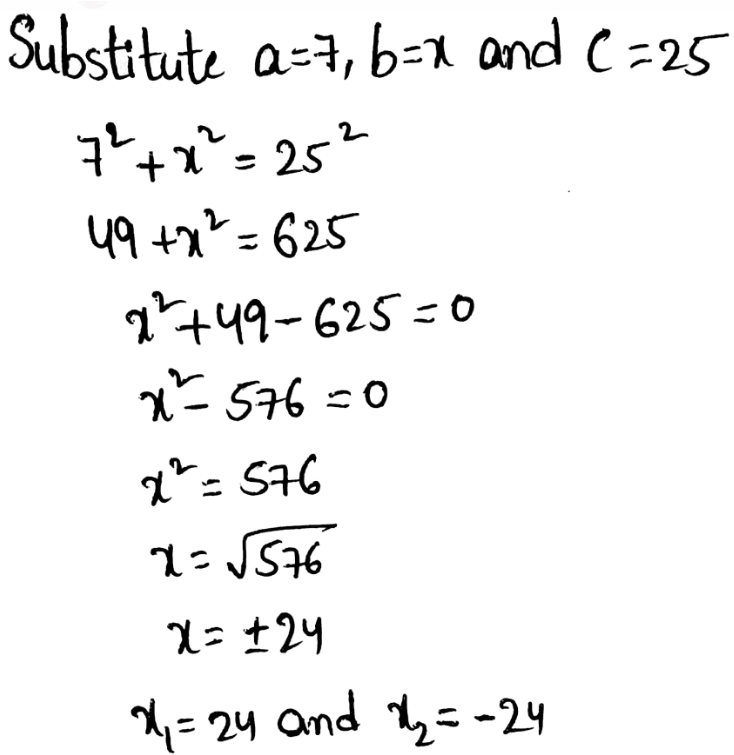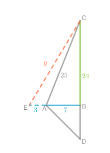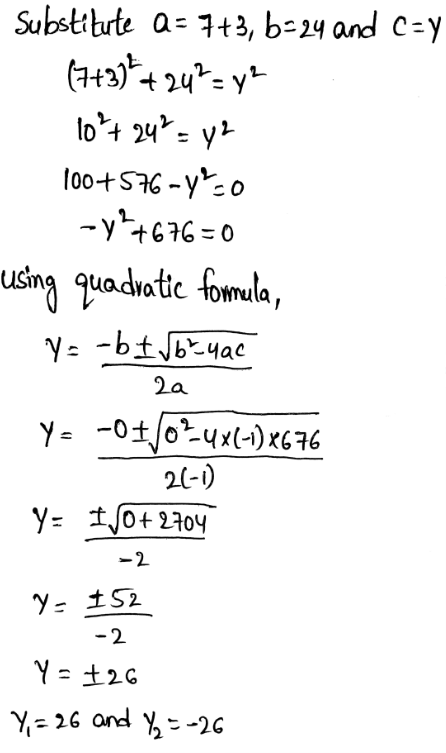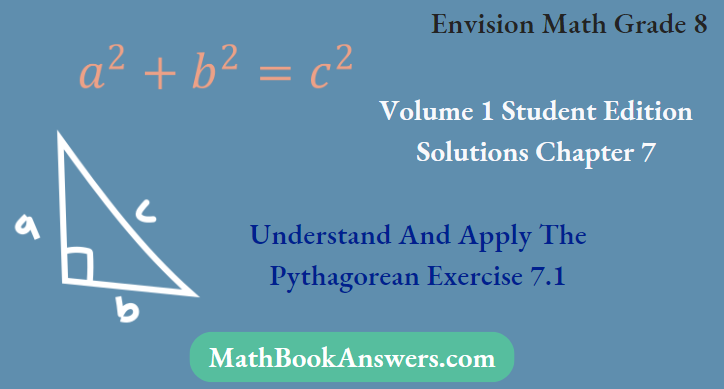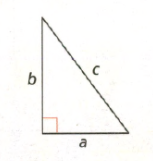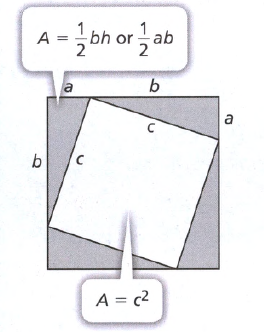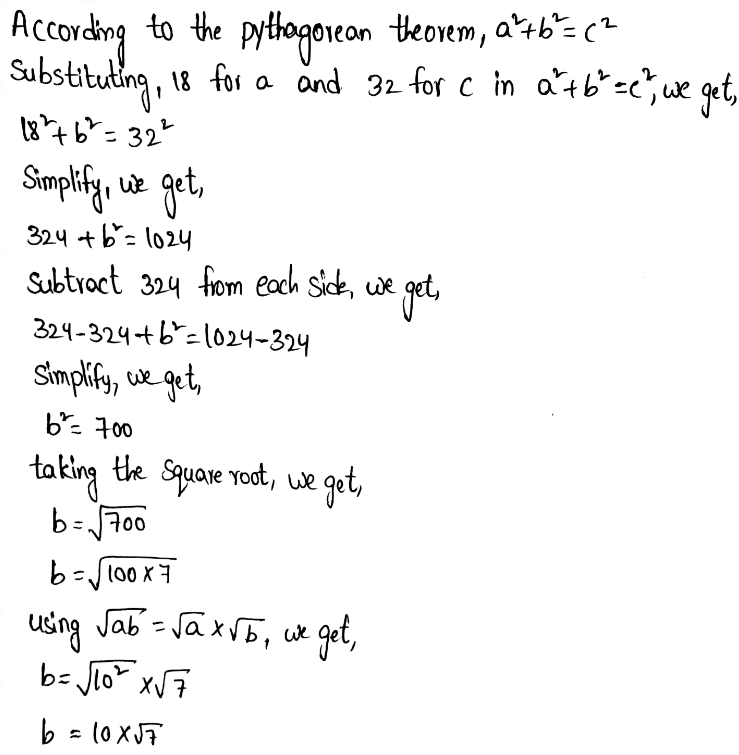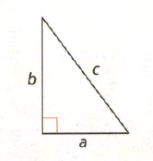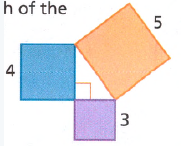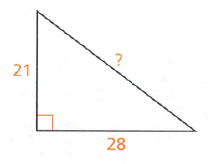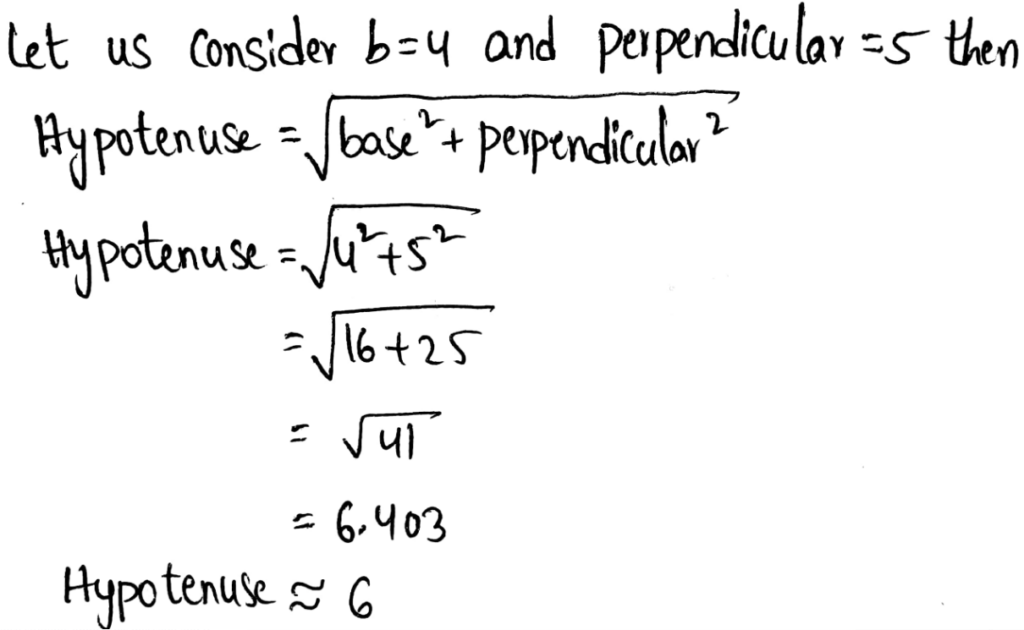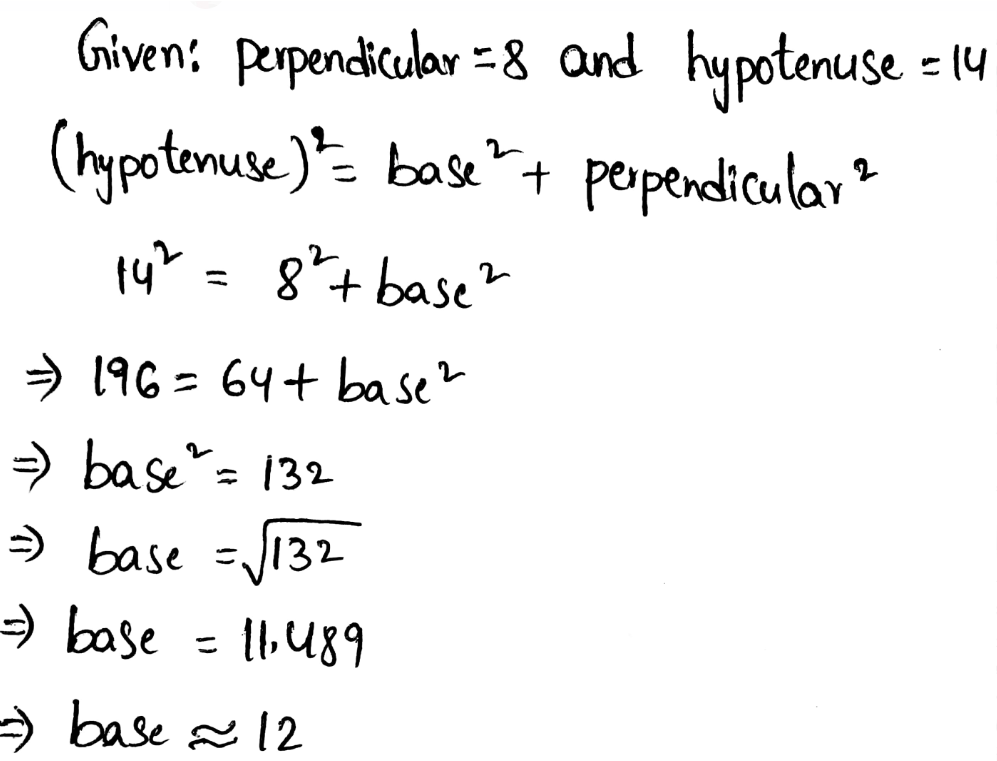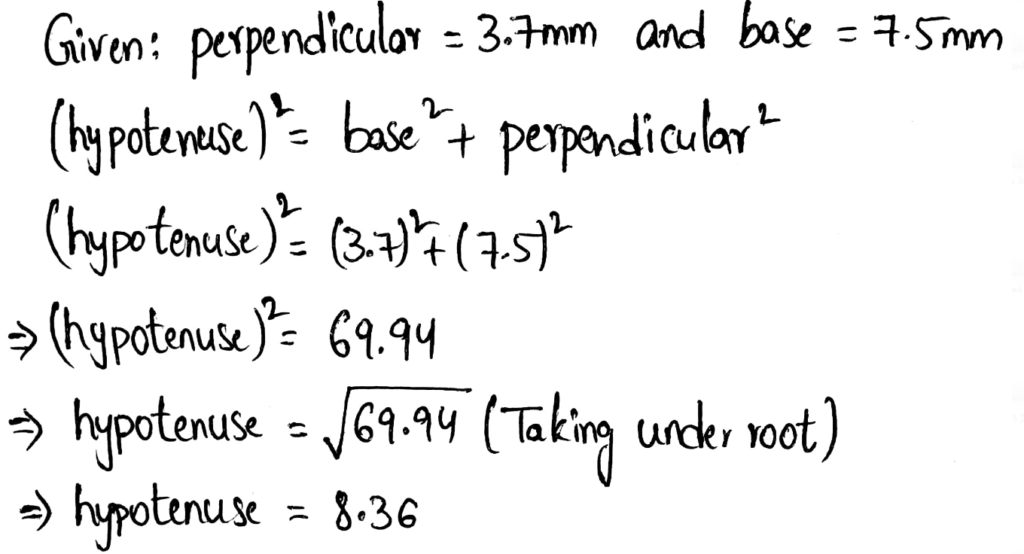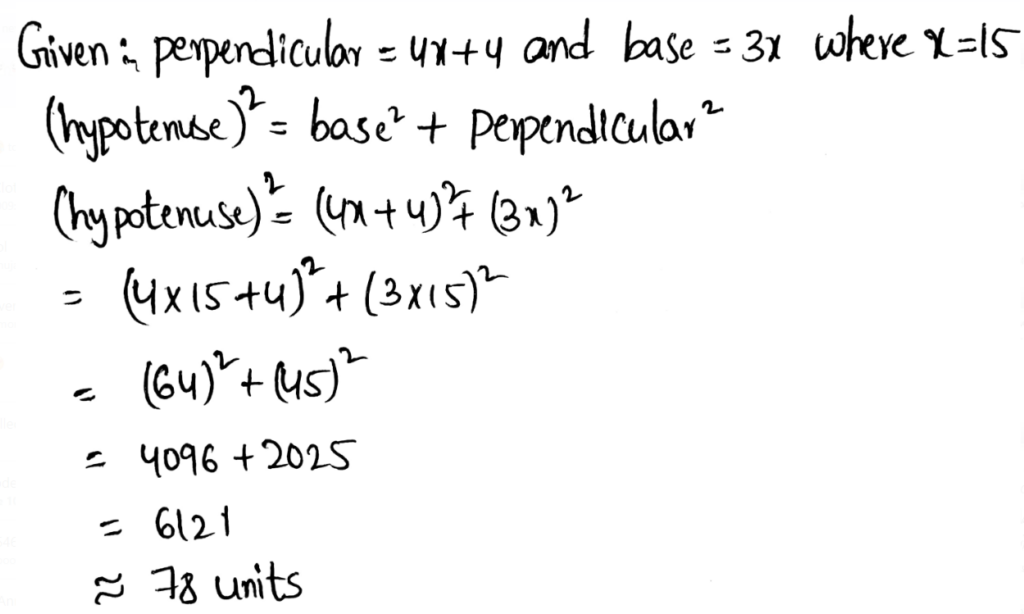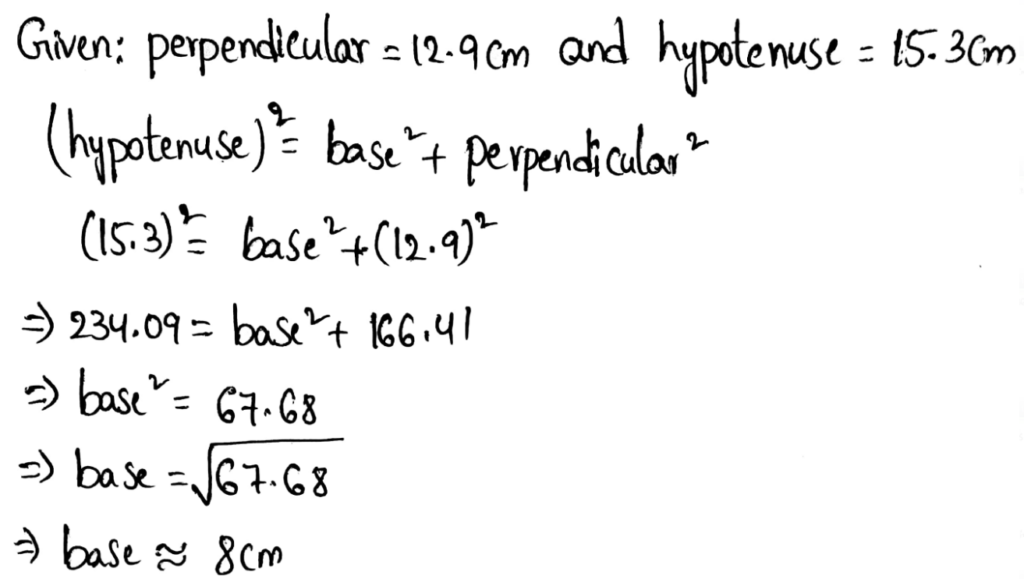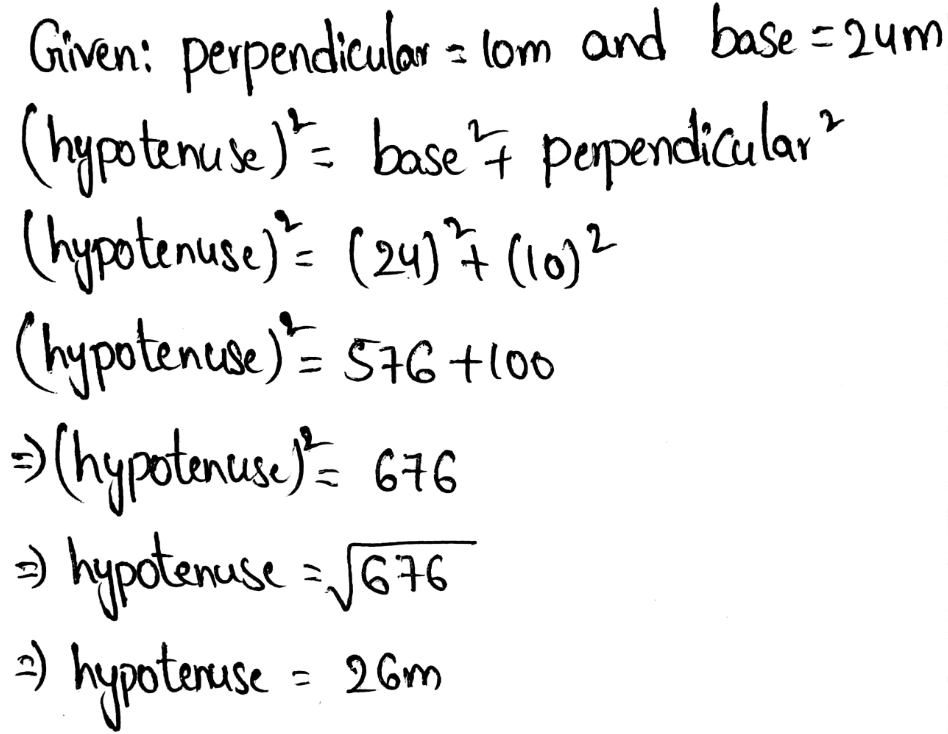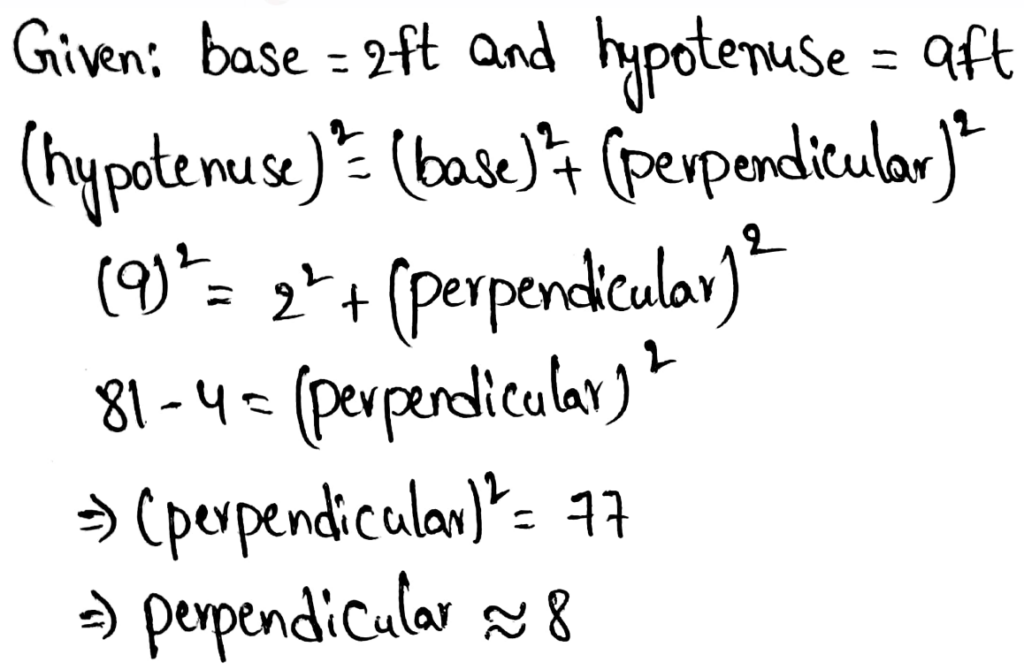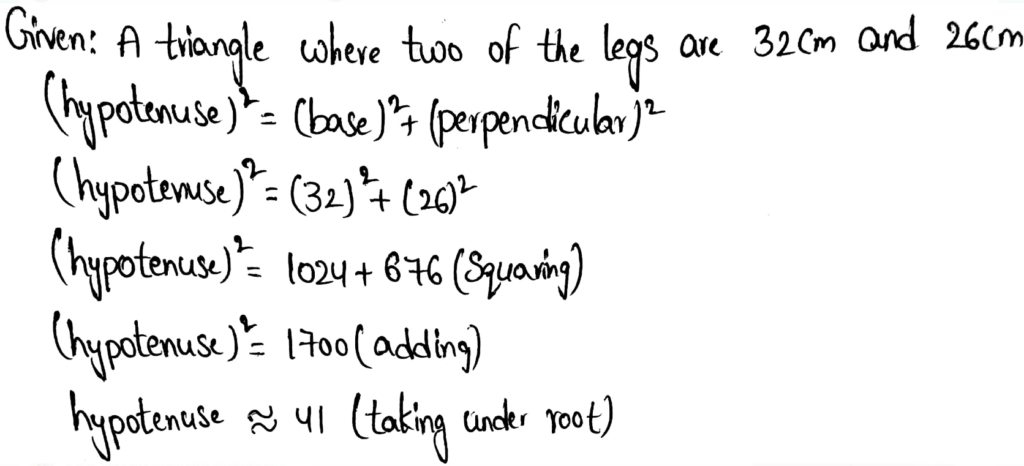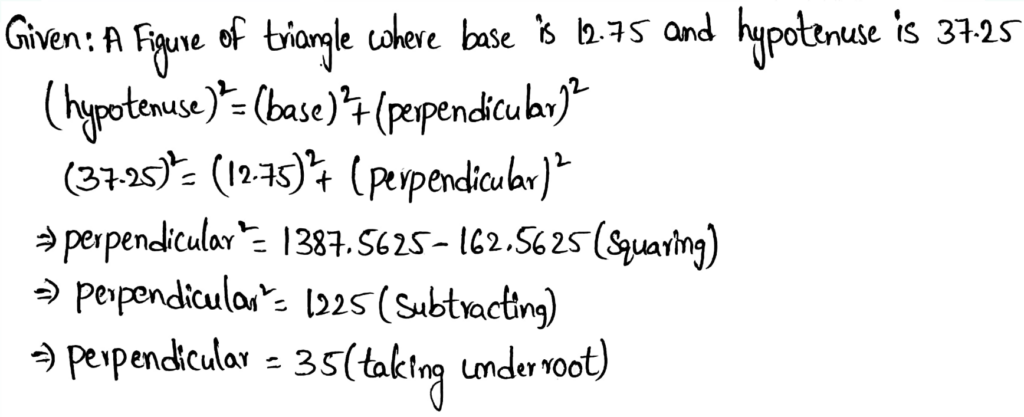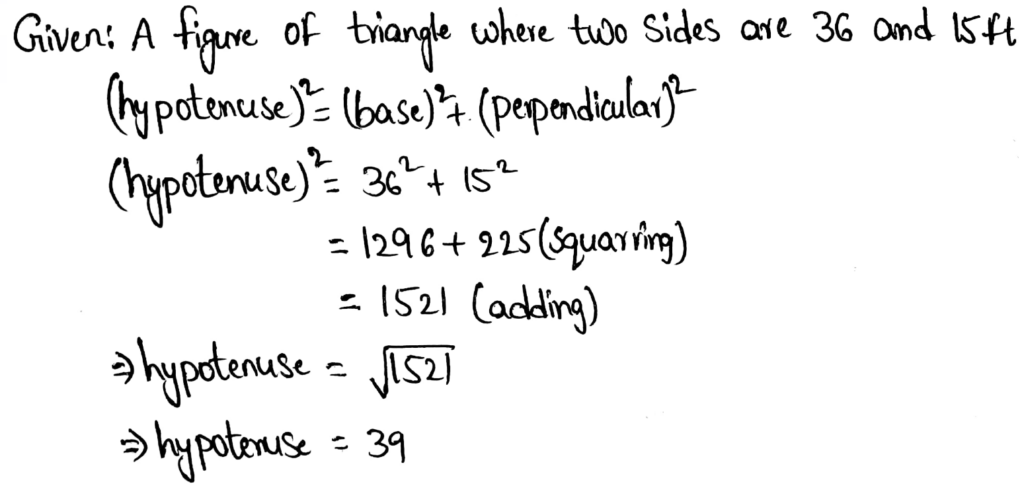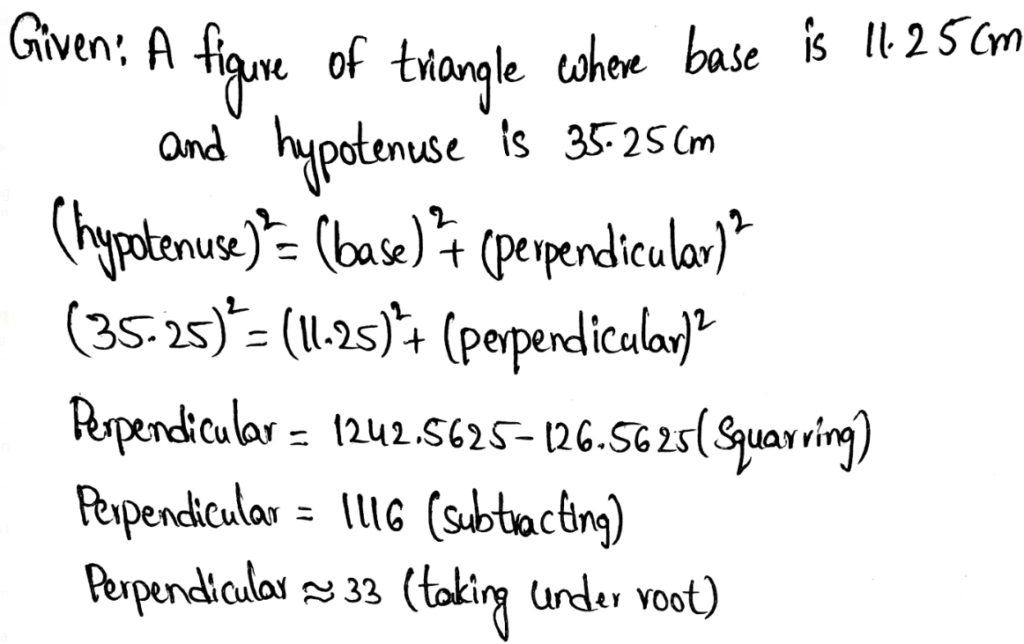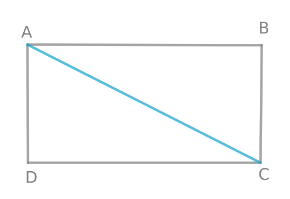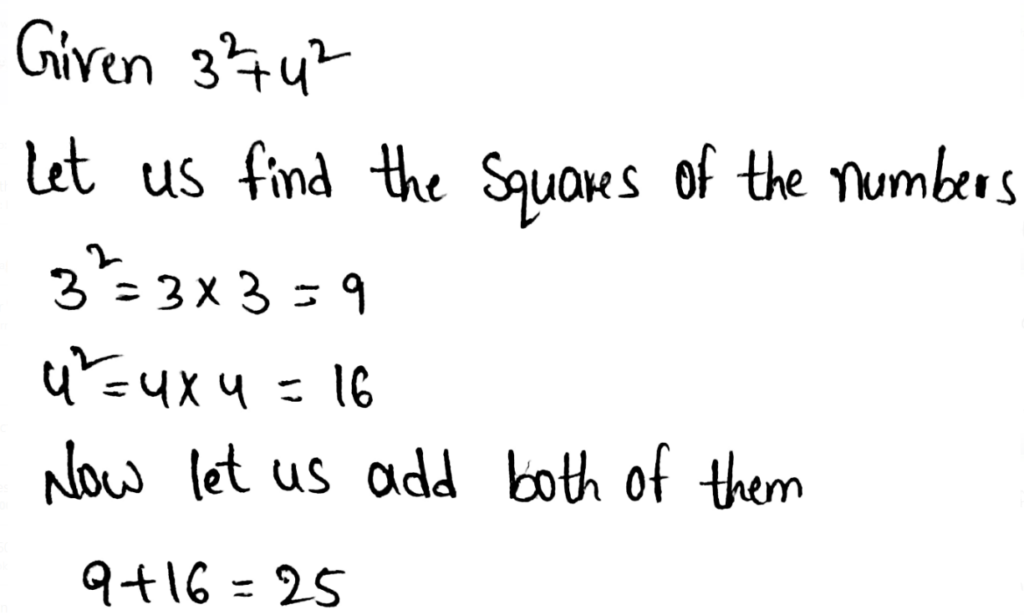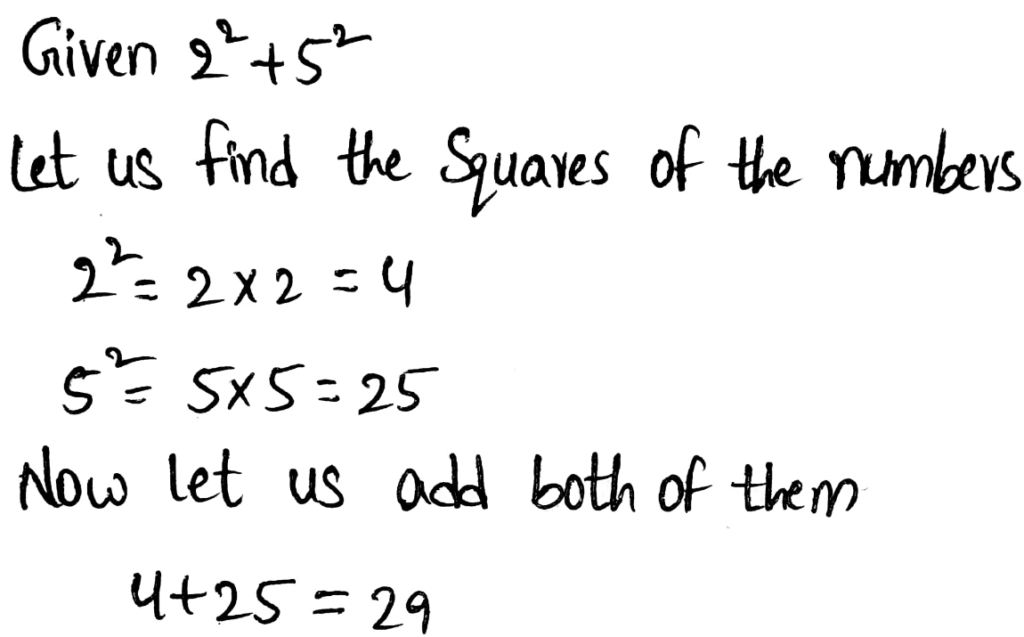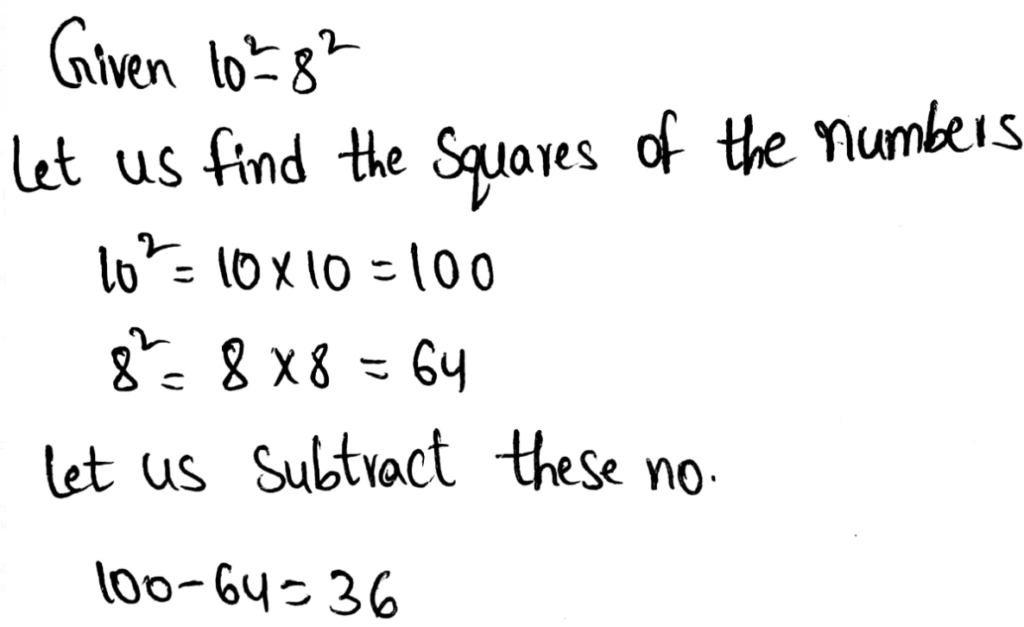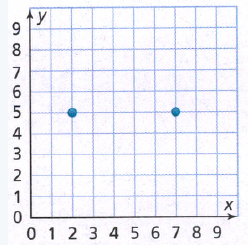Envision Algebra 1 Assessment Readiness Workbook Chapter 3
Page 42 Exercise 2 Answer
In the question, the given expression is \(\frac{(3)^4(5)^{-3}}{(3)^{-7}(5)^5}\).
It is required to rewrite this expression using positive exponents.
To write the expression using positive exponents, use the definition of negative exponents to convert the numbers with negative powers into positive powers.
Finally, use the concept of multiplication of two same numbers with different exponents.
Rewrite using positive exponents.
Use the definition of negative exponents \(\frac{1}{(3)^{-7}}\) can be rewritten as (3)7 and (5)-3 can be rewritten as \(\frac{1}{(5)^3}\)
Back- substitute these values in the original expression
⇒ \(\frac{(3)^4(5)^{-3}}{(3)^{-7}(5)^5}=\frac{(3)^4(3)^7}{(5)^3(5)^5}\)
Back -substitute these values in the original expression.
⇒ \(\frac{(3)^4(5)^{-3}}{(3)^{-7}(5)^5}=\frac{(3)^4(3)^7}{(5)^3(5)^5}\)
Use the property \(a^m \times a^n=a^{m+n}\)
Add the exponents
⇒ \(\frac{(3)^4(5)^{-3}}{(3)^{-7}(5)^5}=\frac{(3)^{4+7}}{(5)^{3+5}}\)
⇒ \(\frac{(3)^4(5)^{-3}}{(3)^{-7}(5)^5}=\frac{(3)^{11}}{(5)^8}\)
Therefore, the correct option is option \(\text { (A) } \frac{(3)^{11}}{(5)^8}\)
Therefore, the correct option is Option(A) \(\frac{(3)^11}{(5)^8}\).
Option (A) \(\frac{(3)^11}{(5)^8}\) is the positive exponent form of the given expression.
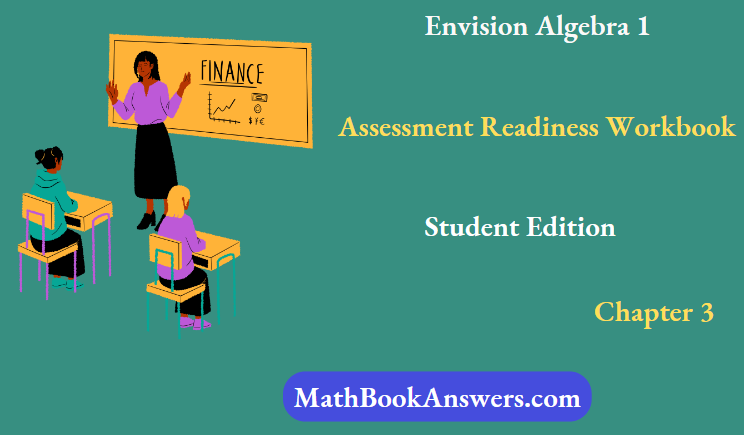
Envision Algebra 1 Chapter 3 Answer Key
Envision Algebra 1 Assessment Readiness Workbook Student Edition Chapter 3 Page 42 Exercise 3 Answer
In the question, the given equation is ∣3x−3∣ + 3 = 9.
It is required to find the solution to this equation.
To find the solution, isolate the absolute value number on one side of the equation and the rest on the other side. Finally, use the relation ∣a∣ = ±a and solve for x.
Apply the definition of absolute value.
Given equation |3x-3|+3=9
Subtract 3 from both sides
|3x-3|+3-3=9-3
|3x-3|=6
Use the definition of absolute value sign
3x-3=±6
Use the definition of absolute value sign
3x-3=±6
Find the solution 3x-3=6
add 3 on both sides 3x-3+3=+6+3
3x=9
Divide 3 on both sides
⇒ \(\frac{3 x}{3}=\frac{9}{3}\)
x=3
Find the solution 3x-3=-6
Add 3 on both sides
3x-3+3=-6+3
3x=-3
Divide 3 on both sides
⇒ \(\frac{3 x}{3}=\frac{-3}{3}\)
x=-1
Option (B) -1 and Option (C) 3 are the solutions to the given absolute equation.
Envision Algebra 1 Assessment Readiness Workbook Student Edition Chapter 3 Page 42 Exercise 4 Answer
In the question, it is given that a line is perpendicular to a line that passes through (−2,−2) and(2,4).
It is required to find the equation of a line that is perpendicular to the given line.
To find the equation of that line, first, find the slope of the line passing through the given points. Next, use the relation to find the slope of the perpendicular line. Finally, compare the slope of the perpendicular lines from the set of options given.
Find the slope of the line.
The line passes through (-2,-2) and (2,4) using the formula.
⇒ \(m_1=\left(\frac{4-(-2)}{2-(-2)}\right)\)
Simply the signs
⇒ \(m_1=\left(\frac{4+2}{2+2}\right)\)
Add the terms
⇒ \(m_1=\left(\frac{6}{4}\right)\)
Divide the numerator and denominator by 2
⇒ \(\begin{aligned}
& m_1=\frac{\frac{6}{2}}{\frac{4}{2}} \\
& m_1=\frac{3}{2}
\end{aligned}\)
Find the slope of the perpendicular line using the relation of the slope of two perpendicular lines.
m1xm2=-1
Substitute \(\frac{3}{2}\) for m1
⇒ \(\frac{3}{2} \times m_2=-1\)
multiply by \(\frac{2}{3}\) on both sides
⇒ \(\frac{3}{2} \times \frac{2}{3} \times m_2=-1 \times \frac{2}{3}\)
Simply the equation \(m_2=\frac{-2}{3}\)
Therefore, the slope of the perpendicular line is \(\frac{-2}{3}\).
Write the equation of the perpendicular line.
Use the general equation of a line.
Slope is \(\frac{-2}{3}\).
Substitute \(\frac{-2}{3}\) form in the general equation of a line.
y = \(\frac{-2}{3}\)x + can
Compare with the given options.
Therefore, option (A) y = \(\frac{-2}{3}\)x – 1 is the equation that represents a line perpendicular to the given line.
Option (A) y = \(\frac{-2}{3}\)x – 1 is the equation that represents a line perpendicular to a line that passes through the points (-2, -2) and (2, 4).
Page 42 Exercise 5 Answer
In the question, it is given that the amount Mai saves after working x hours is given by the equation y = 12.5x + 20.
It is required to find the amount that Mai earns per hour.
To find the amount earned per hour, substitute 1 for x in the given equation and solve for y.
Calculate the amount earned per hour.
Given y=12.5x+20
mai shares ⇒ y=12.5x+20 after working x hours
Substitute 1 for x.
y=12.5(1)+20
Multiply and the terms
y=12.5+20
y=32.5
Therefore, Mai earns 32.5 per hour.
The amount earned by Mai per hour is 32.5.
Envision Algebra 1 Assessment Readiness Workbook Chapter 3 Solutions
Envision Algebra 1 Assessment Readiness Workbook Student Edition Chapter 3 Page 42 Exercise 6 Answer
In the question, an expression is given as (2x2y2)4.
It is required to simplify this expression.
To simplify the expression, use the power of a product rule. Next, use the power of a power rule and simplify the expression.
Simplify the expression.
Given expression (2x²y²)4
⇒ \(\left(2 x^2 y^2\right)^4=2^4\left(x^2\right)^4\left(y^2\right)^4\)
Use the power of a power rule.
⇒ \(\left(2 x^2 y^2\right)^4=2^4 x^{4\times2} y^{4 \times 2}\)
Multiply the powers
⇒ \(\left(2 x^2 y^2\right)^4=2^4 x^8 y^8\)
Simply the terms
⇒ \(\left(2 x^2 y^2\right)^4=16 x^8 y^8\)
Use the power of a product rule
Compare with the given options.
Therefore, Option (C) 16x8y8 is the simplified form of the given expression.
The simplified form of (2x2y2)4 is given by Option (C) 16x8y8.
Page 43 Exercise 7 Answer
In the question, the given equation of a function is f(x) = ∣3x + 5∣.
It is required to identify the piecewise-defined function that has the same graph as the given function.
The graph of the function
f(x) = |3x + 5| is symmetric about the line x = \(\frac{-5}{3}\).
A piecewise function with the graph same as f(x) = |3x+5| will also change its sign at x = \(\frac{-5}{3}\).
From the given options, the graph of Option (C)
g(x) = \(\left\{\begin{array}{l}
\cdot 3 x+5 ; x \geq \frac{-5}{3} \\
-3 x-5 ; x<\frac{-5}{3}
\end{array}\right.\)
Changes its sign at \(\frac{-5}{3}\).
Therefore,
g(x) = \(\left\{\begin{array}{l}
\cdot 3 x+5 ; x \geq \frac{-5}{3} \\
-3 x-5 ; x<\frac{-5}{3}
\end{array}\right.\) is the correct answer.
The graph of Option (A) g(x) = \(\left\{\begin{array}{l}
3 x+5 ; x \geq 0 \\
-3 x-5 ; x<0
\end{array}\right.\) changes its sign at x = 0 and symmetric about y-axis.
The graph of Option (B) g(x) = \(\left\{\begin{array}{l}
\cdot 3 x+5 ; x \geq \frac{-3}{5} \\
-3 x-5 ; x<\frac{-3}{5}
\end{array}\right.\) changes its sign at x = \(\frac{-3}{5}\).
The graph of Option (D) g(x) = \(\left\{\begin{array}{l}
3 x+5 ; x \geq 0 \\
-3 x-5 ; x<0
\end{array}\right.\) changes its sign at x = 0 and symmetric about y-axis.
Option (C) g(x) = \(\left\{\begin{array}{l}
\cdot 3 x+5 ; x \geq \frac{-5}{3} \\
-3 x-5 ; x<\frac{-5}{3}
\end{array}\right.\) is the piecewise-defined function that has the same graph as the function f(x) = |3x+5|.
Envision Algebra 1 Assessment Readiness Workbook Student Edition Chapter 3 Page 43 Exercise 9 Answer
In the question, it is given that a student scores 87, 78,94, and 84.
It is required to find the score the student must have on the fifth test to get an average score of 87.
To find the fifth score, take the fifth score as some value x. Next, use the formula to find the average of these five scores.
Finally, find the value of x.
Form an equation to calculate the average.
Take the fifth score as x, i.e., P5 = x.
Consider the formula to find the average of n quantities.
There are five terms and the average is 87.
Substitute 87 for Z and 5 for n.
87 = \(\frac{P_1+P_2+P_3+P_4+P_5}{5}\)
Find the fifth score.
The four scores as 87, 78, 94, and 84respectively.
The four scores as 87,78,94 and 84 respectively.
Substitute p1=87, p2=78, p3=94 and P4=84
Therefore, the fifth score is 92.
The student must earn 92 on the fifth test to get an average score of 87.
Page 43 Exercise 11 Answer
A scatter plot is given in the question.
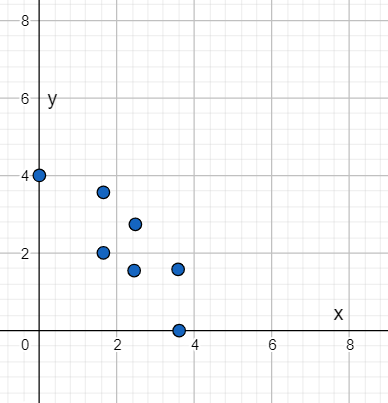
It is required to find the best-fit line for the plot.
Plot the line y = −x + 4 in the given scatter plot.
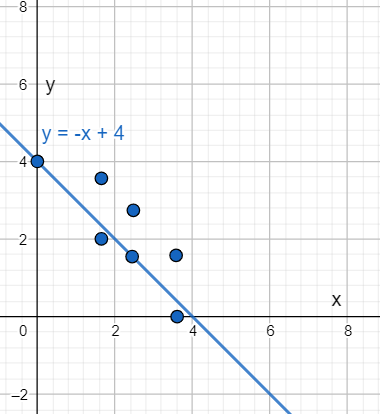
As y = −x + 4 satisfies most points of the plot. So, option (B) is the correct answer.
For option (A),
Plot y = x + 4 in the given scatter plot.
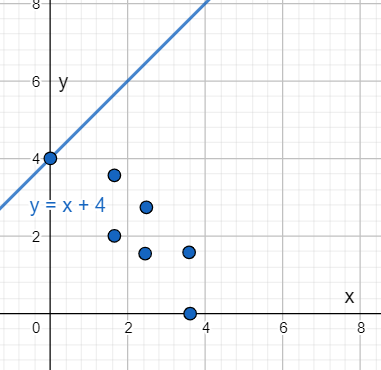
As y = x + 4 does not satisfy most points of the plot. So, option (A) is the incorrect answer.
For option (C)
Plot y = x + 3 in the given scatter plot.
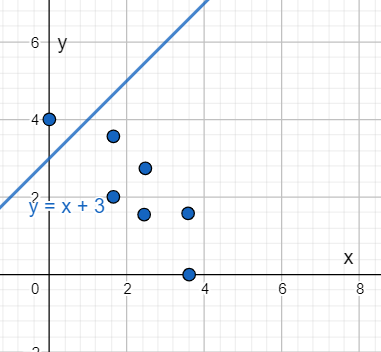
As y = x + 3 does not satisfy most points of the plot. So, option (C) is the incorrect answer.
For option (D).
Plot y = −x + 3 in the given scatter plot.
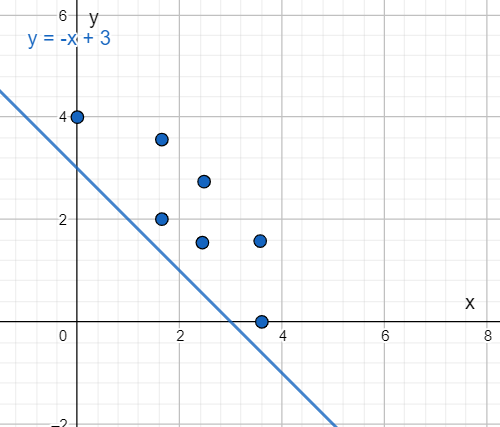
As y = −x + 3 does not satisfy most points of the plot. So, option (D) is the incorrect answer.
x+4 satisfies most points of the scatter plot. So, option (B) is the correct answer.
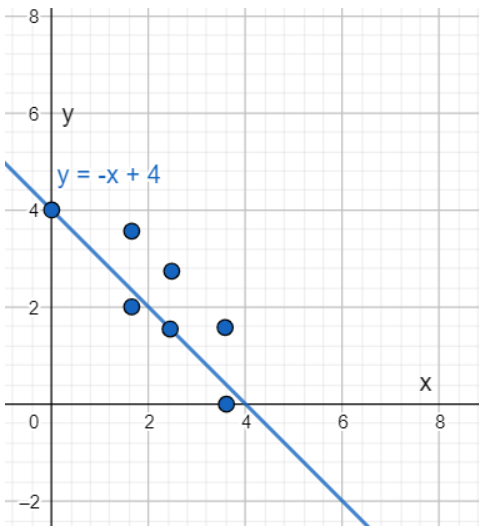
Page 43 Exercise 12 Answer
⇒ \(\frac{3}{2}\), -√7, -2, -√9, \(\frac{2}{3}\), 1 are given.
It is required to order them from least to greatest.
To find the correct order of increasing numbers, convert the irrational numbers to decimals by approximation, and compare the numbers.
Estimate the value of −√7
Since, 4 < 7 < 9
So,√4 < √7 < √9
2 < √7 < 3
Since 7 is a bit closer to 9 than 4.
So a good approximation, for −√7 is −2.6
Simplify the values of other numbers
⇒ \(\begin{aligned}
& \frac{3}{2}=1.5 \\
& -\sqrt{9}=-3 \\
& \frac{2}{3}=0.667
\end{aligned}\)
Compare the obtained values to get the results
Since, -3<-2.6<-2<0.667<1<1.5
So, the obtained results are as follows
The required order of the numbers from least to greatest is as follows.
-3 < -√7 < -2 < \(\frac{2}{3}\) < 1 < \(\frac{3}{2}\)
Envision Algebra 1 Assessment Readiness Workbook Student Edition Chapter 3 Page 44 Exercise 13 Answer
A dot plot is given in the question.
It is required to find the mean and median of the given dot plot to near the hundredth.
To find the required value, find the frequency of given data and then calculate the values of mean and median.
Express the frequency of the given data.
As 3 has 1 dot their frequency is 1.
Similarly, frequency distribution will be as follows.
3,4,4,5,5,6,7.7.7.7.8,8,8,8,8.
Calculate The mean of the given data
⇒ \(=\frac{3+4+4+5+5+6+7+7+7+7+8+8+8+8+8}{15}\)
⇒ \(=\frac{95}{15}\)
⇒ \(=\frac{19}{3}\)
= 6.333
Estimate the median of the given data.
Since 7 lies in the middle of the data 3,4,4,5,5,6,7.7.7.7.8,8,8,8,8.
So, 7 is the median of the given data.
The mean and the median of the given dot plot are 6.333 and 7 respectively.
Page 44 Exercise 14 Answer
In the question, the area of a rectangle is given by the expression 2x2 − 2x − 12, and the width of the rectangle is given by x−3.
It is required to find the length of this rectangle.
To find the length, first, factorize the area expression into a product of simpler expressions. Next, evaluate the terms of the factorized expression other than x−3
Factorize the expression.
Assume A(x) represents the area expression.
Given expression 2x2 -2x-12
Take 2 commons from each term
A(x)=2(x²-x-6)
Rewrite -x as 2x-3x
A(x) = 2(x(x+2)-3x-6
Take -3 common from the terms -3x and -6
A(x)=2(x(x+2)-3(x+2))
Take(x+2) common.
A(x)=2 (x+2(x-3)
Observe the factorized expression.
Use the formula for the area of a rectangle.
The width of the rectangle is x−3.
All the terms except x−3 represent the length of this rectangle.
Therefore, length is given by 2(x+2).
The length of the rectangle whose area is given by 2x2 − 2x − 12 is 2(x+2).
Page 44 Exercise 15 Answer
In the question, the given inequality is 3x + 2y < 3.
It is required to graph this inequality.
To create a graphical representation of this inequality, use a graphing utility and draw the graph.
Graph the inequality.
Use a graphing calculator.
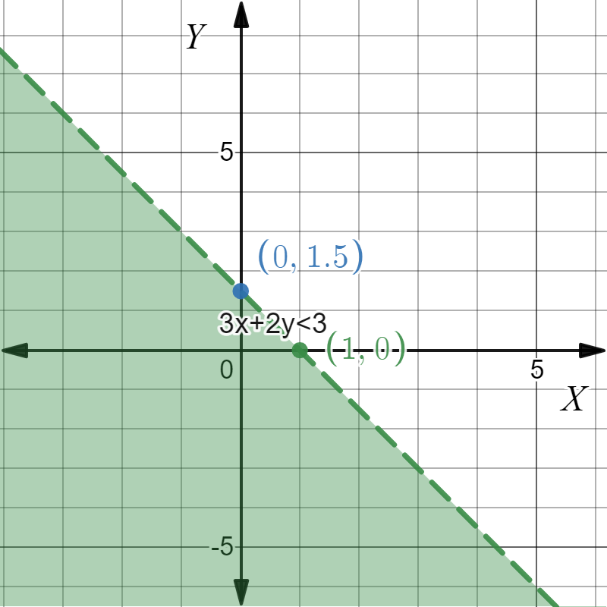
The graph of the inequality 3x + 2y < 3 is –

Page 44 Exercise 16 Answer
In the question, the function is given as f(x) = x2 + 4x + 2.
It is required to draw the graph for the given function.
To do so, find the different values and make the table for them. Then draw the graph by plotting the points and making a smooth curve that passes through those points.
Find the values of the function at different points to plot the graph.
Given function f(x)=x²+4x+2
At x=-4 the value of the equation
f(-4)=(-4)²+4(-4)+2
f(-4)=16-16+2
f(-4)=2
The value of the equation is 2
At x=-3 the value of the function
f(-3)=(-3)²+4(-3)+2
f(-3)=9-12+2
f(-3)=-1
The value of the equation is -1
At x=-2 the value of the function
f(-2)=(-2)²+4(-2)+2
f(-2)=4-8+2
f(-2)=-2
The value of the function is -2
At x=-1the value of the function
f(-1)=(-1)²+4(-1)+2
f(-2)=1-4+2
f(-2)=-1
The value of the function is -1
At x=0 the value of the function
f(0)=(0)²+4(0)+2
f(0)=2
The value of the function is 2
The values for the given function are shown in the table.

The graph for the values is shown below.
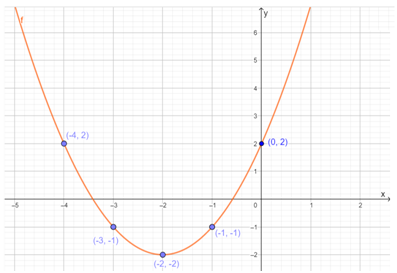
The graph for the given function is shown below.

Envision Algebra 1 Assessment Readiness Workbook Student Edition Chapter 3 Page 45 Exercise 17 Answer
In the question, the statement is given as a ball is thrown directly upward from a height of 25 feet with an initial velocity of 96 feet per second.
Also, the height of the h after t second is given as h = −16t2 + 96t + 25.
It is required to find the time taken by the ball to reach the maximum height. Also, it is required to explain it.
Also, it is required to find the maximum height of the ball. And it is needed to explain it.
To do so, find the time that passes from the start of throwing the ball until it comes to maximum height.
Since h describes the ball’s height above the ground, it is the maximum value when instantaneous velocity is equal to zero.
Find the instantaneous velocity by differentiating the equation of height and equate it to zero. Simplify the equation to get time to reach maximum height.
To find the maximum height, substitute the time in h and simplify it.
Find the time to reach maximum height.
Given h=-16t²+96t+25
Differentiate the given equation concerning t.
h'(t)=-16(2)t+96(1)+0
Hence the maximum height is 169 feet.
The ball will reach the maximum height after 3 seconds.
The maximum height is 169 feet.
Page 45 Exercise 18 Answer
In the question, the values for the function is given as

It is required to make a scatter plot of the data.
And also it is required to find the equation line that best fits.
To do so, use the points to locate them. Then draw the line through the maximum number of points on a scatter plot balancing about an equal number of points above and below the line.
The graph of the given values.
Plot the given points and join them.
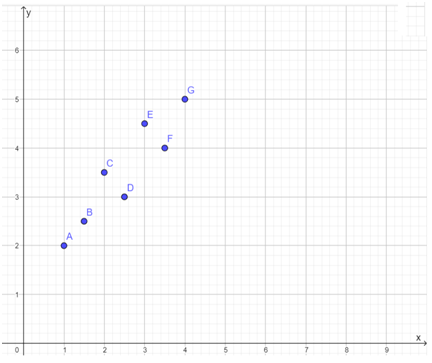
The line that fits scatter plots is shown below.
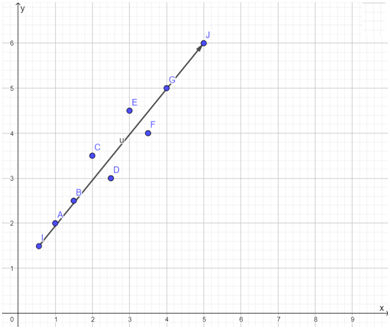
From the graph, the equation of the line is y = 2x.
The scattered plot of the given values is shown below.
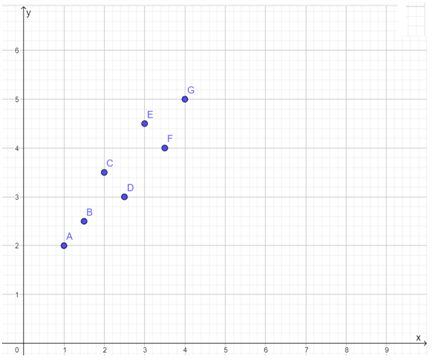
The line that fits scatter plots is shown below.
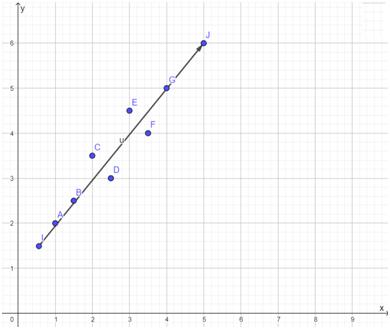
The equation of the line is y = 2x.
Envision Algebra 1 Assessment Readiness Workbook Student Edition Chapter 3 Page 46 Exercise 19 Answer
The length of the hypotenuse of a right triangle is given as 40 cm.
Also, the length of the one leg is given as 24 cm.
It is required to find the length of the other leg.
Let x be the length of the leg to be determined.
Substitute the values 24 for a, 40 for c, and x for b in the formula of Pythagoras.
Substitute a=24,b=xc=40
Hence the length of the other leg of the given right triangle is 32 cm.
Thus, the length of the other leg of the given right triangle is 32 cm in option (c).
The length of the other leg of the given right triangle is 20 cm
Thus, the length of the other leg in option (A) is not the correct answer.
The length of the other leg of the given right triangle is 28 cm
Thus, the length of the other leg in option (B) is not the correct answer.
The length of the other leg of the given right triangle is 36 cm
Thus, the length of the other leg in option (D) is not the correct answer.
The length of the other leg of the given right triangle is 32cm in option (c).
Page 46 Exercise 20 Answer
The quadratic equation is given as 3x2 + 5x − 5 = −1.
It is required to find the solutions of the given quadratic equation to the nearest hundredth.
To do so, substitute the value 3 for a, 5 for b, and, −4 for c.
Given 3x²+5x-5=1
Add-1 to the equation
3x²+5x-5+1=-1+1
simply above equation
3x²+5x-5+1=0
3x²+5x-4=0
Comparing a given quadratic equation
a=3,b=5,c=-4
substitute the values \(\begin{aligned}
& x=\frac{-5 \pm \sqrt{5^2-4(3)(-4)}}{2(3)} \\
& x=\frac{-5 \pm \sqrt{25+48}}{6} \\
& x=\frac{-5 \pm \sqrt{73}}{6}
\end{aligned}\)
The solutions of the given equation
⇒ \(\begin{aligned}
& x=\frac{-5+\sqrt{73}}{6} \\
& x=0.590 \text { and } \\
& x=\frac{-5-\sqrt{73}}{6} \\
& x=-2.257
\end{aligned}\)
The obtained solutions to the nearest hundredth is x = 0.590 and x = −2.26
Hence options (c) and (d) are correct answers.
From the results of the solution options (a),(b),(e) and (f) are not correct answers
The solutions of the given quadratic equation are options (c) and (d).
Page 46 Exercise 21 Answer
The graph is given as y = 2x − 4.
It is required to describe the given graph as a transformation of the graph y = 2x.
To do so, use the transformation rule. To describe the transformation translate the given graph to a specific unit.
Draw the graph y=x
S substitute x=0 in the equation of the function y=0
The function at x=0 is y=0
Substitute x=-1 in the equation of the function y=-1
The value of the function at c =-1 is y=-1
Substitute x=1 in the equation of the function.
y=1
The value of the function at x=1 is y=1.
From the above different values, the graph is shown below.
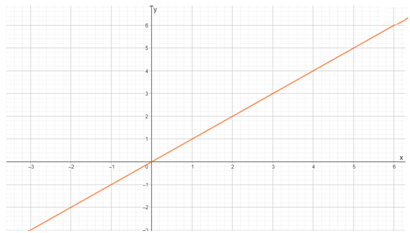
Draw the graph y=2x.
substitute x=o in the equation
From the above different values, the graph is shown below.
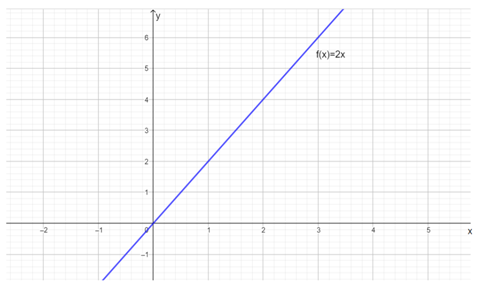
The graph y = 2x stretches the function y = x two times.
Draw the graph y=2x.
Substitute x=0 in the equation of the function y=0
From the above different values, the graph is shown below.
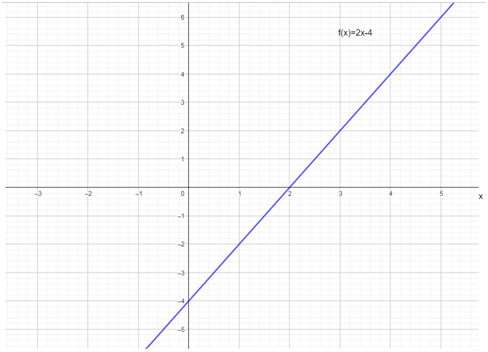
The graph y = 2x − 4 translates vertically the function
y = 2x down 4 units.
Thus, y = 2x − 4 translates vertically the function
y = 2x down 4 units.
The graph y = 2x − 4 translates vertically the function
y = 2x down 4 units.
The correct option is option (A).
Envision Algebra 1 Assessment Readiness Workbook Student Edition Chapter 3 Page 46 Exercise 22 Answer
In the question, the inequality is given as −4x−3 < 13.
It is required to draw a graph of the inequality.
To do so, solve the inequality x. Then using that value plot the graph.
Solve for x.
Given -4x-3<13
Add 3 on both sides
-4x-3+3<13+3
Simplify the above inequality.
-4x<16
Divide 4 on both sides
⇒ \(\begin{aligned}
-\frac{4 x}{4} & <\frac{16}{4} \\
x & <-4
\end{aligned}\)
Therefore, the range is given as x∈(−4,∞)
The graph of the given inequality is shown below.

The graph of the given inequality is shown below.

Page 46 Exercise 23 Answer
The values for the function is given as

It is required to find the equation of the function from the given options.
To do so, substitute the values of x in the given options and check the values of y.
Compare the values obtained with the table given.
Consider the equation y=-x+2
substitute the value x=-2 in equation
y=-(-2)+2
y=4
Substitute the value x=-1 in question
The value y obtained is equal to the value in the table.
Therefore option (d) is the answer.
Consider the equation y = 2x.
Substitute the value x = −2 in the equation.
y = 2(−2)
y = −4
The value y obtained is not equal to the value in the table.
Therefore option (a) is not the answer.
Consider the equation y = −2x.
Substitute the value x = −2 in the equation.
Substitute the value x = −1 in the equation.
y = −2(−1)
y = 2
The value y obtained is not equal to the value in the table.
Therefore option (b) is not the answer.
Consider the equation y = x + 2.
Substitute the value x = −2 in the equation.
y = −2 + 2
y = 0
The value y obtained is not equal to the value in the table.
Option (d) is the answer.
Page 46 Exercise 24 Answer
In the question, the principal amount is given as $325 and the interest 5 is paid quarterly.
It is required to find the amount to be obtained after 5 years.
To do so, use the amount formula.
Substitute the values $325 for P, 5 for r, 5 for t, and 4 for n in the formula and simplify it.
Find the amount.
⇒ \(A=325\left(1+\frac{5}{100 \times 4}\right)^{4(5)}\)
Simply above equation
⇒ \(A=325\left(1+\frac{5}{400}\right)^{20}\)
Take LCM 400 in the equation
⇒ \(\begin{aligned}
& A=325\left(\frac{400+5}{400}\right)^{20} \\
& A=325\left(\frac{405}{400}\right)^{20}
\end{aligned}\)
Simplify the above equation
A=325(1.0125)20
A=325(1.2820)
A=416.662
Hence the amount obtained after 5 years is $416.662
The amount obtained after 5 years is $416.662.
Envision Algebra 1 Student Edition Chapter 3 Practice Problems
Envision Algebra 1 Assessment Readiness Workbook Student Edition Chapter 3 Page 47 Exercise 25 Answer
The graph is given as y = \(\sqrt[3]{2 x}\)
It is required to describe the given graph as a transformation of the graph y = \(\sqrt[3]{x}\)
To do so, use the transformation rule. To describe the transformation translate the given graph to a specific unit.
Draw the graph y=\(y=\sqrt[3]{x}\)
When x=-1 the value of the function is
The graph for the different values of the function is given below.
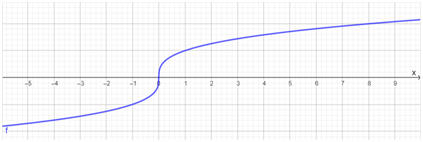
Draw the graph \(y=\sqrt[3]{2 x}\)
When x=-1 the value of the function is \(\begin{aligned}
& y=\sqrt[3]{2(-1)} \\
& y=1.2599
\end{aligned}\)
When x=0 the value of the function is
⇒ \(\begin{aligned}
& y=\sqrt[3]{0} \\
& y=0
\end{aligned}\)
When x=1 the value of the function is
⇒ \(y=\sqrt[3]{2}\)
The graph for the different values of the function is given below.

The graph y = \(\sqrt[3]{2 x}\) translates a horizontal stretch of the function
y = \(\sqrt[3]{x}\) by 2 units.
Thus, the graph of the function y = \(\sqrt[3]{2 x}\) translates a horizontal compress of the function
y = \(\sqrt[3]{x}\) by 2 units.
Therefore option (B) is the correct answer.
The correct option is option (B).
Page 47 Exercise 26 Answer
In the question, the given system of equations is y = 2x − 3 and y = x + 4.
It is required to find the solution to this system of equations.
To find the solution to these equations, use the method of substitution i.e., substitute one variable as a function of another variable to one of the equations. Next, solve for one variable and substitute its value in any one equation to find the value of the other variable.
Find the value of x.
Consider the equation y=2x-3
substitute x+4 for y
x+4=2x-3
Subtract 4 on both sides
x+4-4=2x-3-4
x=2x-7
Multiply -1 on both sides
-(-x)=-(-7)
x=7
Find the value of y
Consider the equation y=2x-3
Substitute 7 for x
y=2(7)-3
y=14-3
y-11
Therefore, the solution for this system of equations is x = 7 and y = 11.
The solution to this system of equations is x = 7 and y = 11.
Envision Algebra 1 Assessment Readiness Workbook Student Edition Chapter 3 Page 47 Exercise 27 Answer
In the question, the transformation of a parent function y = √x is shown below –
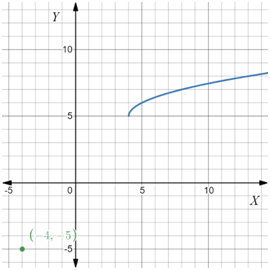
It is required to identify which equation represents this transformation.
y = √x − 4 + 5
Draw the graph of the parent function y = √x using a graphing calculator.
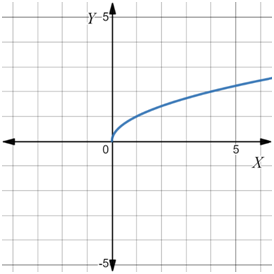
The graph of the parent function starts from the origin.
Transform this as per the given graph.x → x − 4, as the origin shifts 4 along the positive X-axis, and y → y − 5, as the origin shifts 5 along the positive Y-axis.
y= \(y=\sqrt{x-4}+5\)
Substitute x-4 for x and y-5 for y
⇒ \(y-5=\sqrt{x-4}\)
Add 5 on both sides
y-5+5= \(\sqrt{x-4}+5\)
y= \(\sqrt{x-4}+5\)
Therefore, Option (B) is the correct answer.
y = √x+4 – 5
Draw the graph of y = √x+4 – 5 using a graphing calculator.
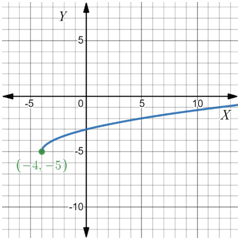
The y = √x+4 − 5 graph does not resemble the transformed graph.
Therefore, Option (A) is not a correct answer.
y = √x-5 + 4
Draw the graph of y = √x-5 + 4 using a graphing calculator.
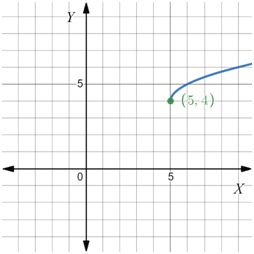
The y = √x−5 + 4 graph does not resemble the transformed graph.
Therefore, Option (C) is not a correct answer.
y = √x−5 + 4
Draw the graph of y = √x−5 + 4 using a graphing calculator.
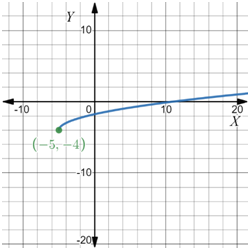
The y = √x+5 − 4 graph does not resemble the transformed graph.
Therefore, Option (D) is not a correct answer.
Option (B) y = √x−4 + 5 is an equation for the given transformation of the graph of the parent function y = √x.
Page 47 Exercise 28 Answer
In the question, it is given that a cylinder has a volume of 648πft3 and a height of 18ft.
It is required to find the diameter of this cylinder.
To find the diameter, use the formula for the volume of a cylinder and substitute the values of height and volume.
Find the radius of the base.
Consider the formula for the volume of a cylinder.
Substitute 648π for v and 18 for h
648π= πr² x 18
Divide by 18π on both sides
⇒ \(\begin{aligned}
\frac{648 \pi}{18 \pi} & =\frac{\pi^2 \times 18}{18 \pi} \\
36 & =r^2
\end{aligned}\)
Take square root on both sides
\(\begin{aligned}& r=\sqrt{36} \\
& r=6 \mathrm{ft}
\end{aligned}\)
Find the diameter of the cylinder
consider the relation d=2r
Substitute 6 for r
d=2(6)
Therefore, the diameter of the given cylinder is 12 feet.
The diameter of a cylinder that has a volume of 648πft3 and a height of 18ft is 12 feet.
Page 48 Exercise 31 Answer
In the question, a set of ages of the members of a sailing club is given as follows –
18,19,24,28,33,37,42, and 46.
It is required to find the change in the mean, median, mode, and range of the ages of the club if a man 42 years old joins the club.
To find the change in the mean, median, mode, and range of the ages of the club, first, find these values for the given dataset.
Next, find these values by adding 42 of them to this dataset. Finally, compare the two values to find the change.
Find the change in the mean.
There are 8 age values at the beginning.
Use the definition of mean.
Mean1 \(=\frac{18+19+24+28+33+37+42}{8}\)
Add the terms
Mean1= \(\frac{247}{8}\)
Divide the numerator by denominatortor
Mean1 =30.88
Add 42 and recalculate the mean
⇒\(\text { Mean }_2=\frac{18+19+24+28+33+42+46+42}{9}\)
Add the terms
⇒ \(\text { Mean }_2=\frac{289}{9}\)
⇒ \(\text { Mean }_2=\frac{289}{9}\)
Divide the numerator by denominator
Mean2=32.11
The change in the mean is
Mean2-mean1 = 32.11-30.88
= 1.23
Therefore, in general, the mean of this data set increases by 1.23.
Find the change in the median.
Arrange the terms in increasing order.
18,19,24,28,33,37,42,46
The middle values are 28 and 33.
Use the definition of the median for an even number of terms.
Median1 = \(\frac{28+33}{2}\)
Add the terms.
Median1 = \(\frac{61}{2}\)
Divide the numerator by denominator.
Median1 = 30.5
Add 42 to this set of values and recalculate the median.
Arrange the terms in increasing order.
18,19,24,28,33,37,42,42,46
The middle term is 33.
Use the definition of the median for an odd number of terms.
Median2 = 33
The change in the median is –
Median2 − Median1 = 33 − 30.5
= 2.5
Therefore, in general, the median of this dataset increases by 2.5.
Find the mode change.
Use the definition of mode.
None of the numbers are repeating in the data set.
No mode for the list at the beginning.
Add 42 to this set of values and recalculate the median.
18,19,24,28,33,37,42,42,46
42 is the only repeating value in this data set.
The mode of the new dataset is 42.
Therefore, in general, the data set changes from no mode value to 42 as the new mode value.
Find the change in range.
The maximum and minimum value in the given data set is 46 and 18 respectively.
Use the definition of the range.
Range = 46 − 18
Subtract the terms.
Range1 = 28
Add 42 to this set of values and recalculate the median.
The maximum and minimum value remains the same.
Therefore, no change in the range of the ages.
The mean of the ages of the members of a sailing club increases by 1.23 when a new member 42 years old join the club.
The median of the ages of the members of a sailing club increases by 2.5 when a new member 42 years old join the club.
The mode of the ages of the members of a sailing club changes from no mode to a value 42 when a new member 42 years old join the club.
The range of the ages of the members of a sailing club remains unchanged when a new member 42 years old join the club..
Envision Algebra 1 Assessment Readiness Workbook Student Edition Chapter 3 Page 48 Exercise 32 Answer
In the question, an expression is given by 8x4 − 4x3 − 24x2.
It is required to find the factored form of this expression.
To find the factored form, take common variables and numbers in one parenthesis and the rest in another. Finally, form a product of two simplest forms of expressions.
Write the factored form.
Consider the given expression.
Take a common 4x2 from each term of the expression.
Given 8x4-4x3-24x2
Take common 4x2
4x2(2x2-x-6)
Rewrite -x as -4x+3x
4x2(2×2-4x+3x-6)
take common 2x and 3
Take (x-2) Common
4x2 (x-2)(2x+3)
Therefore, the factored form of the given expression is 4x2(x−2)(2x+3).
The factored form of the expression 8x4 − 4x3 − 24x2 by taking common terms outside of the parenthesis and rewriting the quadratic equation as a product of two simple expressions is given by 4x2(x−2)(2x+3).
Page 48 Exercise 33 Answer
In the question, it is given that for an obtuse triangle the measure of the angle A is twice the measure of an angle B and the measure of the angle C is 30° greater than the measure of the angle B.
It is required to find the measure of all three angles.
To find the measure of all three angles, use the concept of the sum of measures of the angles inside a triangle. Next, apply the conditions to make the equation with only one unknown value. Finally, find the one unknown value and solve for the rest of the angles.
Find the measure of the angle B.
Use the concept of the sum of the measures of a triangle.
M∠A+M∠B+M∠C=180°
Apply the given conditions
M∠A=2m∠B and
M∠C=m∠B+30°
Substitute 2m∠B for m∠A and m∠B +30° for m∠c.
2m∠B+m∠B+m∠B+30°=180°
Subtract 30° from both sides
2m∠B+m<B+m<B+30°-30°=180°-30°
2m∠B+m∠B+m∠B=150°
4m∠B=150°
Divide by 4 on both sides
\(\frac{4 m \angle B}{4}=\frac{150^{\circ}}{4}\)∴ The measure of the angle B is 3.75°
Find the measure of the angle A.
The measure of the angle A is two times the measure of the angle B.
Substitute 37.5∘ for m∠B.
m∠A = 2m∠B
m∠A = 2(37.5)
Multiply the terms.
m∠A = 75°
Therefore, the measure of the angle A is 75°.
Find the measure of the angle C.
The measure of the angle C is 30° greater than the measure of the angle B.
Substitute 37.5° for m∠B.
m∠C = m∠B + 30°
m∠C = 37.5° + 30°
Add the terms.
m∠C = 67.5°
Therefore, the measure of the angle C is 67.5°.
The measure of the angle is 75°.
The measure of the angle B is 37.5°.
The measure of the angle C is 67.5°.
Page 48 Exercise 34 Answer
In the question, the given function is f(x) = 4x2 − 10x − 6.
It is required to find the zeros of this function.
To find the zeros of the given function, first, equate it zero. Next, find the type of equation and determine the roots.
Find the zeros of the function.
Use the definition of zeros of the function.
Equate the given function to zero.
Given f(x)= 4x²-10x-6
⇒ \(x=\frac{10 \pm \sqrt{(10)^2-4(4)(-6)}}{2(4)}\)
⇒ \(x=\frac{10 \pm \sqrt{(10)^2+4(4)(6)}}{8}\)
⇒ \(x=\frac{10 \pm \sqrt{100+96}}{8}\)
⇒ \(x=\frac{10 \pm \sqrt{196}}{8}\)
⇒ \(x=\frac{10 \pm 14}{8}\)
Therefore, the solutions are
x = \(\frac{10+14}{8}\) and x = \(\frac{10-14}{8}\)
x = \(\frac{24}{8}\) x = \(\frac{-4}{8}\)
x = 3 x = -0.5
Therefore, the zeros of the function are 3 and −0.5.
Envision Algebra 1 Assessment Readiness Workbook Student Edition Chapter 3 Page 49 Exercise 35 Answer
In the question, it is given that Dalia has a combination of 24 nickels and quarters for a total of $2.60.
It is required to write a system of equations and determine the number of each type of coin Dalia has.
To write the system of equations, take the number of nickels as x and the number of quarters as $y$ and apply the conditions.
Next, find the number of nickels and quarters by solving this system of equations.
Write the system of equations.
Take the number of nickels as x and the number of quarters as y.
Dalia has a combination of 24 nickels and quarters.
Use this condition and write the first equation.
x + y = 24
1 nickel equals$0.05 and 1 quarter equals $0.25.
Dalia has a total of $2.60.
The sum of x times $0.05 and y times $0.25 will be $2.60.
Use this condition and write the second equation.
0.05x + 0.25y = 2.60
Therefore, the system of equations is x + y = 24 and 0.05x + 0.25y = 2.60.
Find the number of each type of coin.
Use the system of equations from the previous step.
Consider the equation 0.05+0.25y=2.60
Substitute 24-y in x
0.05(24-y)+0.25y=2.60
Simply the parenthesis
1.20-0.05y+0.25y=2.60
Subtract 1.20 from both sides
1.20-0.05y-1.20+0.24y=2.60-1.20-0.05y+0.25y=1.40
The system of equations to determine the type of each coin Dalia has is given by –
x + y = 24 and 0.05x + 0.25y = 2.60
Dalia has 17 nickels and 7 quarters for a total of $2.60.
How To Solve Envision Algebra 1 Chapter 3 Questions
Page 49 Exercise 36 Answer
In the question, the given piecewise-defined function is –
f(x) = \(\left\{\begin{array}{l}
\frac{3}{2} x-4 ; x<0 \\
\frac{1}{3} x-4 ; 0 \leq x<6 \\
2 x-10 ; x>6
\end{array}\right.\)
It is required to graph this function.
To create a graphical representation of this piecewise-defined function, use a graphing utility and draw the graph.
Graph the given function.
Use a graphing calculator.
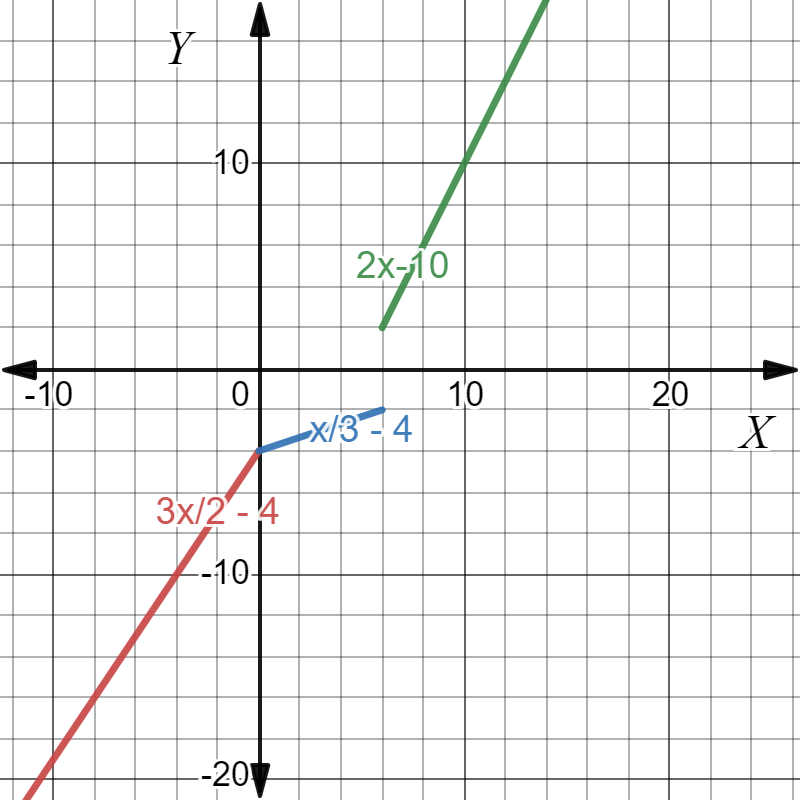
The graph of the given piecewise-defined function is –

In the question, the given piecewise-defined function is –
f(x) = \(\left\{\begin{array}{l}
\frac{3}{2} x-4 ; x<0 \\
\frac{1}{3} x-4 ; 0 \leq x<6 \\
2 x-10 ; x>6
\end{array}\right.\)
It is required to find the domain and range of this function.
To find the domain of this function, observe the graph of the function from the previous part of this problem and write all the possible inputs for x. Next, to find the range of this function, check for all the possible values of f(x).
Find the domain.
Observe the graph from the previous part of this problem.

The function is stretched for all the values of x except 6.
Therefore, the domain of the function is (−∞,6)∪(6,∞).
Find the range.
Observe the graph from the previous part of this problem.

The function is undefined for the interval (−2,2).
Therefore, the range of the function is (−∞,−2)∪(2,∞).
The domain of the given piecewise-defined function is (−∞,6)∪(6,∞).
The range of the given piecewise-defined function is (−∞,−2)∪(2,∞).
In the question, the given piecewise-defined function is –
f(x) = \(\left\{\begin{array}{l}
\frac{3}{2} x-4 ; x<0 \\
\frac{1}{3} x-4 ; 0 \leq x<6 \\
2 x-10 ; x>6
\end{array}\right.\)
It is required to determine the interval for increasing or decreasing of this function.
To find the interval of increasing or decreasing, check for the slope of the line for each interval.
Check the function for x < 0.
The piecewise-defined function for this interval is f(x) = \(\frac{3}{2}\)x – 4.
Compare with the general equation of a line.
m = \(\frac{3}{2}\).
The slope of the line represented by this function is positive.
Therefore, the function is increasing for the interval (−∞,0).
Check the function for 0 ≤ x < 6.
The piecewise-defined function for this interval is f(x) = \(\frac{1}{3}\)x – 4.
Compare with the general equation of a line.
m = f(x) = \(\frac{1}{3}\).
The slope of the line represented by this function is positive.
Therefore, the function is increasing for the interval [0,6).
Check the function for x > 6.
The piecewise-defined function for this interval is f(x) = 2x − 10.
Compare with the general equation of a line.
m = 2.
The slope of the line represented by this function is positive.
Therefore, the function is increasing for the interval (6,∞).
The given piecewise-defined function is increasing for the interval (−∞,6)∪(6,∞).
Envision Algebra 1 Chapter 3 Step-By-Step Solutions
Page 50 Exercise 1 Answer
In the question, it is given that a high school rectangular parking lot 400ft long and 250ft wide is expanded to double the area by increasing both its length and width by (x)ft.
It is required to draw a diagram that represents the original rectangular parking lot as well as the expanded parking lot with all the labeling.
To draw a rectangular parking lot, first, draw a rectangle that measures 400ft by 250ft. Next, draw a larger parking lot around the original such that the length and the width of the new rectangle are (x)ft more.
Draw the original parking lot.
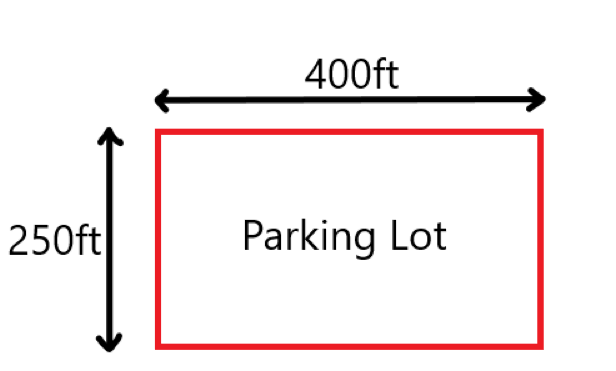
Draw the expanded parking lot.
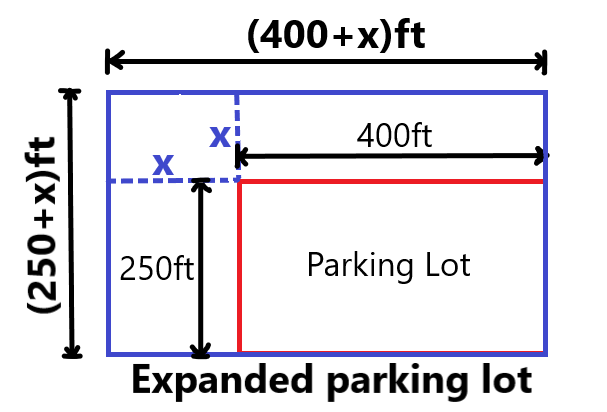
The diagram of the original parking lot is –

The diagram of the expanded parking lot is –

In the question, it is given that a high school rectangular parking lot 400ft long and 250ft wide is expanded to double the area by increasing both its length and width by (x)ft.
It is required to form an equation that can be used to find x and solve the equation. It is also required to round the answer to the nearest 10ft.
To form an equation, first, find the area of the original parking lot using the formula for the area of a rectangle. Next, increase the length and the width by x and find the area equation for the expanded parking lot.
Finally, double the area substitute this value in the area equation and find the value of x.
Find the area of the original parking lot.
The length is 400ft and the width is 250ft.
Use the formula for the area of a rectangle.
Therefore, the area of the original parking lot is 100000 square feet.
The length and the width are increased by (x)ft.
The new length of the parking lot is (400+x)ft and the width is (250+x)ft.
Use the formula for the area of a rectangle.
Therefore, the area of the original parking lot is given by A = x2 + 650x + 100000.
Double the original parking lot area.
The area of the original parking lot is 100000ft2.
The area of the expanded parking lot is twice this area.
The area of the expanded parking lot is twice this area
Multiply 100000 by 2
A= 100000×2
A=200000
Substitute A= 20000=x2+650x+100000
Subtract 200000 from both sides
x2+650x+100000-2000000= 100000- 200000
x2+650x+100000=0
Therefore, the equation for the area of the expanded parking lot is given by x2 + 650x − 100000 = 0.
Solve the equation.
Compare the equation with the general form of a quadratic equation.
a=1
b=650
c=-100000
Use the formula for the roots of a quadratic equation
⇒ \(x=\frac{-650 \pm \sqrt{(650)^2-4(-100000)}}{2}\)
Multiple The terms -4 and -100000
⇒ \(x=\frac{-650 \pm \sqrt{(650)^2+400000}}{2}\)
Simply the square root
⇒ \(x=\frac{-650 \pm 906.92}{2}\)
Therefore, the roots of this equation are x = 128.46 and x = −778.46.
Round of the x value.
To increase the size of the lot, the only positive value of x is taken.
Round the value 128.46 to the nearest 10.
Therefore, the value of x is 130ft.
The equation that can be used to find the x value is given by x2 + 650x − 100000 = 0
The value of x after rounding off to the nearest 10 is 130ft.
In the question, it is given that a high school rectangular parking lot 400ft long and 250ft wide is expanded to double the area by increasing both its length and width by (x)ft.
It is required to find the area of the new portion of the expanded parking lot and find the perimeter of the new parking lot.
To find the area of the new portion, first, calculate the area of the expanded parking lot using the value of x from the previous part of the problem. Next, subtract the area of the original parking lot from this new area value. Finally, to find the perimeter of the new parking lot, calculate the new length and width of the rectangle using the formula for the perimeter of a rectangle.
Calculate the area of the new parking lot.
The value of x from the previous part of the problem is 130ft.
The new length and the new width of the rectangle will be 400 + 130 = 530ft and 250 + 130 = 380ft respectively.
Use the formula for the area of a rectangle.
Substitute 530 for l and 380 for b.
A = 530 × 380
Multiply the terms.
A = 201400ft2
Therefore, the area of the expanded parking lot is 201400ft2.
Find the area of the new portion.
The area of the original rectangular parking lot is 100000ft2.
Use the formula for the area of an expanded portion.
Substitute 201400 for Aexp and 100000 for Aorg.
Aportion = 201400 − 100000
Subtract the terms.
Aportion = 101400ft2
Therefore, the area of the new portion is 101400ft2.
Find the perimeter.
The new length and the new width of the rectangle will be 400 + 130 = 530ft and 250 + 130 = 380ft respectively.
Use the formula for the perimeter of a rectangle.
Substitute 530 for l and 380 for b.
P = 2(530+380)
Add the terms inside the parenthesis.
P = 2(910)
Multiply the terms.
P = 1820ft
Therefore, the perimeter is 1820ft.
The area of the new portion of the expanded parking lot is 101400ft2.
The perimeter of the new parking lot is 1820ft.
In the question, it is given that a high school rectangular parking lot 400ft long and 250ft wide is expanded to double the area by increasing both its length and width by (x)ft
It is also given that cost of expanding the lot is $1.50 per square foot of new space and the cost of fencing is $20 per foot.
It is required to find the estimated cost of expanding and fencing in the new lot.
To find the estimated cost of expanding, multiply the cost for per square foot to the area of the new portion of the expanded parking lot. Next, to find the cost of fencing in the new lot, multiply the perimeter of the new lot to the fencing cost for per foot distance.
Calculate the cost of expanding.
The area of the new portion of the expanded lot from the previous part of the problem is 101400ft2.
The cost of expanding the parking lot is $1.50 per square foot of new space.
Multiply 101400 by 1.50.
101400 × 1.50 = 152100
Therefore, the cost of expanding the parking lot $152100.
Calculate the cost of fencing.
The perimeter of the new parking lot from the previous part of the problem is 1820ft.
The cost of fencing is $20 per foot.
Multiply 1820 by 20.
1820 20 = 36400
Therefore, the cost of fencing the new parking lot $36400.
The cost of expanding the parking lot is $152100.
The cost of fencing the new parking lot $36400.
In the question, it is given that a high school rectangular parking lot 400ft long and 250ft wide is expanded to double the area by increasing both its length and width by (x)ft. It is also given that the school has only enough money to pay for half the estimated cost, and thus the parking stickers worth $150 to students and $250to faculties are needed to be sold.
It is required to find the number of student and faculty stickers the school must sell.
To find the number of stickers the school must sell, take the number of student stickers as x and take the number of faculty stickers as y. Next, form an equation with the given condition of the price of stickers and the amount needed for expanding and fencing.
Form an equation.
The total cost of expanding and fencing the lost is 152100 + 36400 = $188500.
Half of the total estimated cost is $94250.
Assume the number of student stickers needed to sell is x and the number of faculty stickers needed to sell is y.
Each student sticker is worth $150 and each faculty sticker is worth $250.
Multiply x by 150 and y by 250.
150x + 250y
Equate 150x + 250y to half of the estimated value.
150x + 250y = 94250
Therefore, the amount raised by selling parking stickers is given by 150x + 250y = 94250.
Find the number of each sticker for one value of x.
The equation to find the number of each sticker is 150x + 250y = 94250.
150(300)+250y=94250
Multiply the terms 150 and 300
45000+250y=94250
Subtract 45000 from both sides
45000-45000+250y=94250-45000
250y=49250
Divide by 250 from both sides
⇒ \(\frac{250 y}{250}=\frac{49250}{250}\)
y=197
Find the number of each sticker for another value of x
The equation to find the number of each sticker is 150x+250y=94250
Take 200 as the value of x.
150(200)+250y =94250
30000+250y=94250
Subtract 30000 from both sides
30000-30000+25y=94250-30000
250y=64250
Divide by 250 from both sides
⇒ \(\frac{250 y}{250}=\frac{64250}{250}\)
y=257
Find the nature of the number of each sticker.
When the value of x increases, the value of y decreases.
When the value of x decreases, the value of y increases.
There are no specific values for the number of student stickers and the number of faculty stickers.
There are multiple possible values for each type of sticker.
There is no specific number of student stickers and faculty stickers that the school must sell to raise half of the estimated cost of the expansion and fencing.
There are multiple possible answers to this problem as the number of student stickers and the number of faculty stickers are relative.

